One of my favorite things about my vegetable garden is not the vegetables themselves, but the edible flowers that I grow right in the middle of it!
I have a huge bed filled with edible flowers, most of them perennial, and I grow more edible flowers as annuals tucked in the corners and along the edges of my raised beds next to my tomatoes, zucchini, melons, peppers, and salad greens.
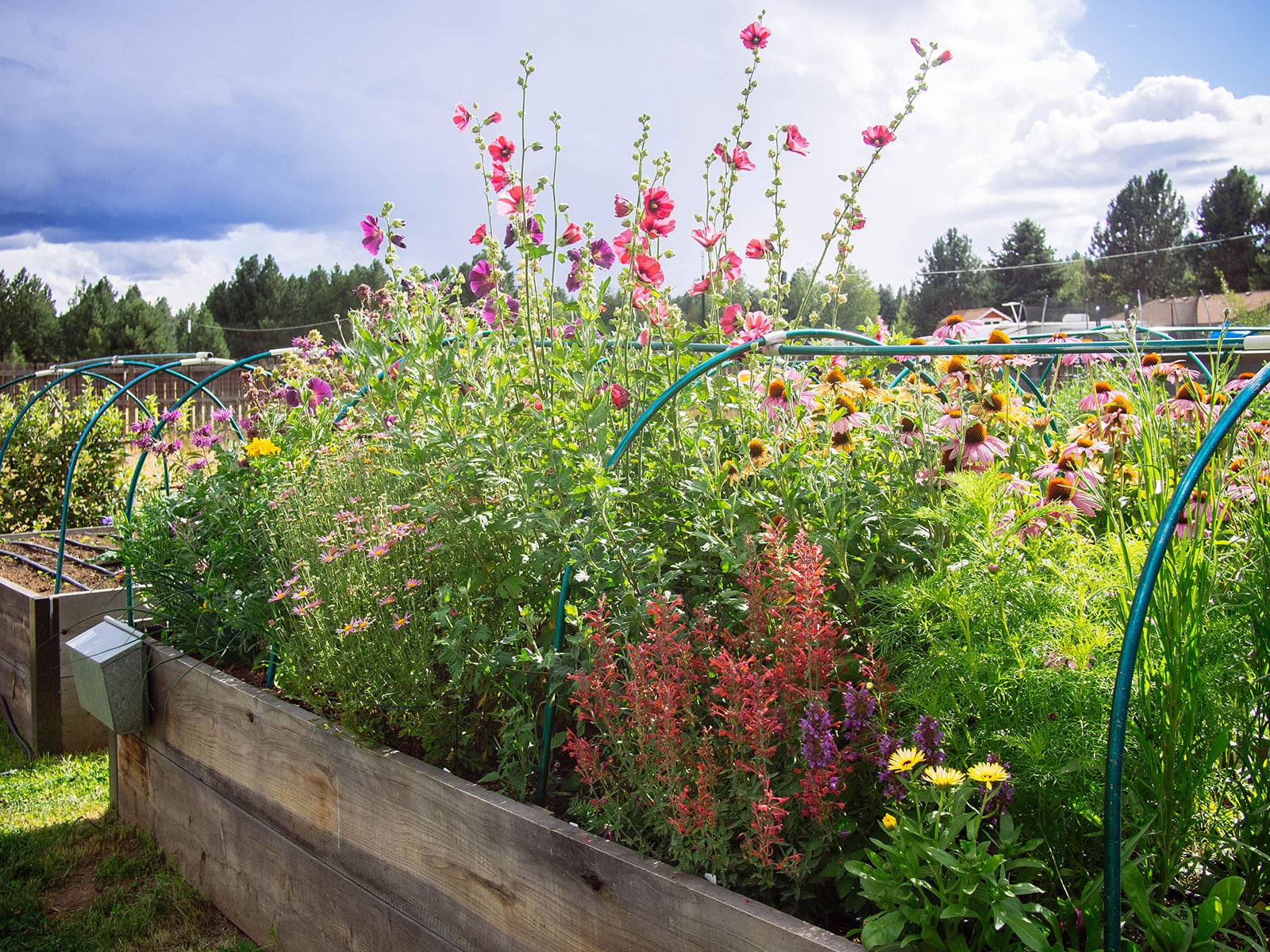
Flowers are an important but often overlooked part of a kitchen garden. Not only are they a critical food source for pollinators, they attract plenty of other beneficial insects, act as trap crops to reduce pests, and of course, they’re another harvest I can add to my basket. (I’m obsessed with adding them to almost every meal!)
But even if you don’t have a vegetable garden, edible flowers are a worthy addition to your landscaping. I’ll bet that you already grow some of the ones on this list and had no idea you could eat them!
So what do they taste like?
Most flowers tend to be fairly subtle in flavor, though I will say that if you don’t have an affinity for earthy or mildly bitter greens (such as kale, collards, radicchio, and the like), your edible flower options will be more limited. You can counter this by picking flowers when they’re immature, as they tend to be milder at this stage, or picking off the petals to eat, as the green sepals tend to be the most bitter part of the flower.
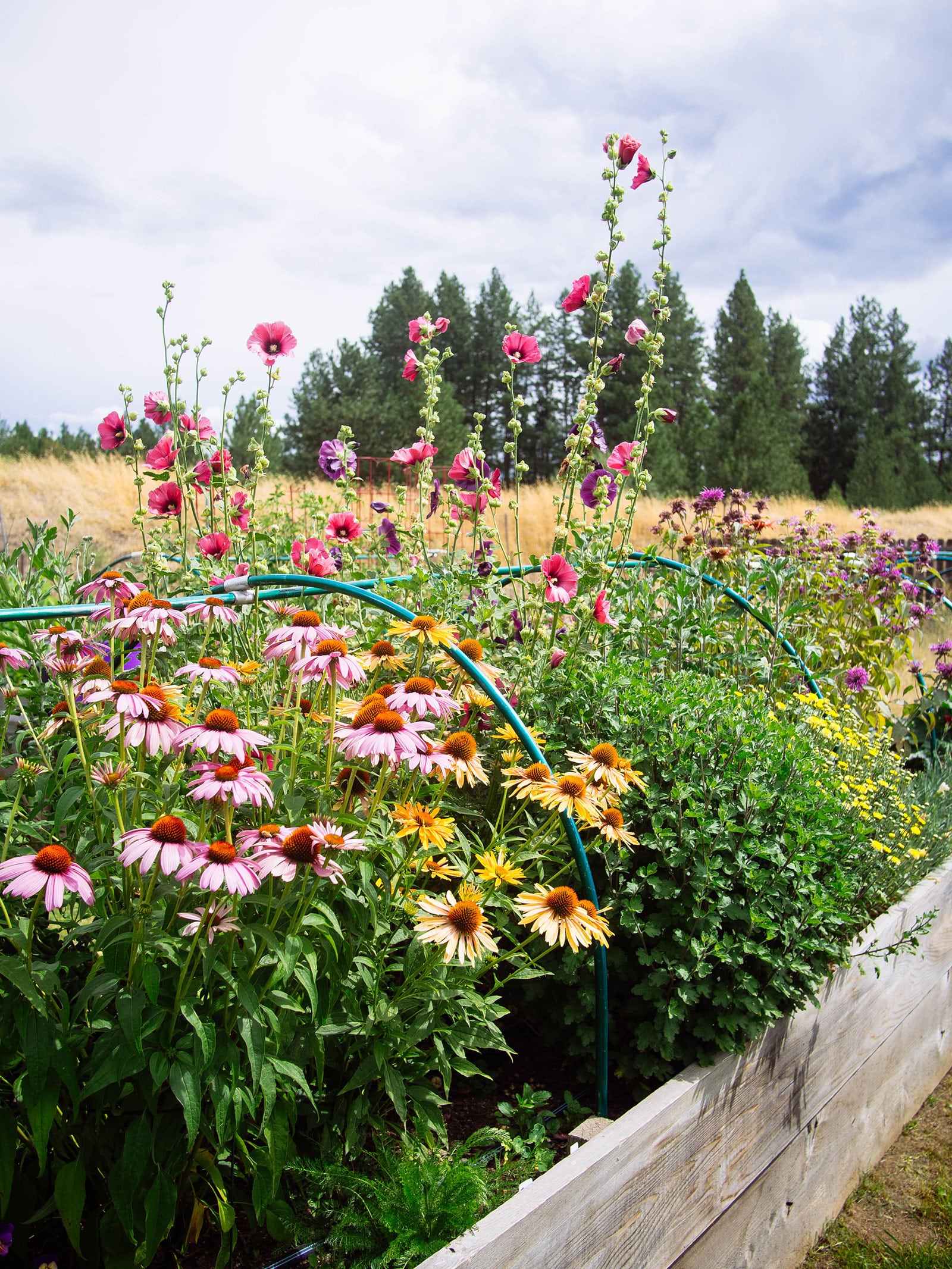
Disclosure: If you shop from my article or make a purchase through one of my links, I may receive commissions on some of the products I recommend.
A few tips before you start sampling:
- Flowers should be eaten in moderation
- Avoid any flowers that have been treated with pesticides
- Avoid harvesting flowers in the wild unless you’re an experienced forager (as there may be toxic lookalikes)
- Be certain of the variety you’re harvesting; I include botanical names for all flowers listed, since some plants share common names and not all species may be edible
- People with allergies or sensitivities may experience adverse reactions, so please use common sense and eat at your own risk
Where to buy
Flower seeds
The list below was compiled from all the flowers I’ve personally tasted over the years, but it’s far from being an exhaustive list of edible flowers. Just the ones I think are worthy of trying and what can easily be grown in a home garden!
Agastache (Agastache spp.)

Anise hyssop (Agastache foeniculum, also known as licorice mint) and purple giant hyssop (Agastache rugosa, also known as Korean mint) are two of my favorite edible flowers from the genus Agastache, though all common garden varieties are edible. (You’ll sometimes see them labeled as hummingbird mint.) The minty-sweet flowers (and leaves) can be used to flavor salads and herbal teas.
Allium (Allium spp.)
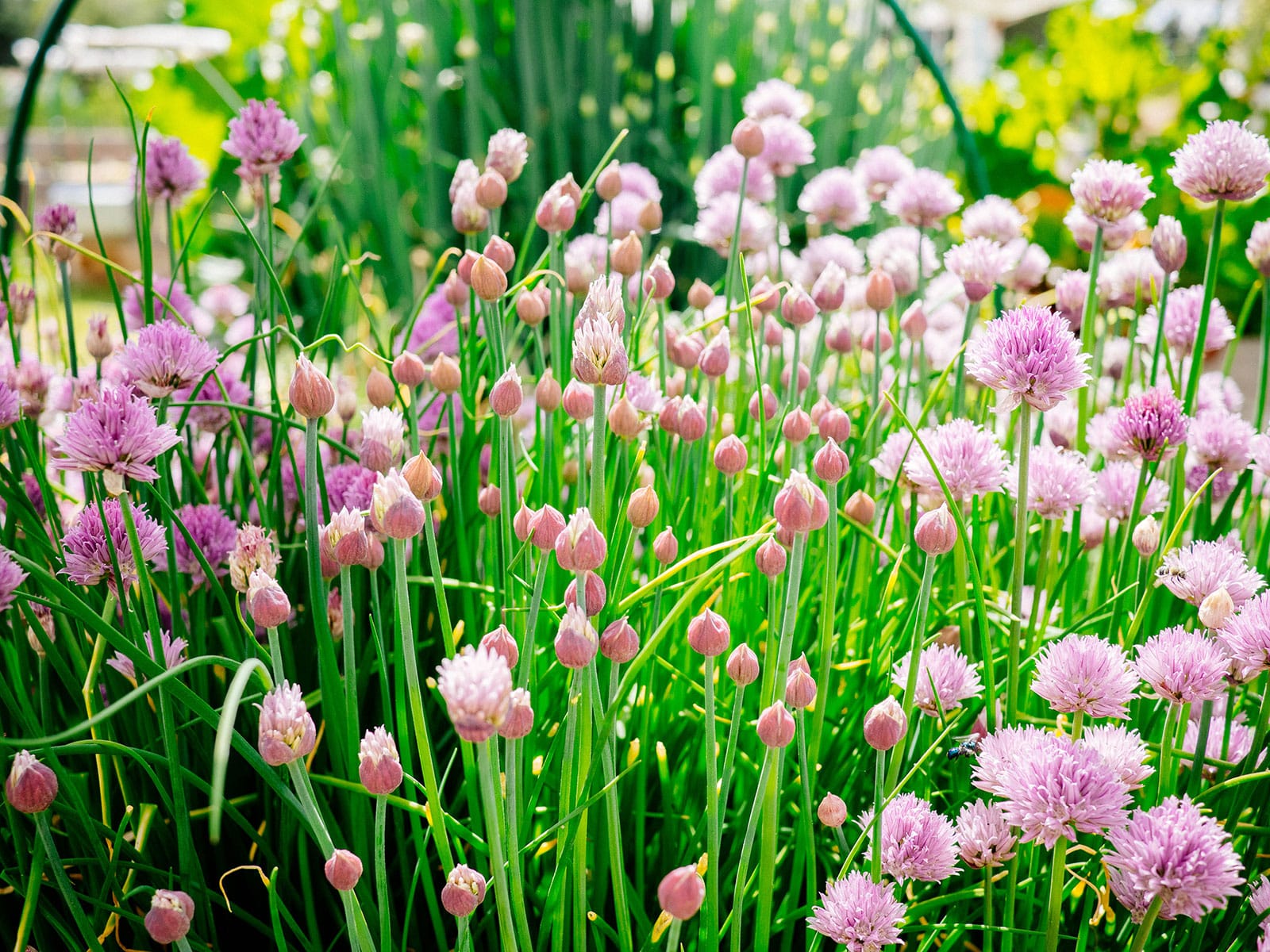
Onions, hardneck garlic, elephant garlic, society garlic, and chives all produce edible flowers in shades of white, pink, and purple. Flavors range from sweet and onion-like to mildly garlicky, depending on the plant. These florets eventually give way to green seeds that can also be eaten (they just have a slightly stronger taste than the petals).
Alyssum (Lobularia maritima)
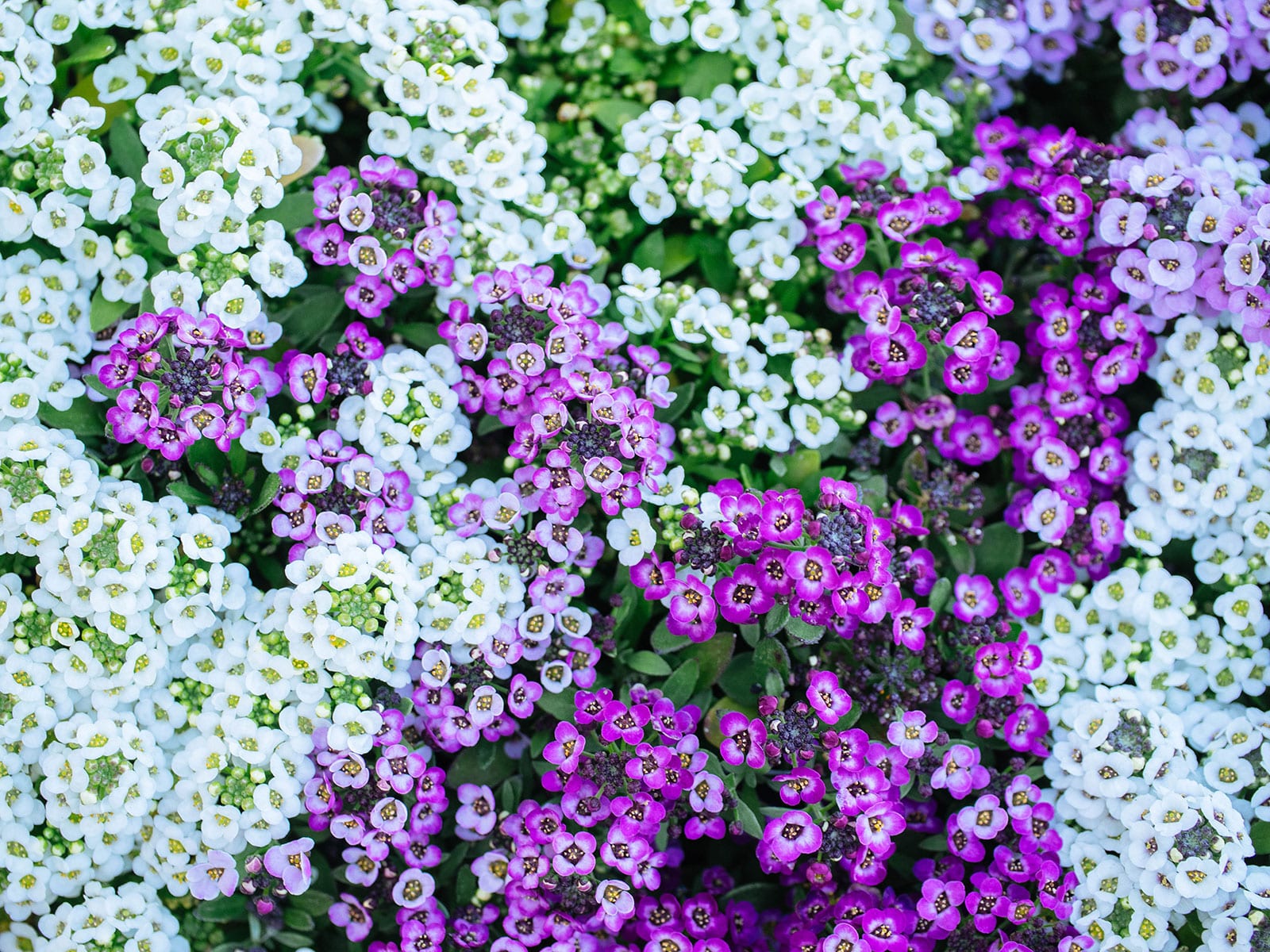
Also known as sweet alyssum, this low-growing bedding plant is part of the brassica family (which includes common vegetables like cabbage, kale, and broccoli). Its delicate clusters of tiny flowers are mild in flavor and bloom reliably from spring through early summer.
Amaranth (Amaranthus spp.)

Amaranth is often grown as a bedding plant, and you probably know it by its common name of love lies bleeding. But it’s also a bonafide vegetable grown for its tender, spinach-like leaves, and its large, beautiful sprays (consisting of thousands of tiny flowers) are also edible. Depending on their stage of growth, the flowers can have a range of textures and flavors, from smooth to crunchy and sour to slightly sweet.
The wild form of amaranth, known as pigweed, can also be eaten. (And it’s considered a weed, so pick to your heart’s content!)
Bachelor button (Centaurea cyanus)
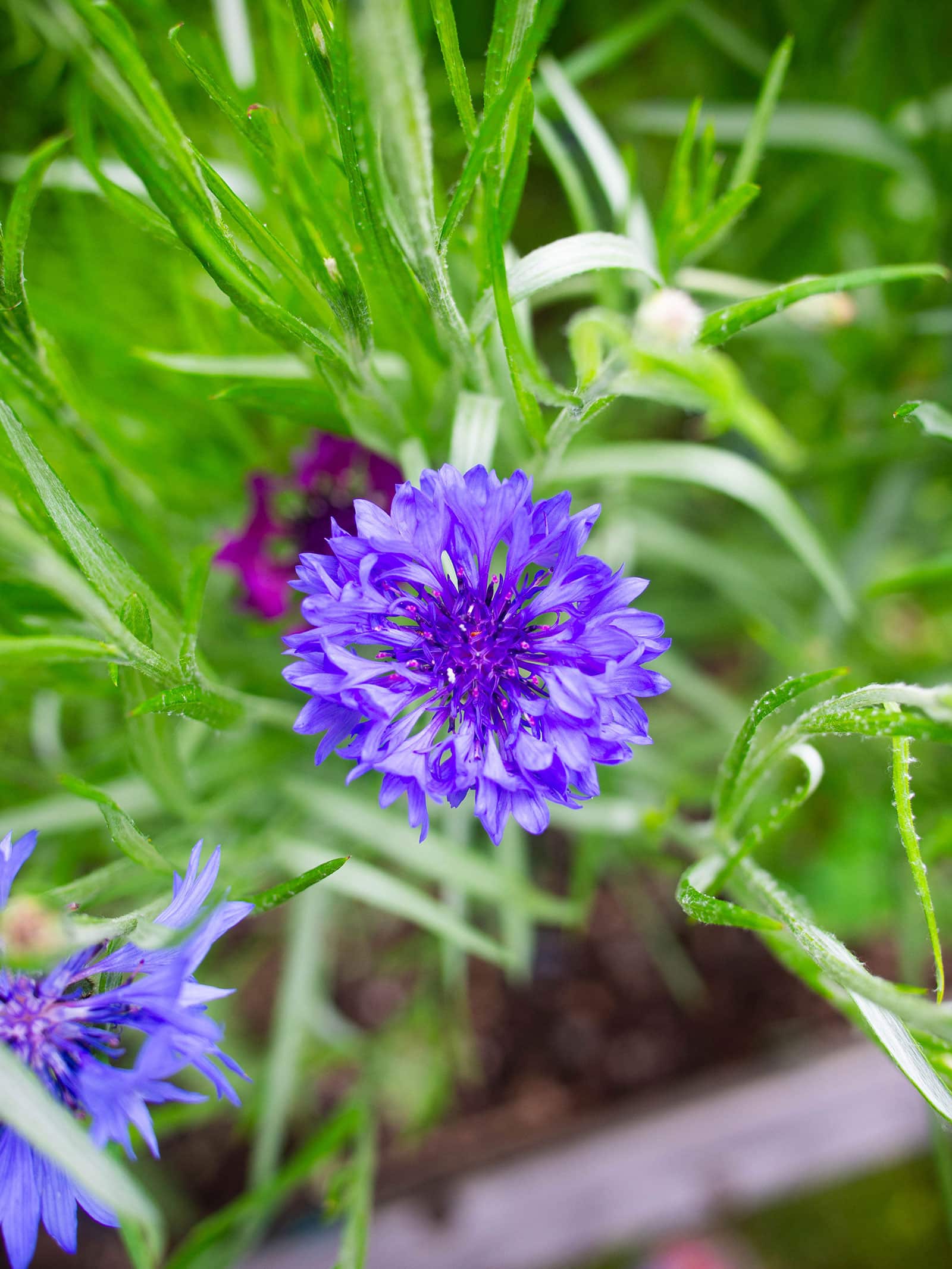
Bachelor buttons (also known as cornflowers) self-sow every year in my zone 5 garden. Their small flowers (in shades of blue, purple, pink, and maroon) have a sweet and slightly spicy flavor (kind of like cloves) and the petals can be picked off to use as colorful garnishes.
Bean (Phaseolus coccineus, Phaseolus vulgaris)
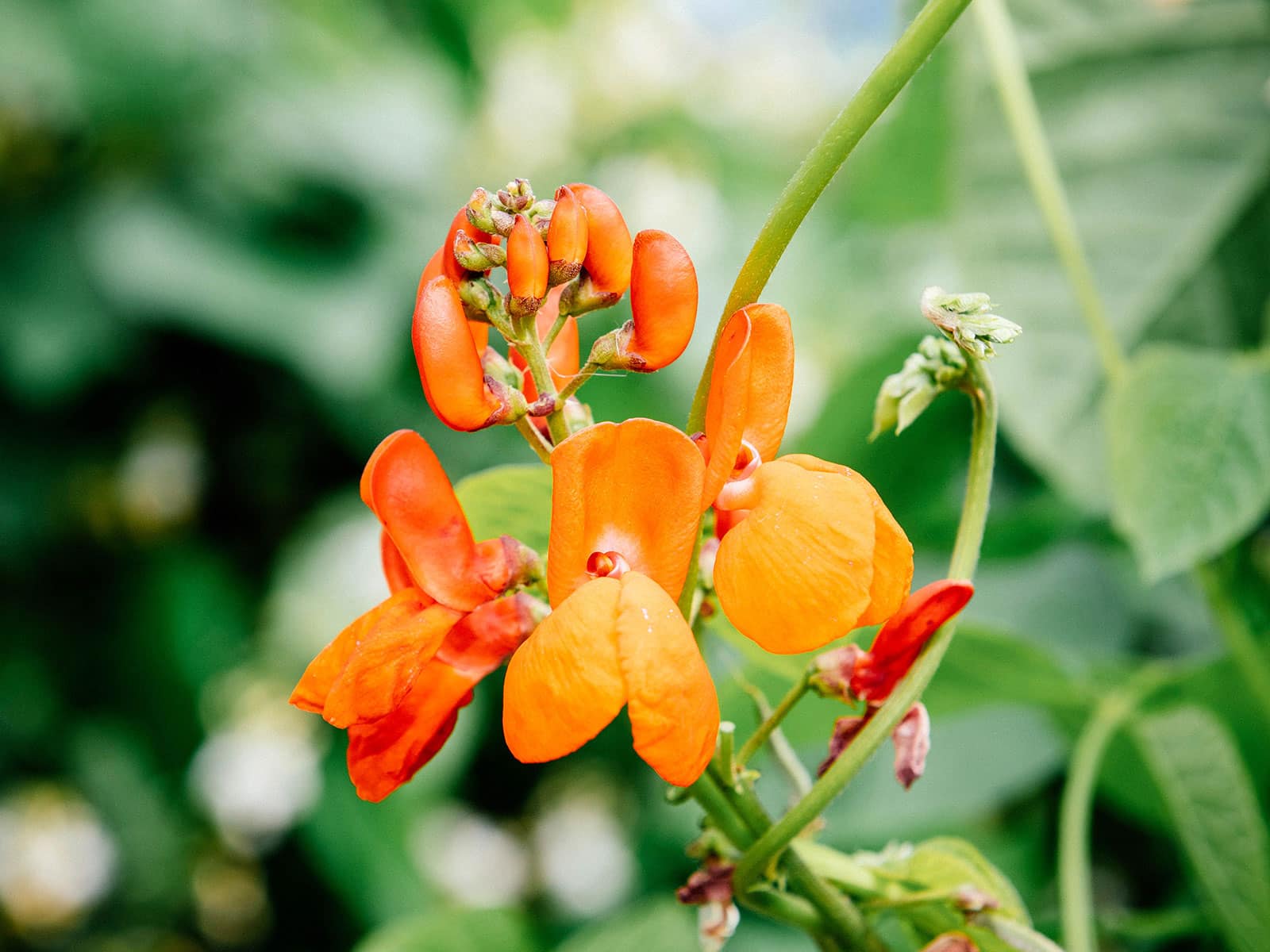
While you can eat the flowers from any bush bean or pole bean variety, runner beans are ideal because the plants produce an abundance of flowers and are perennial in mild climates. Bean flowers have a wonderfully sweet, beany flavor, and make a fabulous garnish for savory dishes.
Bee balm (Monarda fistulosa)

Bee balm (a member of the mint family) is one of my favorite pollinator plants and I have several varieties growing in my edible flower bed. The small flowers attract all kinds of bees, butterflies, and other beneficial insects and have a lightly minty, citrusy flavor. Bee balm is sometimes called wild bergamot, but it’s not to be confused with true bergamot (a member of the citrus family).
Begonia (Begonia x tuberhybrida, Begonia x semperflorens-cultorum)
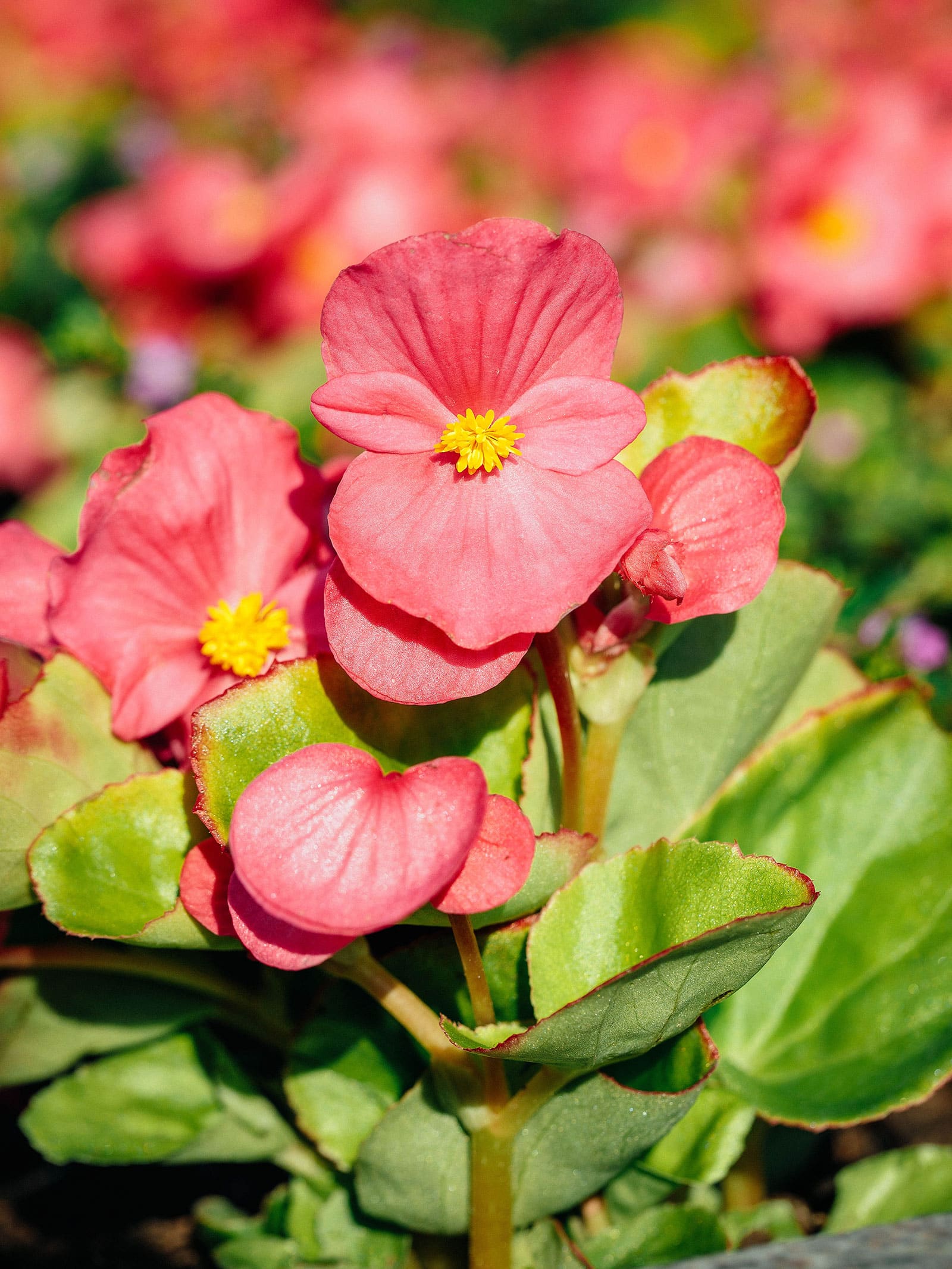
Tuberous and wax begonias both have edible flowers (and leaves!) that contain oxalic acid, the same compound that gives sorrel and rhubarb their sour taste. Depending on the variety, begonias range in flavor from lightly lemony to sharply tangy.
Borage (Borago officinalis)
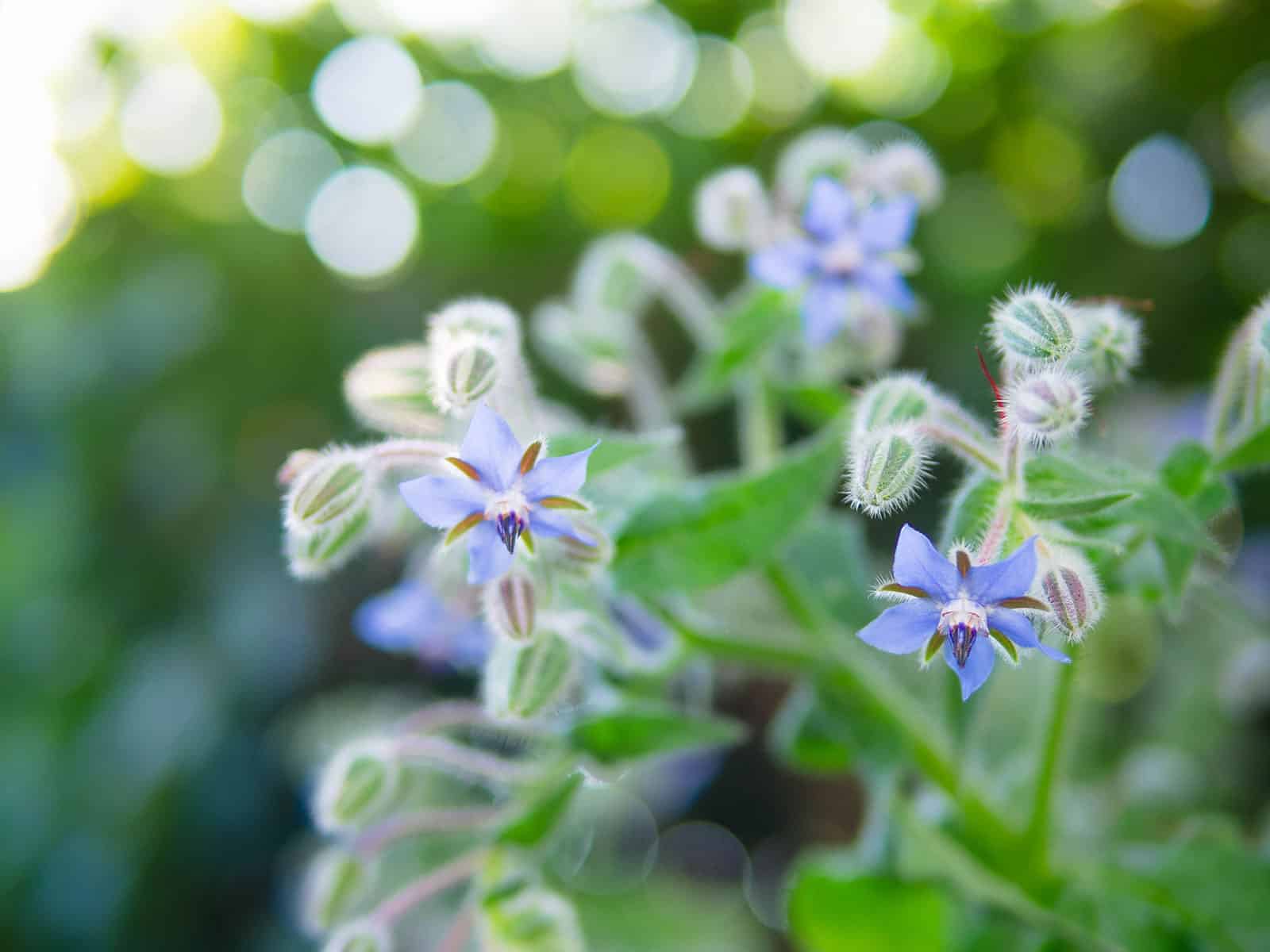
This distinctively fuzzy plant is a staple in my garden and one of my favorite bee-friendly flowers. Both the flowers and leaves are edible and have a refreshing cucumber flavor. The star-shaped blooms are usually blue, though a less common variety (B. officinalis var. ‘Alba’) has white petals.
Brassicas (Brassica spp.)
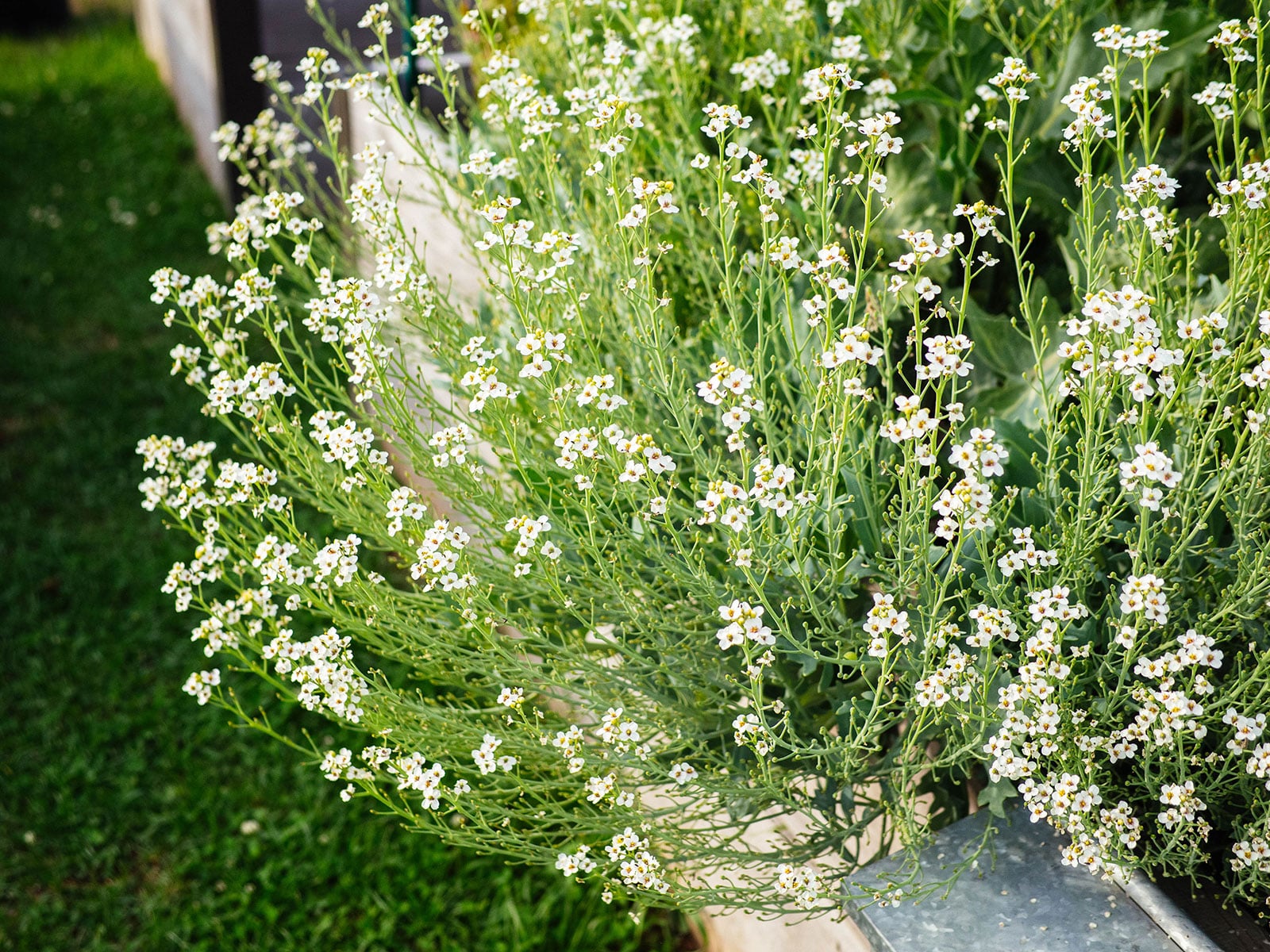
The flowers on all of your favorite cruciferous vegetables (including cabbage, kale, collards, arugula, broccoli, cauliflower, kohlrabi, Brussels sprouts, bok choy, mustards, radishes, and turnips—also known as brassicas) have edible flowers that taste just like the leaves. (You’ll notice a few “surprise” brassicas on this list too—ornamental plants that belong to this family.)
Personally, I think brassica flowers have the best texture before they’ve opened (such as these edible kale buds mentioned before on my blog), but you can pick and eat them at any stage before they go to seed.
Garden Betty exclusive
Double your harvest
Kale buds, radish pods, tomato leaves, squash shoots, sweet potato leaves… these are all the parts of plants you’re already growing but didn’t know you could eat!
My exclusive resource reveals what’s actually edible in your garden and how to prepare it. There’s no other guide like it!
Calendula (Calendula officinalis)
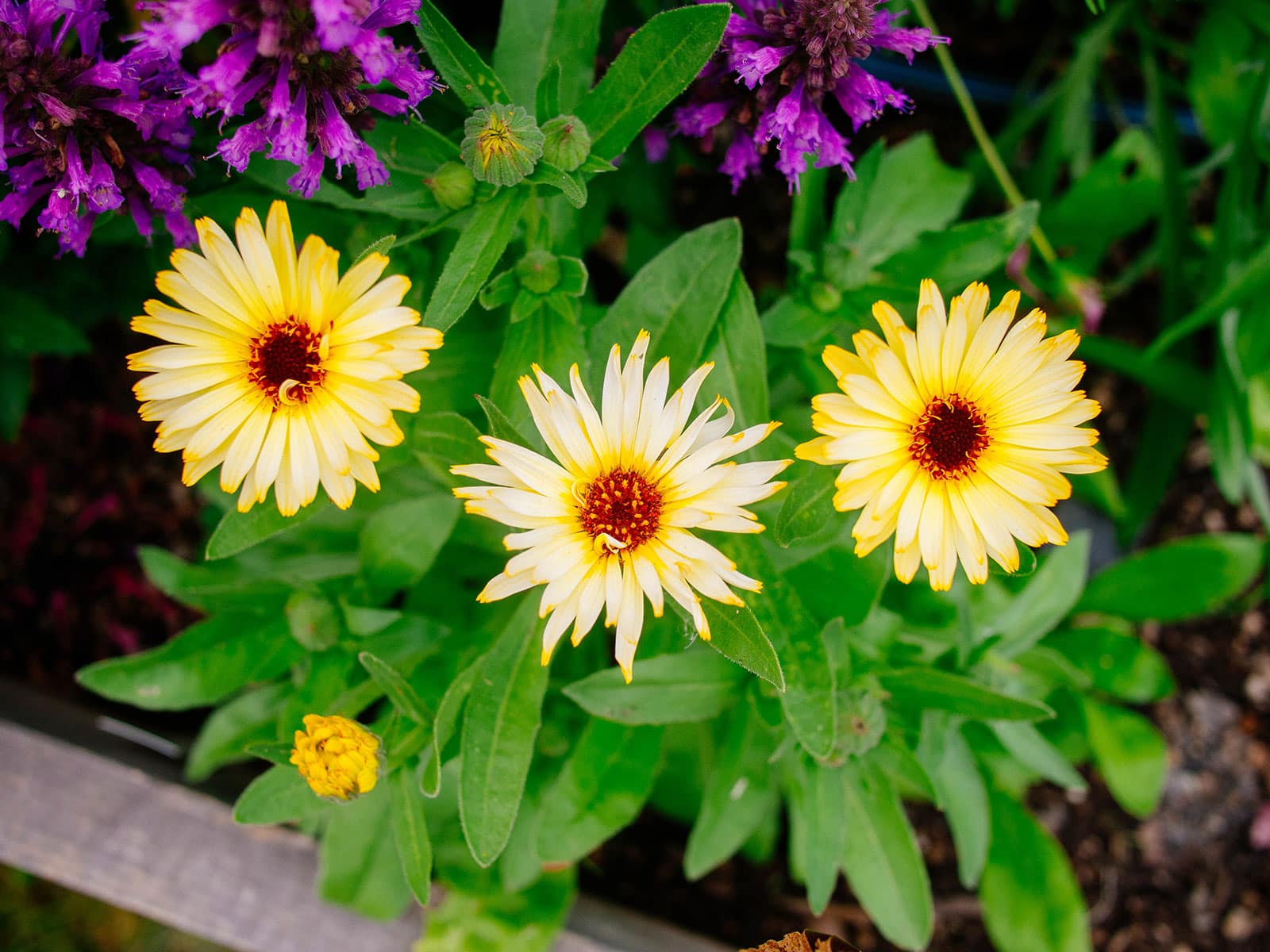
Calendula is a prolific pollinator plant and an effective trap crop that I love to grow all over my garden. The daisy-like flowers have yellow or orange petals with a slightly sweet and somewhat bitter flavor. It’s also known as pot marigold because the petals were historically used in soups (thus cooked in a “pot”).
Catmint (Nepeta cataria)
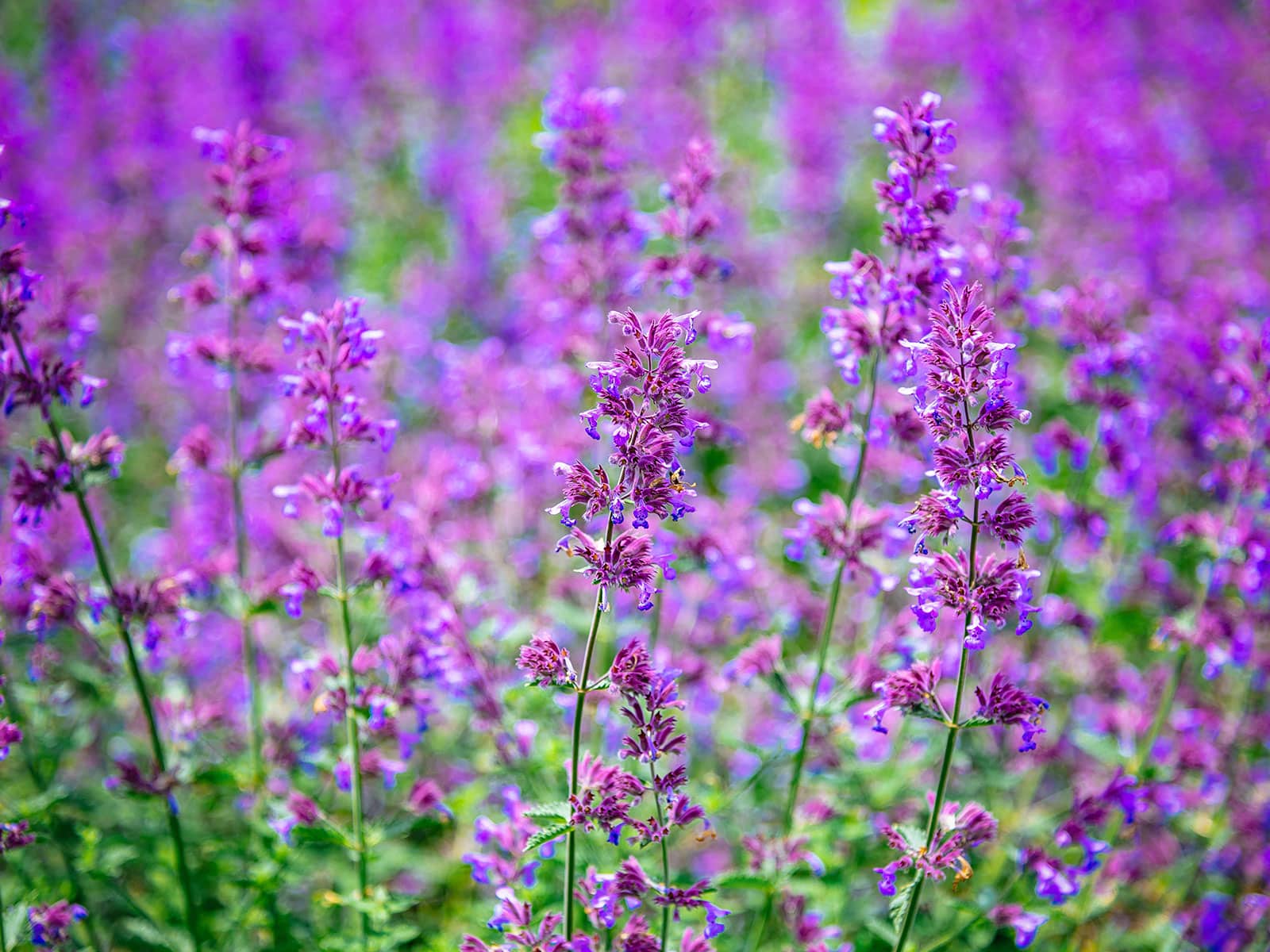
Also known as catnip, this flowering herb isn’t just for cats! The tall sprays of white, blue, or purple flowers (as well as the leaves) have a grassy, herbal flavor with minty notes and can be used fresh or dried. Catmint can spread aggressively through underground runners, so I recommend containing it to its own area.
Celosia (Celosia argentea var.)

Here’s another delicious member of the amaranth family! Also known as plumed cockscomb, all varieties of celosia are edible, though the most popular ones (that are typically grown for cut flowers) are in the argentea species.
This was an unexpected flower find for me, as I originally grew celosia for its leaves. It’s sometimes called Lagos spinach, as it’s a popular leafy green in West African cuisine. The flowers have a similarly spinach-like taste, but once they appear on the plant, the leaves tend to turn bitter (which is all the more reason to harvest the blooms after).
Chamomile (Matricaria recutita, Chamaemelum nobile)
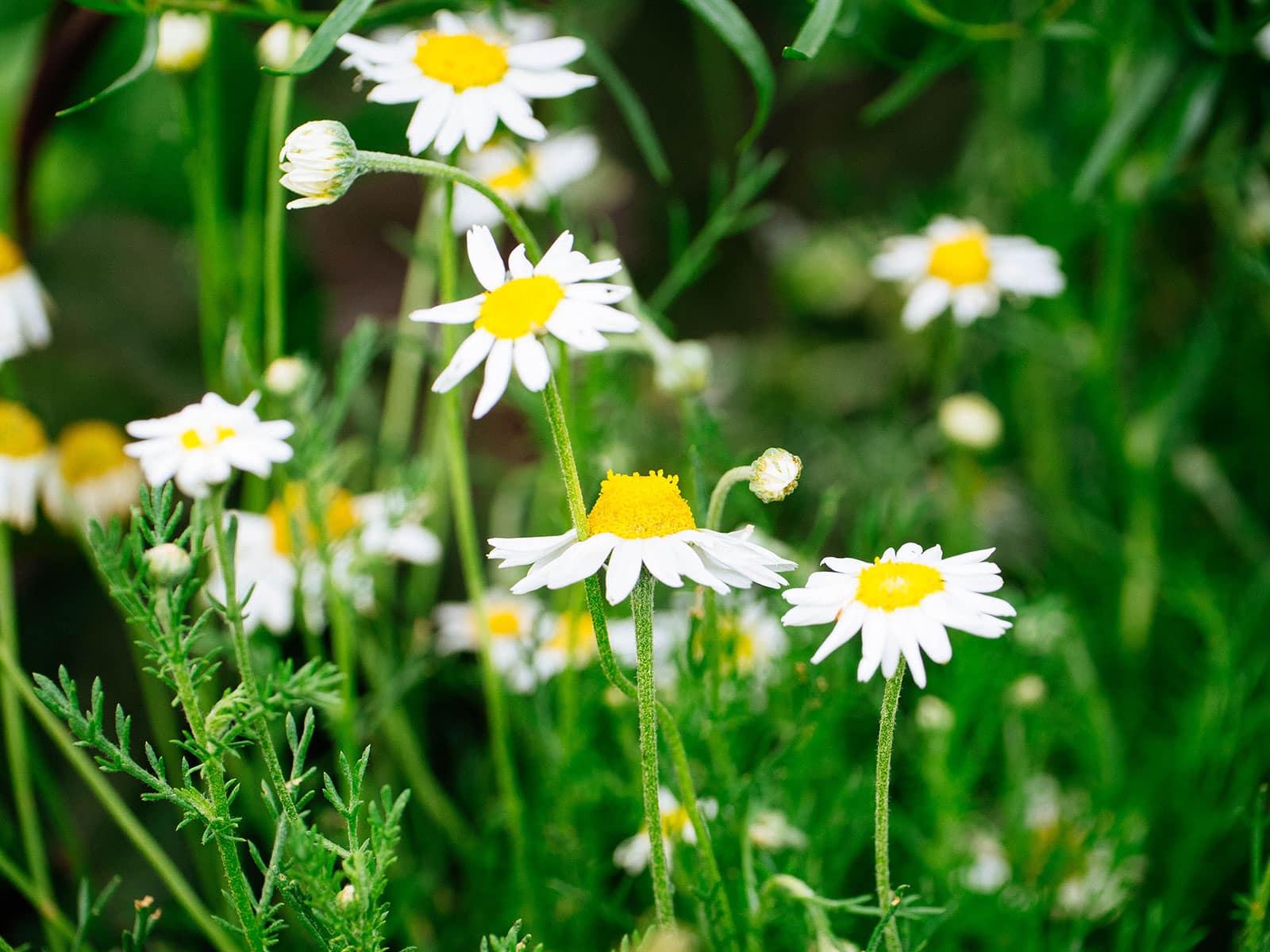
German chamomile (Matricaria recutita, an annual) and Roman chamomile (Chamaemelum nobile, a perennial) are distinct species within the Asteraceae family. The flowers and leaves are often used in teas, though I also like them fresh in salads because of their sweet, apple-like aroma.
Chrysanthemum (Chrysanthemum morifolium, Glebionis coronaria)
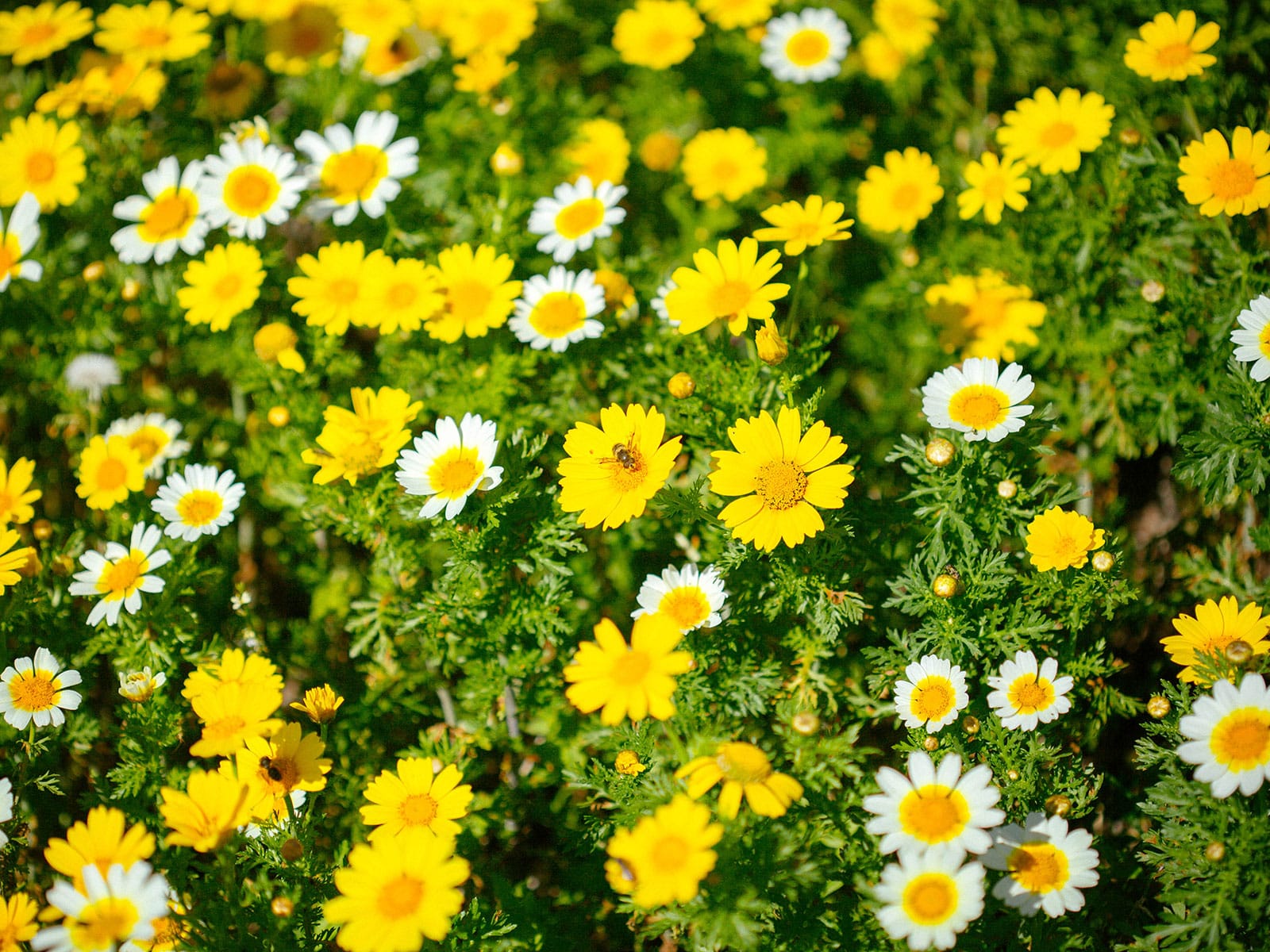
All chrysanthemums (commonly known as garden mums or florist mums) have edible flowers but the flavors range widely across cultivars, from slightly tangy to downright bitter.
My favorite chrysanthemum flower (in terms of taste) actually comes from a cousin known as edible chrysanthemum, garland chrysanthemum, or crown daisy (Glebionis coronaria), which is grown as a leaf vegetable and used in Chinese, Japanese, and Korean cooking. The pretty yellow and white petals have a mild floral flavor that’s somewhere between an herb and a vegetable.
Clover (Trifolium incarnatum, Trifolium repens, Trifolium pratense)

Depending on your lawn, clover is either a weed, a ground cover, or a free salad—I like to think of it as the latter, especially since its flowers are some of the sweetest in the garden! Clover is a common backyard weed you can and want to eat: crimson clover (T. incarnatum) has a wonderfully watermelon-like flavor, while white clover (T. repens) has hints of licorice.
Cosmos (Cosmos caudatus, Cosmos sulphureus)

Yes, there are two edible cosmos species! The first is called king’s salad (Cosmos caudatus) and it’s grown primarily for its nutritious leaves and shoots (and pink flowers) in parts of Asia and Central America. The shoots have a refreshingly sweet taste, almost like mango. Yum!
The second is sulfur cosmos (Cosmos sulphureus) and unlike C. caudatus, it has orange and yellow blooms. The leaves are also edible, but have a very different flavor from king’s salad—earthier and more bitter.
Cowpea (Vigna unguiculata)
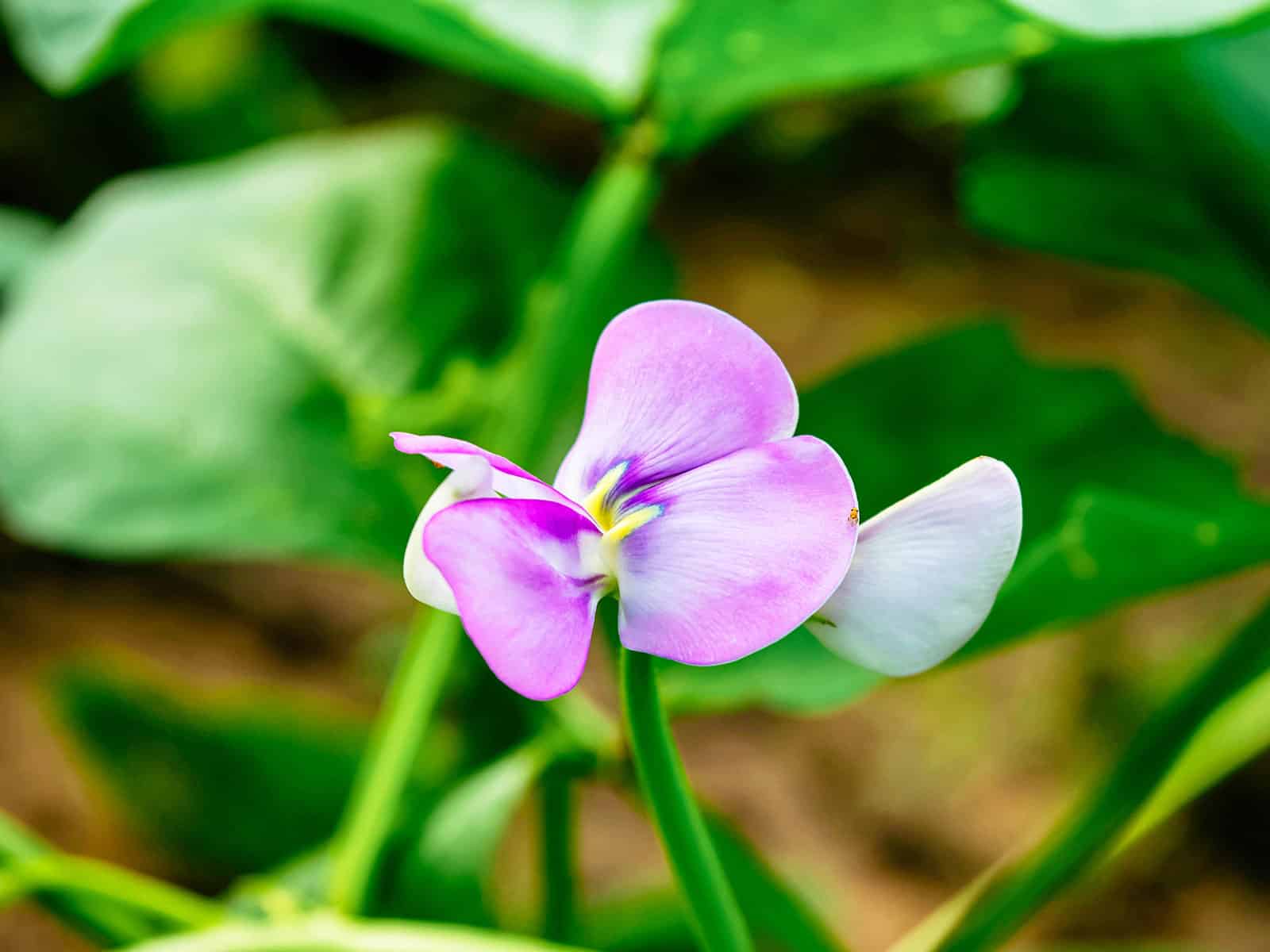
Cowpeas (black-eyed peas) are actually a type of bean, and like other beans (which I mention above), their flowers are edible and so, so good—picture the cleanest snow pea flavor you’ve ever tasted with a sweet finish. Cowpea flowers are outstanding in salads because they’re big, succulent, and colorful.
Dahlia (Dahlia spp.)
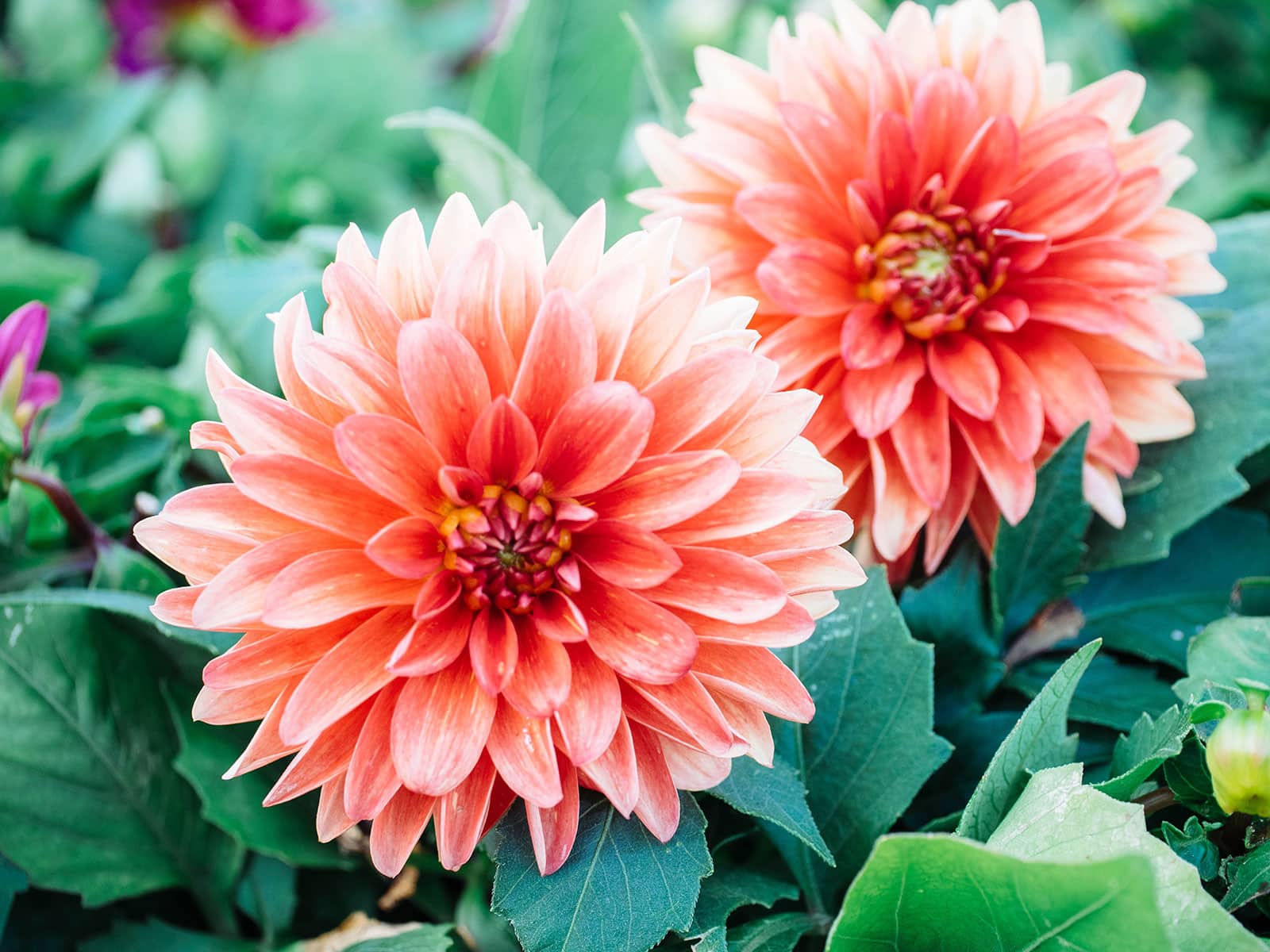
All dahlias are edible (including the tubers, which are delightfully crisp and juicy) and with thousands of named varieties, you can imagine that there’s great variability in flavor among just the common garden dahlias (D. pinnata and D. variabilis). One species in particular, known as the red dahlia (D. coccinea), is grown and eaten in Mexico. It has a mild to slightly sweet flavor.
Dandelion (Taxacum officinalis)
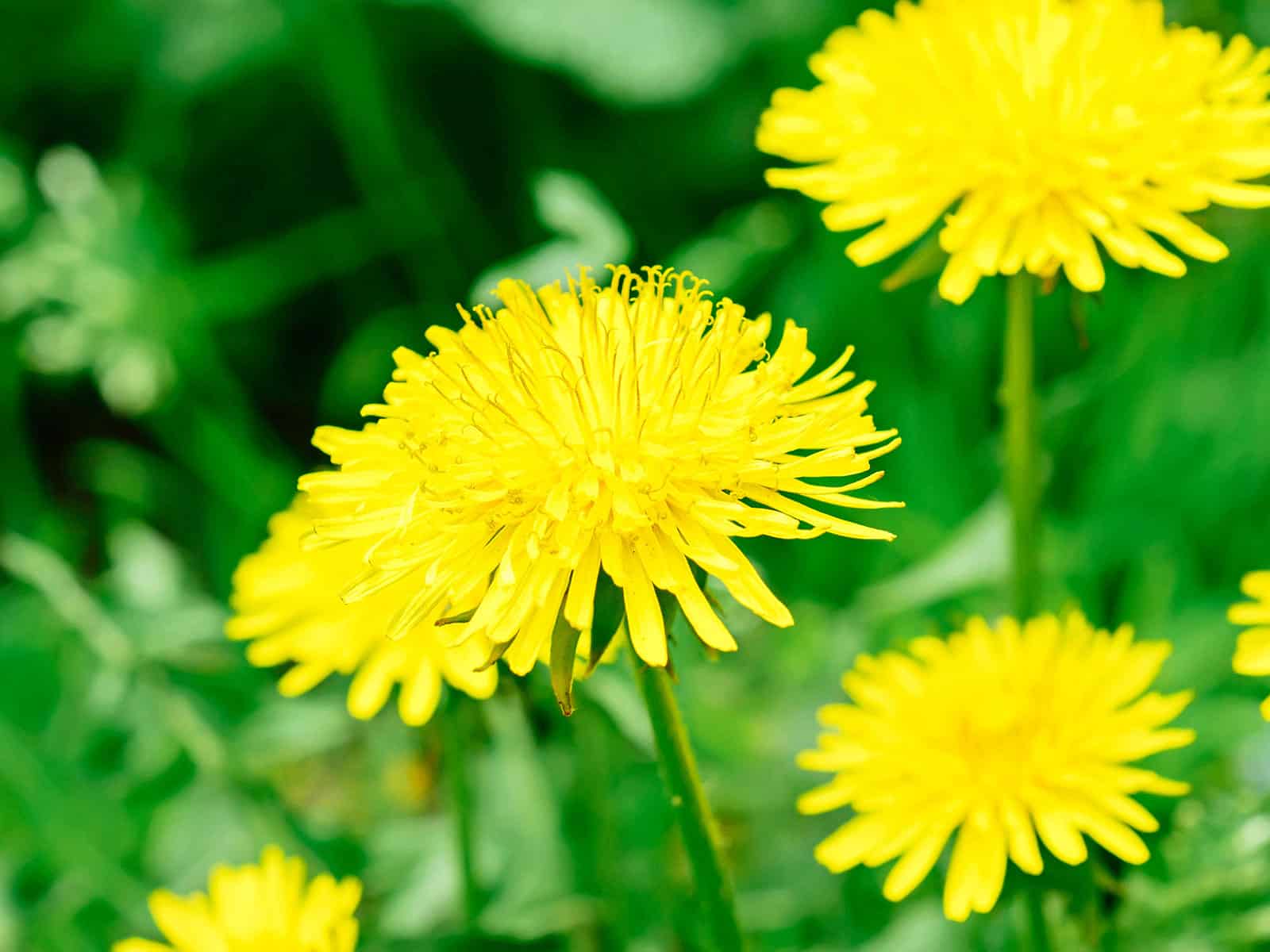
Every part of the dandelion is edible and the flowers are especially versatile, as they can be eaten raw or cooked, turned into jelly, fermented for wine, or dried to make tea.
Most dandelion flowers are yellow, but a few varieties have pink or white flowers. Young buds have a sweet, almost honey-like flavor but once they fully bloom, they turn quite bitter.
A lookalike called cat’s ear (false dandelion) is also entirely edible, including the flowers. You can tell them apart by looking at the texture of the leaves: cat’s ear is fuzzy, while true dandelion is smooth.
Daylily (Hemerocallis spp.)
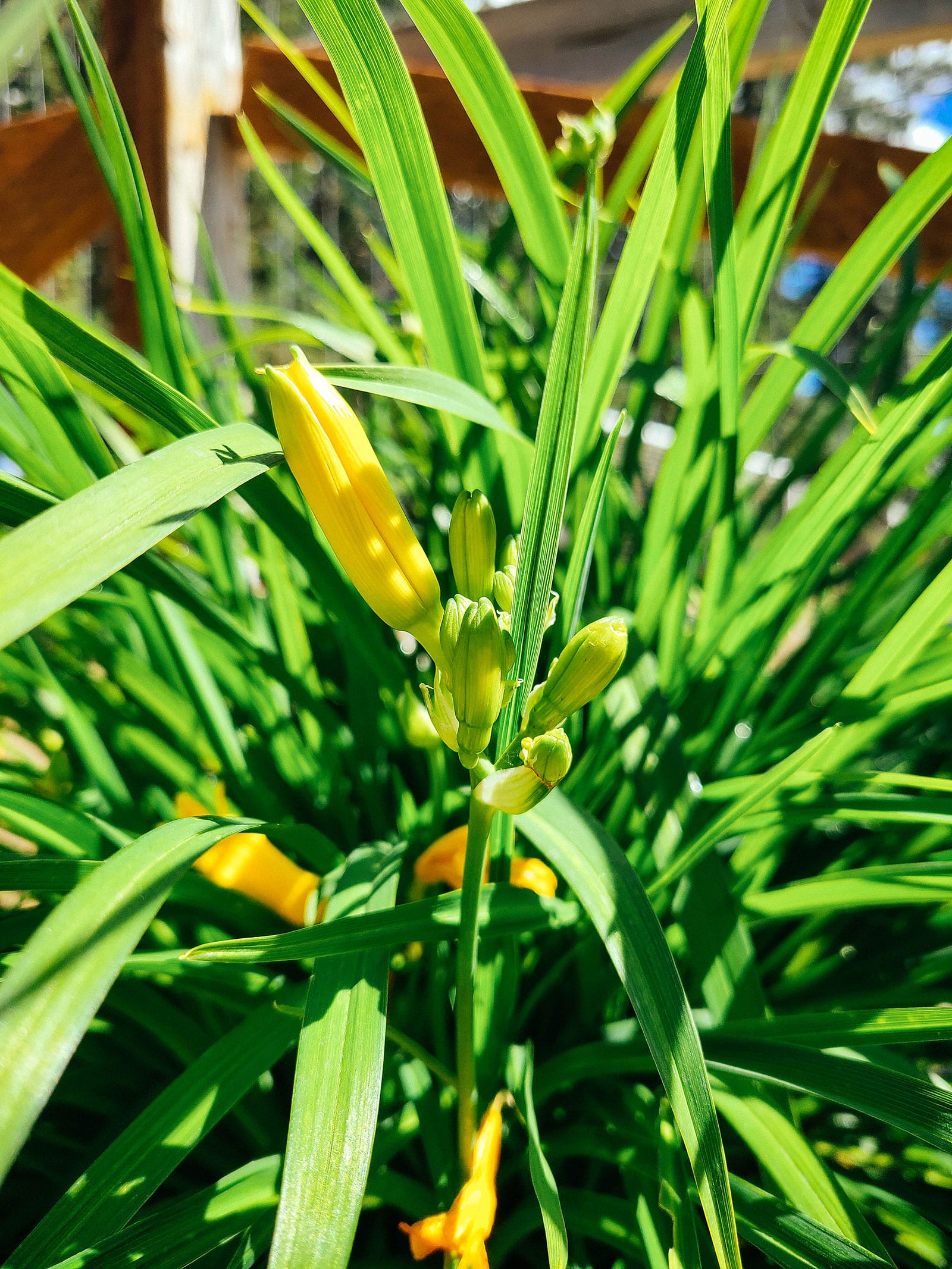
I absolutely love daylilies as an edible flower, particularly when the buds are still tightly closed—they have a mildly sweet flavor, kind of like green peas or lettuce. This is one of the few flowers that can be turned into a side dish of its own: daylily buds lightly sauteed with garlic and shallots is delicious!
Similar to dahlias (above), daylilies also have edible tubers that taste (and look) a lot like fingerling potatoes, and can be cooked the same way. The most common edible daylily is also the most ubiquitous one: Hemerocallis fulva, or the orange daylily. It’s also said to be the tastiest, since most of the Hemerocallis hybrids out there are bred for beauty, not flavor.
Dianthus (Dianthus spp.)
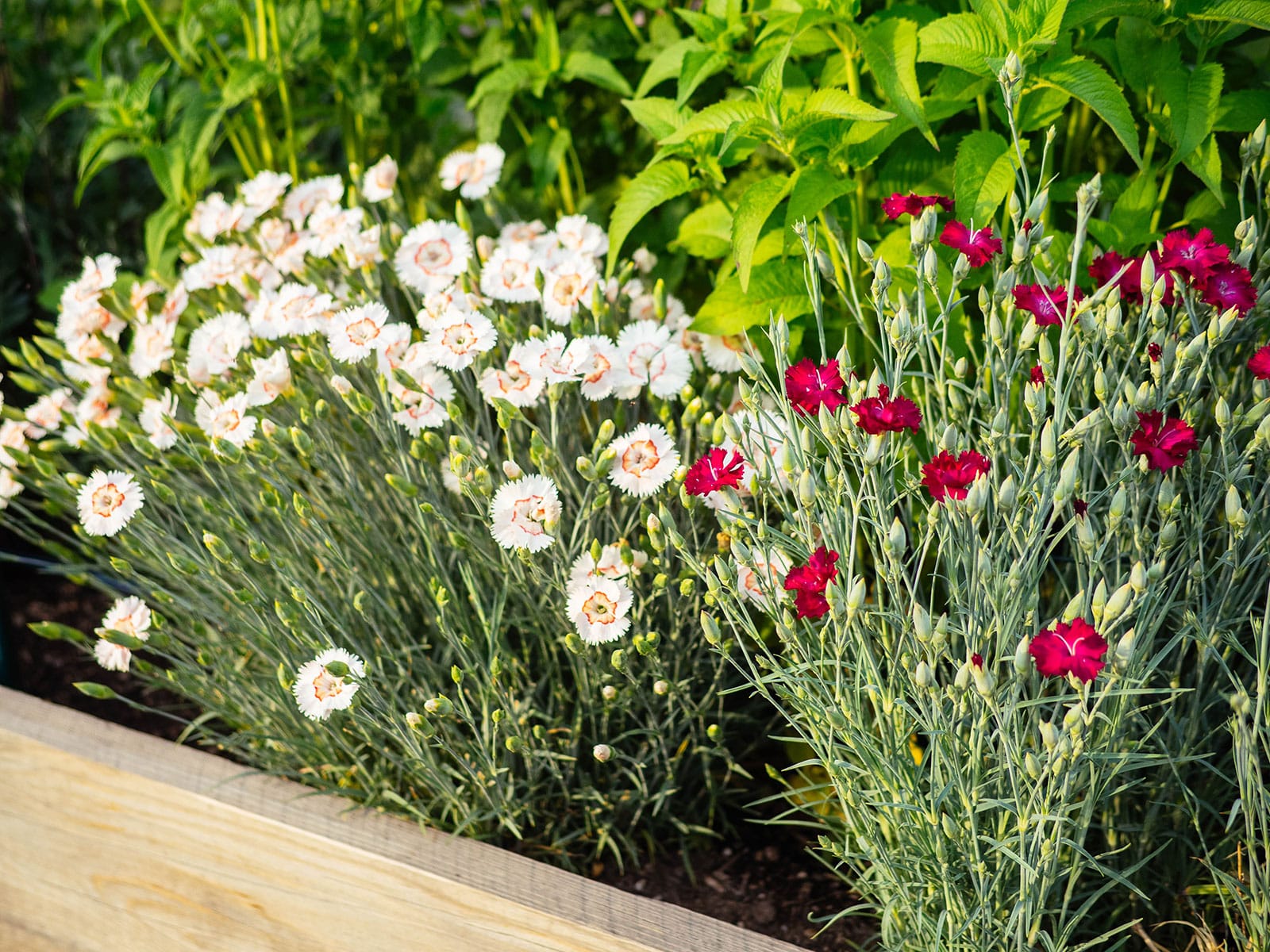
Dainty dianthus goes by different common names including pinks, clove pinks, carnations, and sweet Williams. Not only are they very fragrant, they’re among the best-tasting flowers too (and you keep them blooming all season long by deadheading regularly). All varieties are sweet and spicy with hints of clove.
Dill (Anethum graveolens)
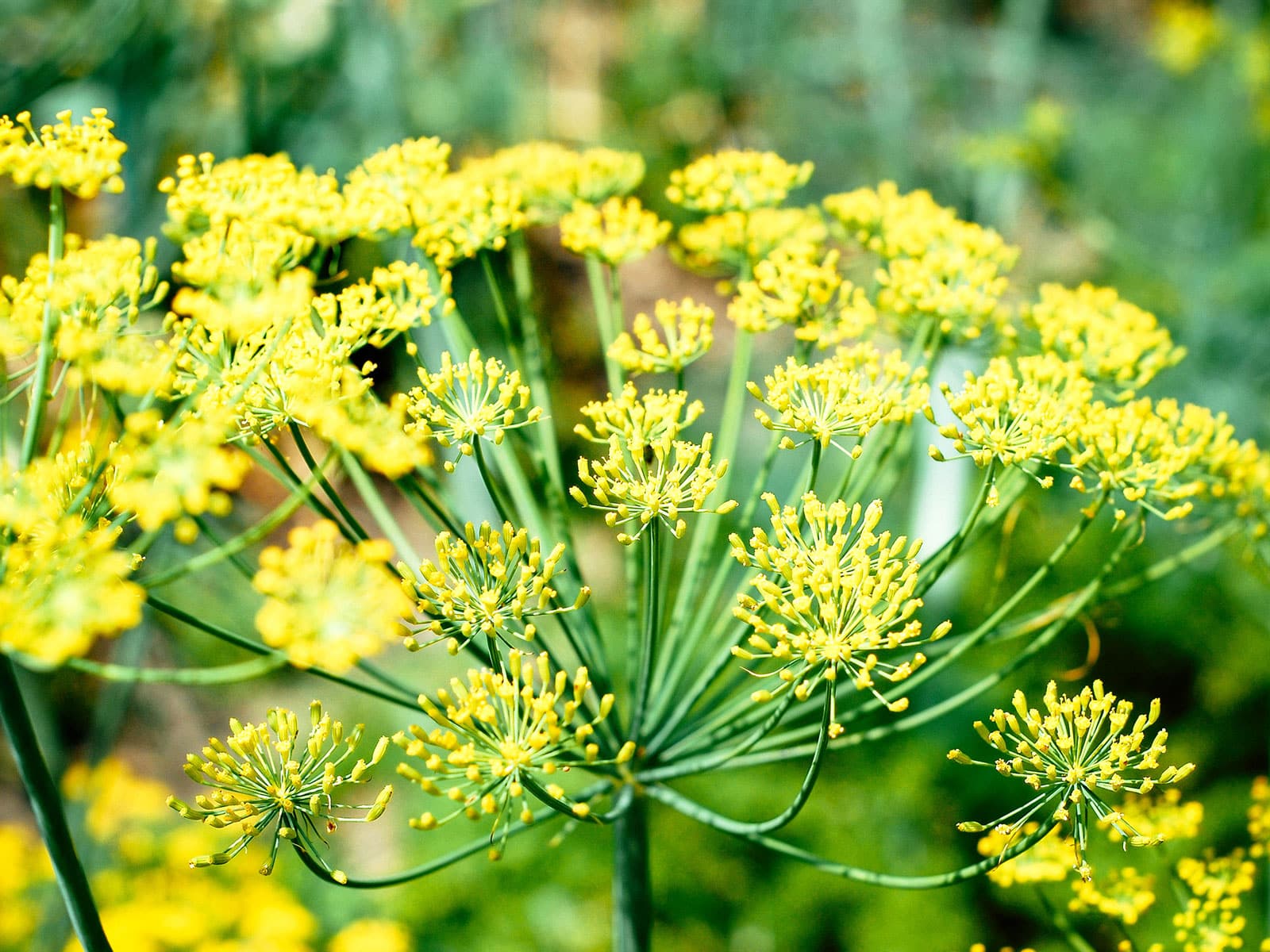
Most people just harvest the lacy leaves, but dill flowers are edible too. The tiny yellow blooms grow on large umbels (clusters that look like upside-down umbrellas) and you can harvest these umbels before seeds begin to set. Use the umbels whole wherever you’d use dill fronds, or pick individual florets to add to salads, stir-fries, or compound butters.
Echinacea (Echinacea spp.)
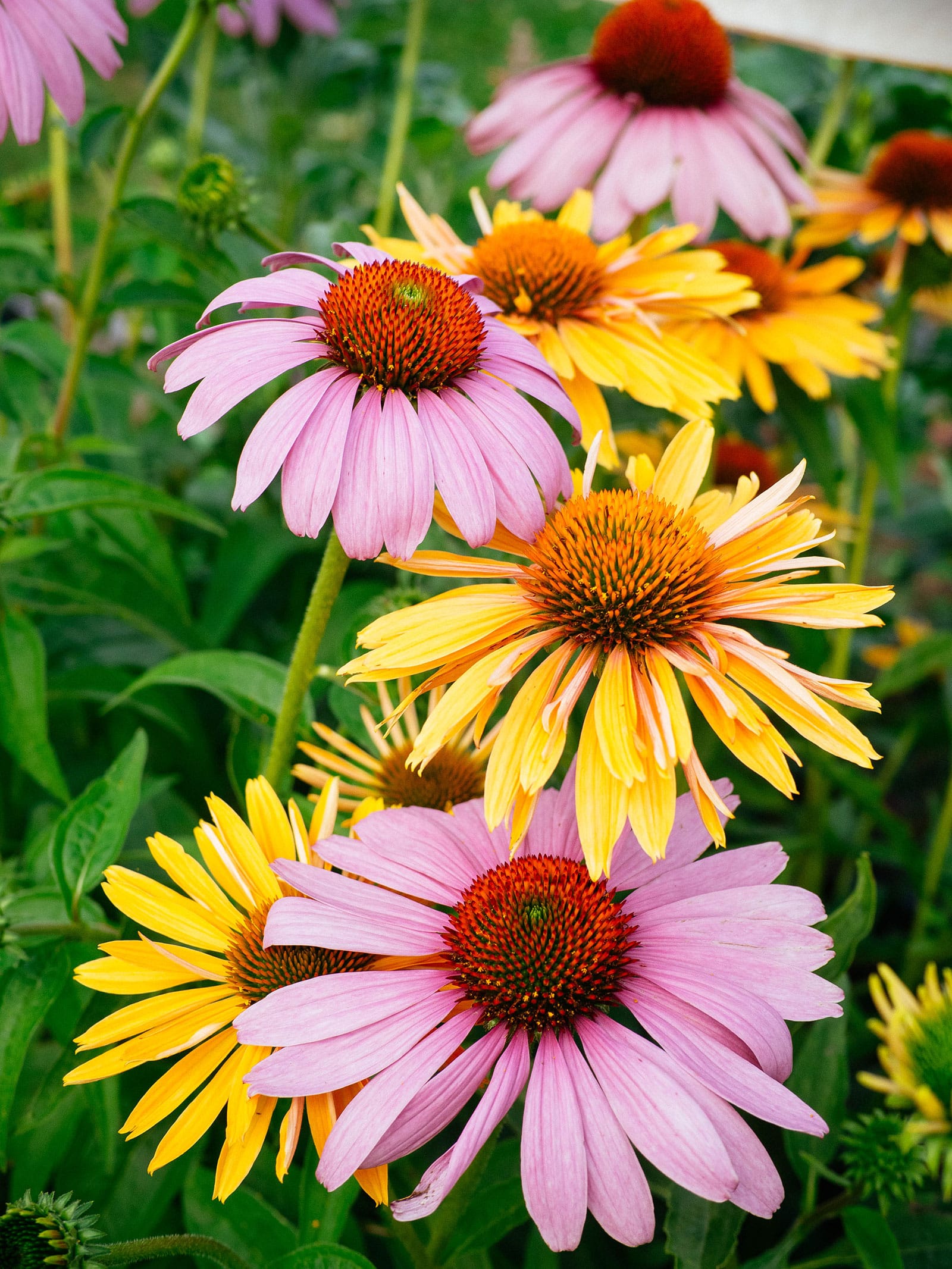
Echinacea petals have an earthy and floral aroma, which you might already know if you’ve ever had echinacea tea (though the whole plant, including the roots and leaves, are used to make tea). Pick the petals off the “cone” (which gives it its common name of coneflower) to use fresh or dried.
English daisy (Bellis perennis)
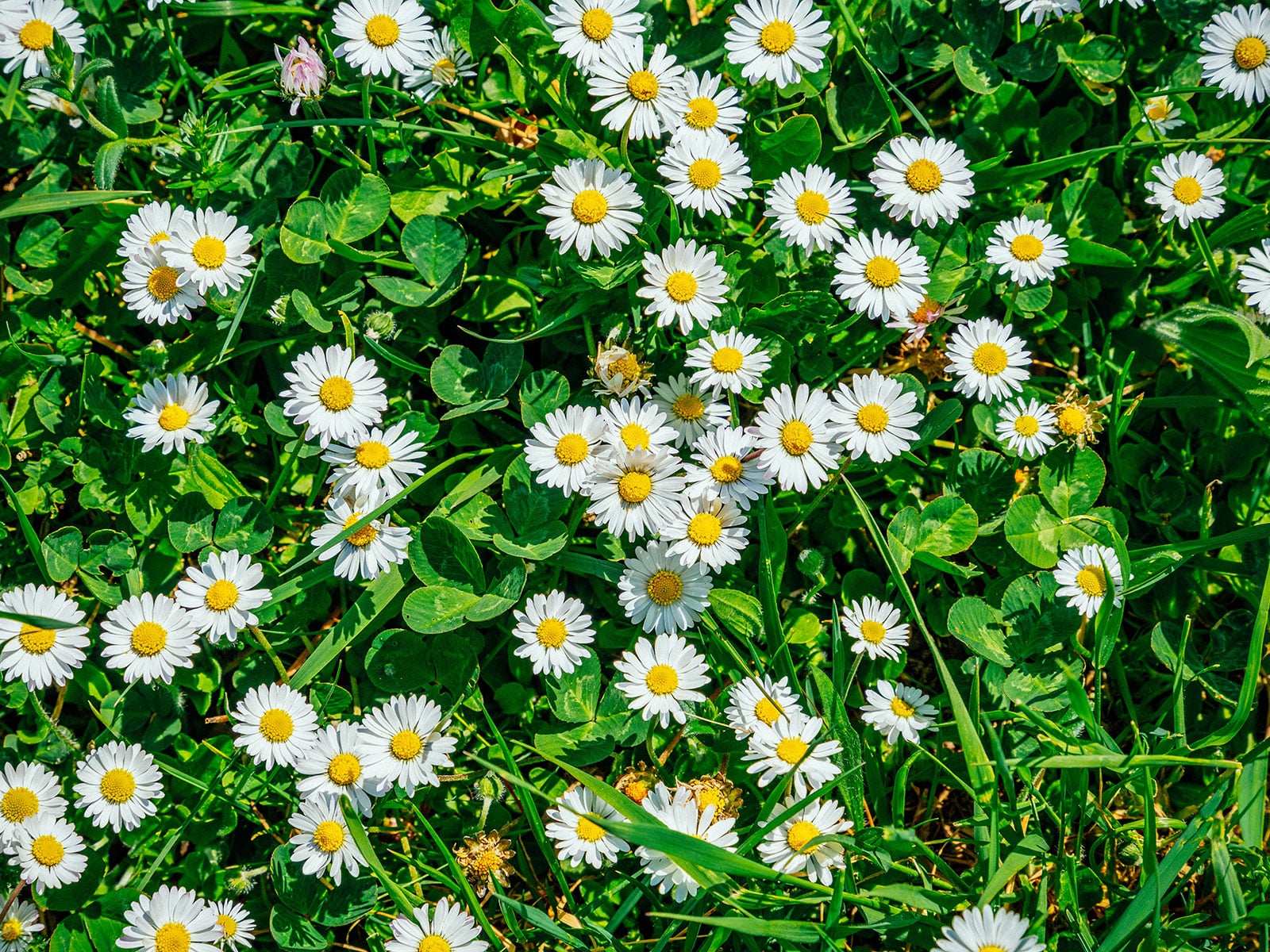
Common daisies (sometimes called lawn daisies but more accurately referred to as English daisies) produce the cutest little blooms. The petals range from white to pink to red and have a slightly bitter flavor. You can use the whole flower (including the centers) or pull the petals to sprinkle over salads, desserts, and drinks.
Evening primrose (Oenothera biennis, Oenothera speciosa)
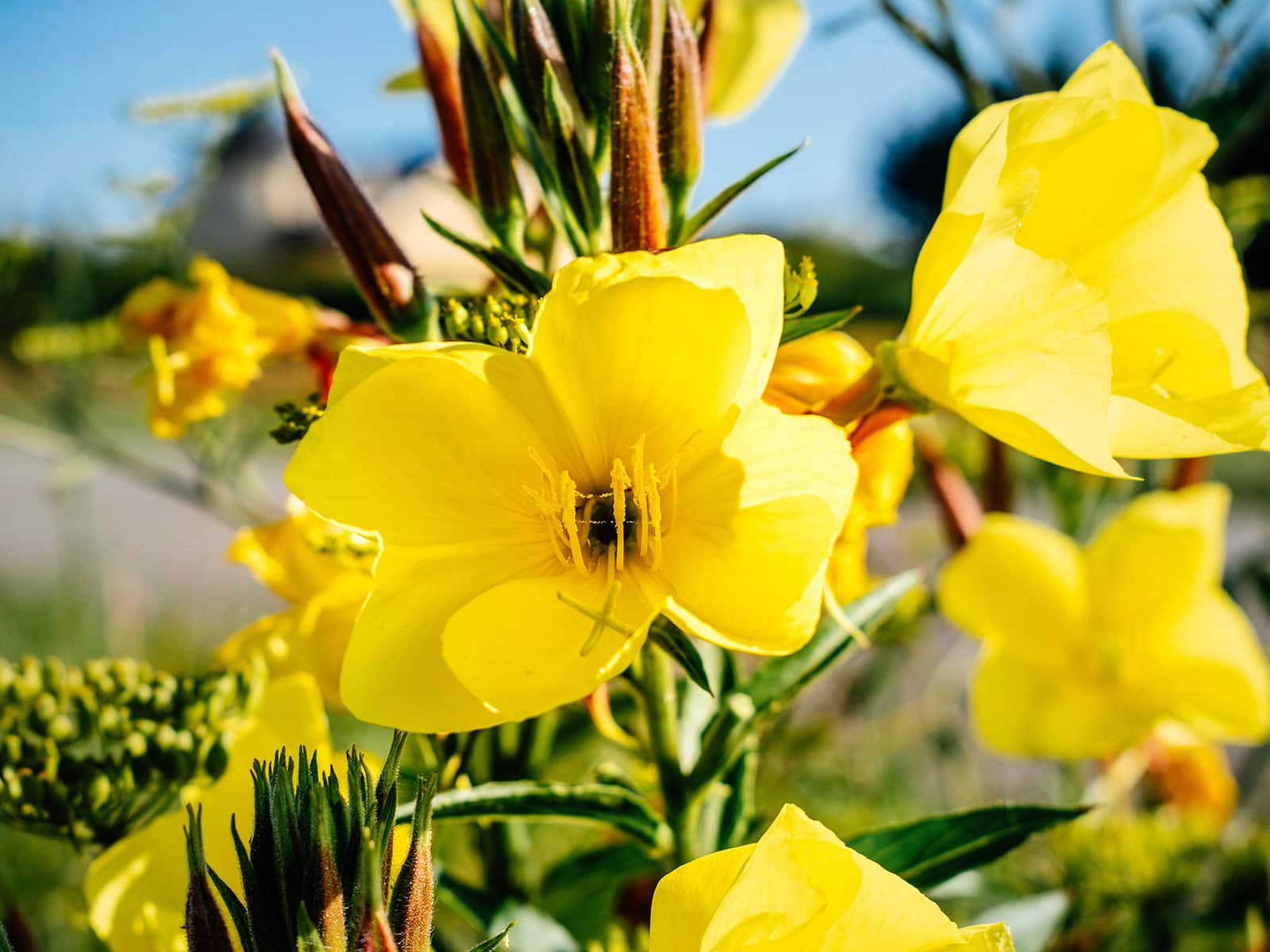
The common evening primrose (O. biennis, also called a sundrop) is a native wildflower in many parts of the United States and historically has been used as a food crop and traditional medicine. Most parts of this plant are edible, including the roots, leaves, flowers, and seeds. The flowers are mildly sweet with a slightly bitter aftertaste.
Another species known as pink evening primrose, showy evening primrose, or pinkladies (O. speciosa) also has edible leaves and flowers with a similar flavor profile.
Fava bean (Vicia faba)
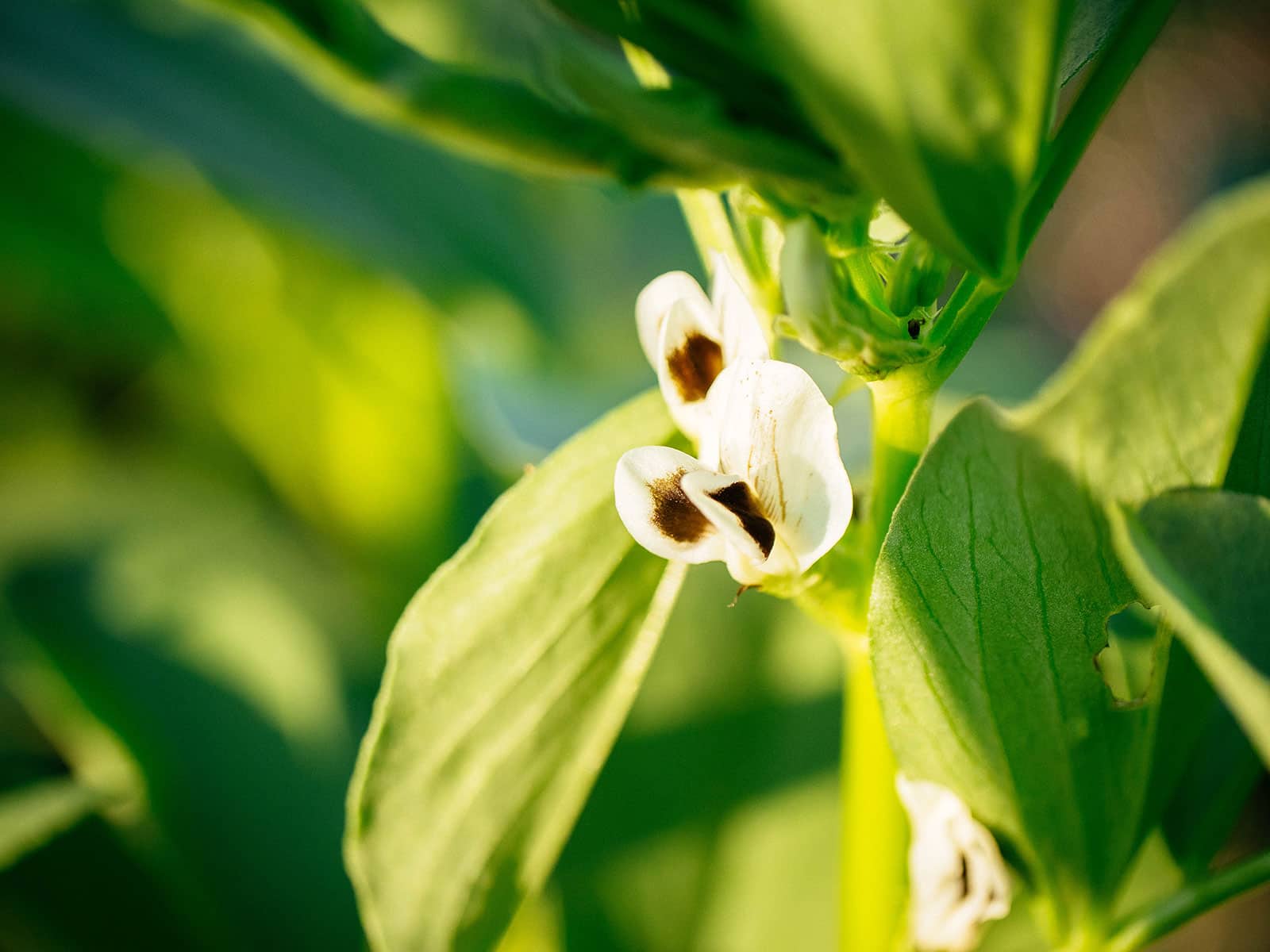
Despite their common name, fava beans (broad beans) are not true beans—they’re a giant-seeded vetch. And I actually grow them more for their foliage and flowers than their pods! (Fava beans also make an excellent cover crop that helps build soil fertility.)
Fava bean flowers have a slightly nutty and sweet flavor, and you get a lot of them on a plant, so you can harvest fava blossoms all season long. (My personal favorite is this citrus and fava leaf salad.) I also like to scatter a handful of fava flowers over my pasta salads and rice and noodle bowls.
Fennel (Foeniculum vulgare)

If you’re going down this list and feel like you’re seeing double, you aren’t wrong—fennel flowers look very similar to dill flowers, as they’re in the same family. When fennel bolts, it produces tall yellow umbels with a mild licorice flavor. You can use these flowers as is, collect fennel pollen to use as a seasoning, or use the immature, juicy green seeds to flavor savory dishes.
Forget-me-not (Myosotis spp.)
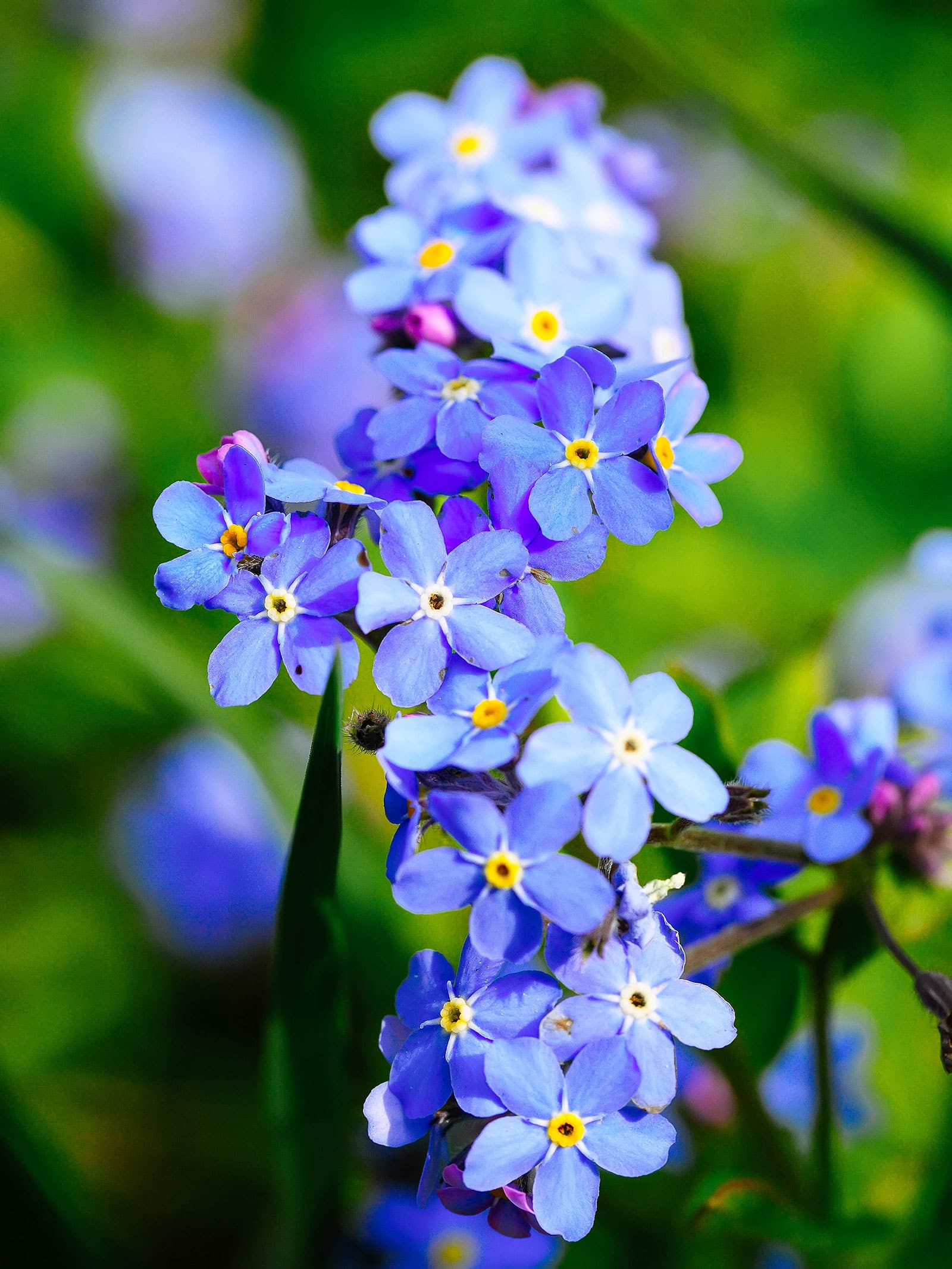
These tiny blue flowers have a mild floral taste and make excellent candied blossoms. The wood forget-me-not (M. sylvatica) is actually considered an invasive species in some parts of the United States, so you’d be doing the environment a favor by harvesting the edible flowers!
Digital guide
Weeds you can eat
These flowers aren’t the only plants that are edible. Many common backyard weeds and invasive plants are delicious too!
Download my original guide to edible weeds and discover the free wild salad bar that’s growing in your garden.
Fuchsia (Fuchsia spp.)
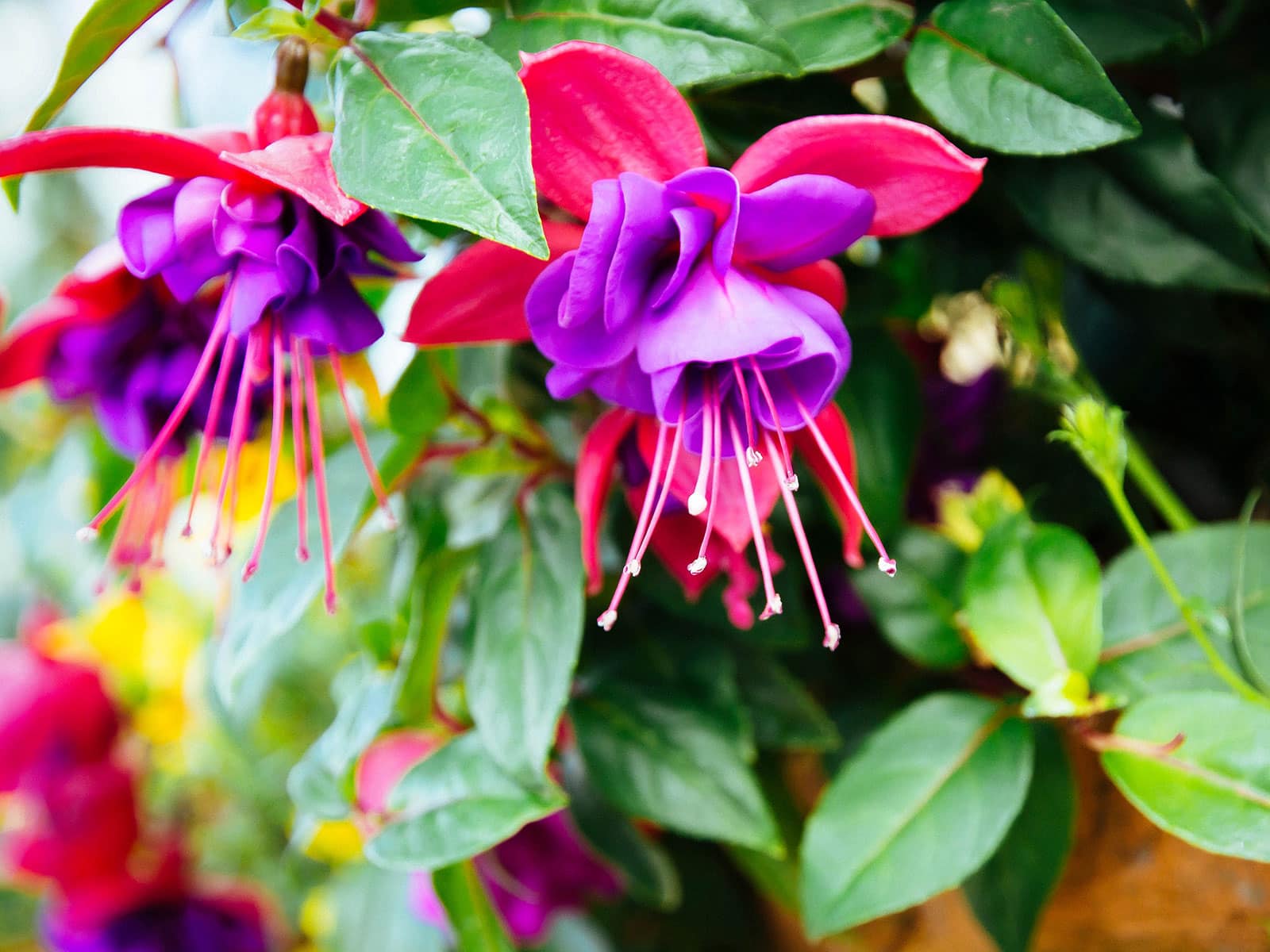
Most people grow these vibrant flowers as ornamentals, but few realize that fuchsia flowers (and even their berries) are edible! You can harvest fuchsia flowers once they’re fully open; the bright red sepals have a mildly peppery, lettuce-like flavor, while the purple petals are generally vegetal with a peppery kick.
Some fuchsias have sweeter or slightly more acidic flowers, and you’ll find subtle differences in taste between various cultivars. (The same goes for fuchsia berries—they range from bland to sweet and grape-like, depending on the cultivar.)
Garden phlox (Phlox paniculata)
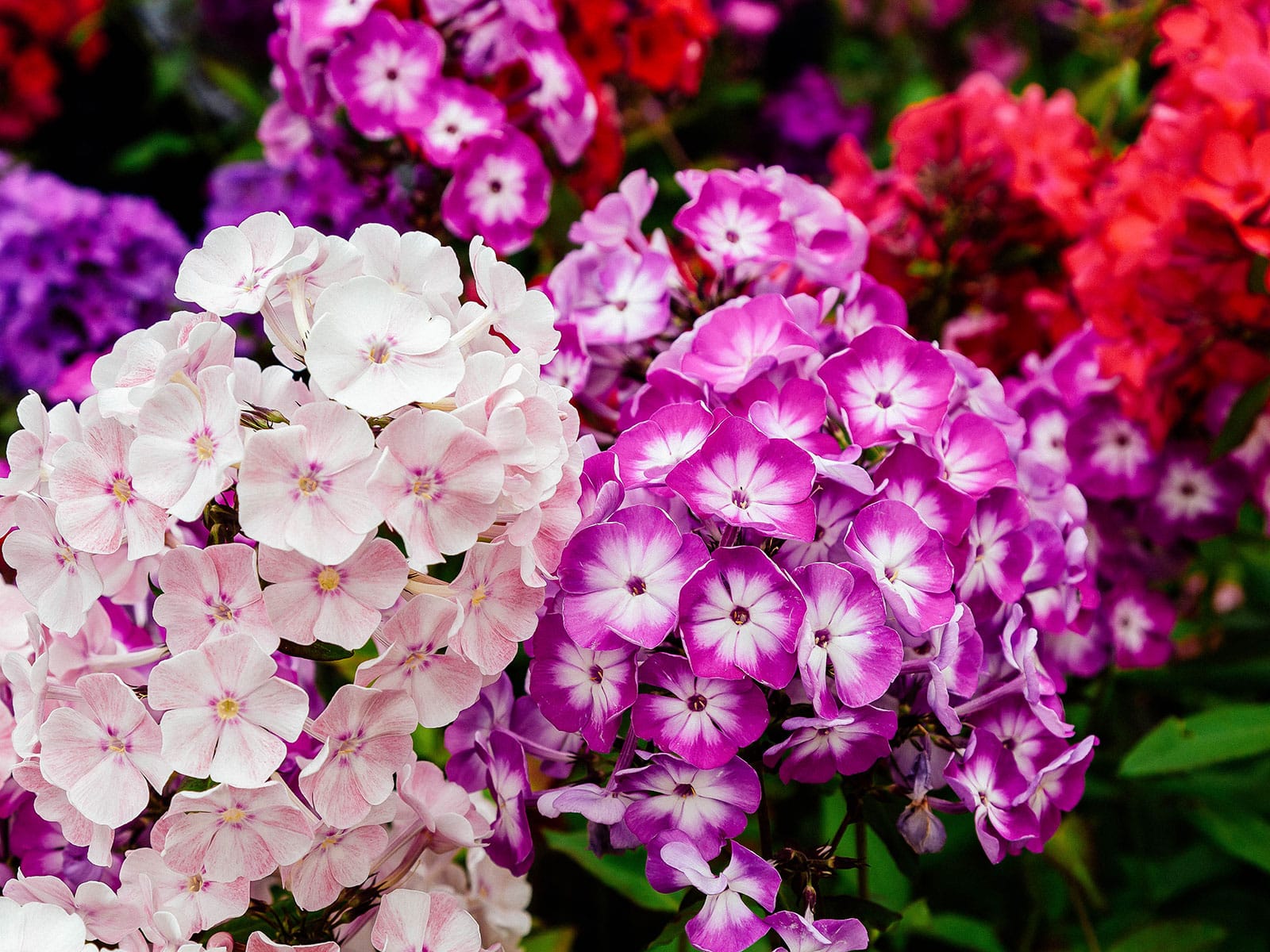
Not all phlox varieties are edible, but garden phlox is the sole exception. This cold-hardy perennial (that can survive in zone 3) has exceptionally fragrant, long-blooming flowers you can eat! The small flowers have a sweet and slightly spicy flavor and are a real treat when they’re candied and used to decorate desserts.
Gardenia (Gardenia jasminoides)
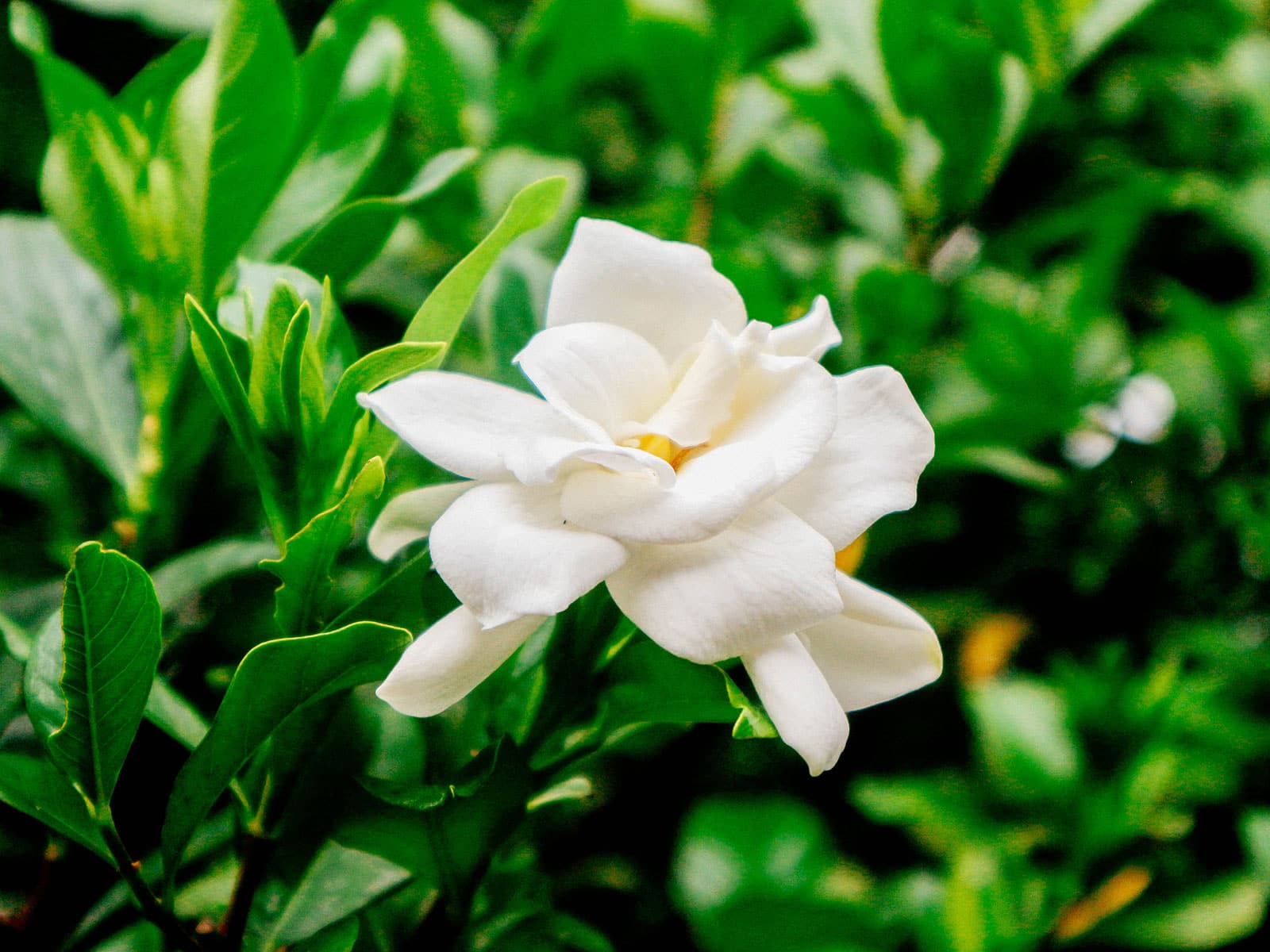
Also known as common gardenia or cape jasmine, this plant is not a jasmine at all, but bears enough similarity, flavor-wise, that its flowers are sometimes used to make jasmine tea. You could say its fragrance is less refined than that of real jasmine, but the blossoms are equally edible and can be used in tea, syrups, salads, and desserts.
Gladiolus (Gladiolus spp.)
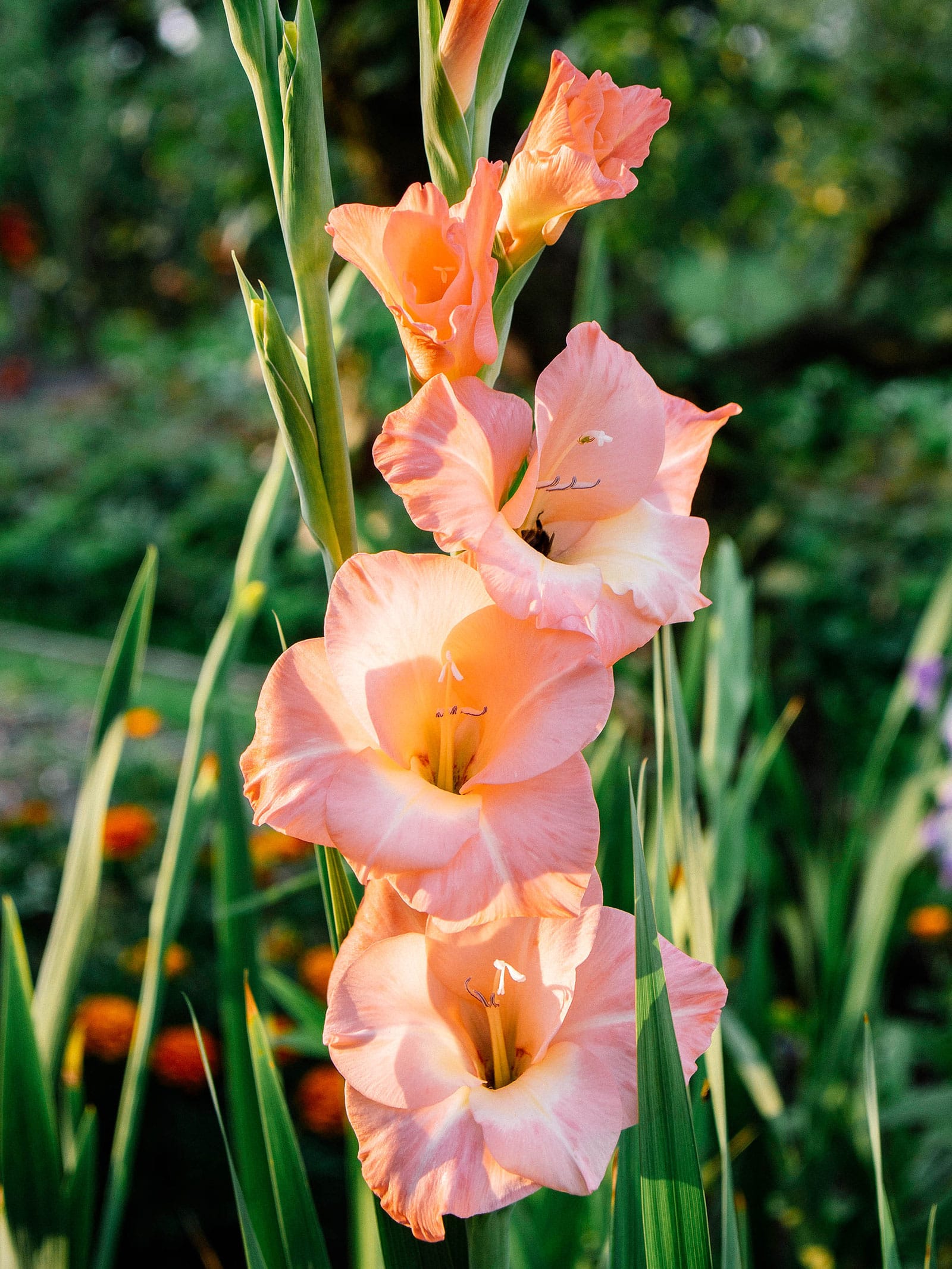
Gladiolus (sometimes referred to as gladiola) is a summer bulb with tall gorgeous spikes of orchid-like flowers. You can use the blossoms whole (just take out the anthers) or pick off the petals to use in salads. They can also be cooked, and because of their size and mild, lettuce-like flavor, gladiolus blossoms make great vessels for fillings (similar to squash blossoms).
Globe amaranth (Gomphrena globosa)
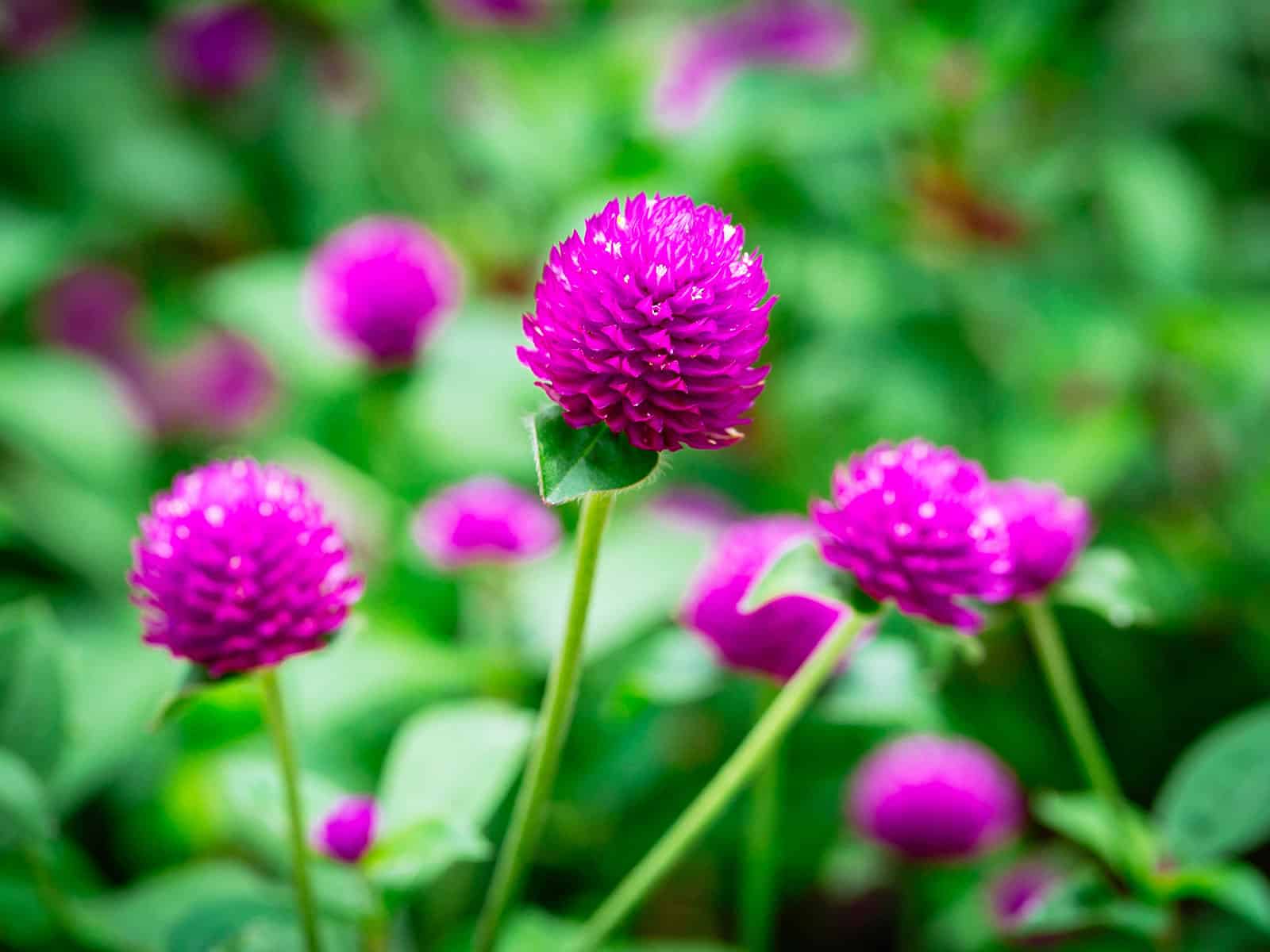
This heat-loving plant is related to amaranth (mentioned above) but features globe-shaped inflorescences. The edible flower heads have a mild and slightly earthy flavor, almost like mushrooms.
Herbs
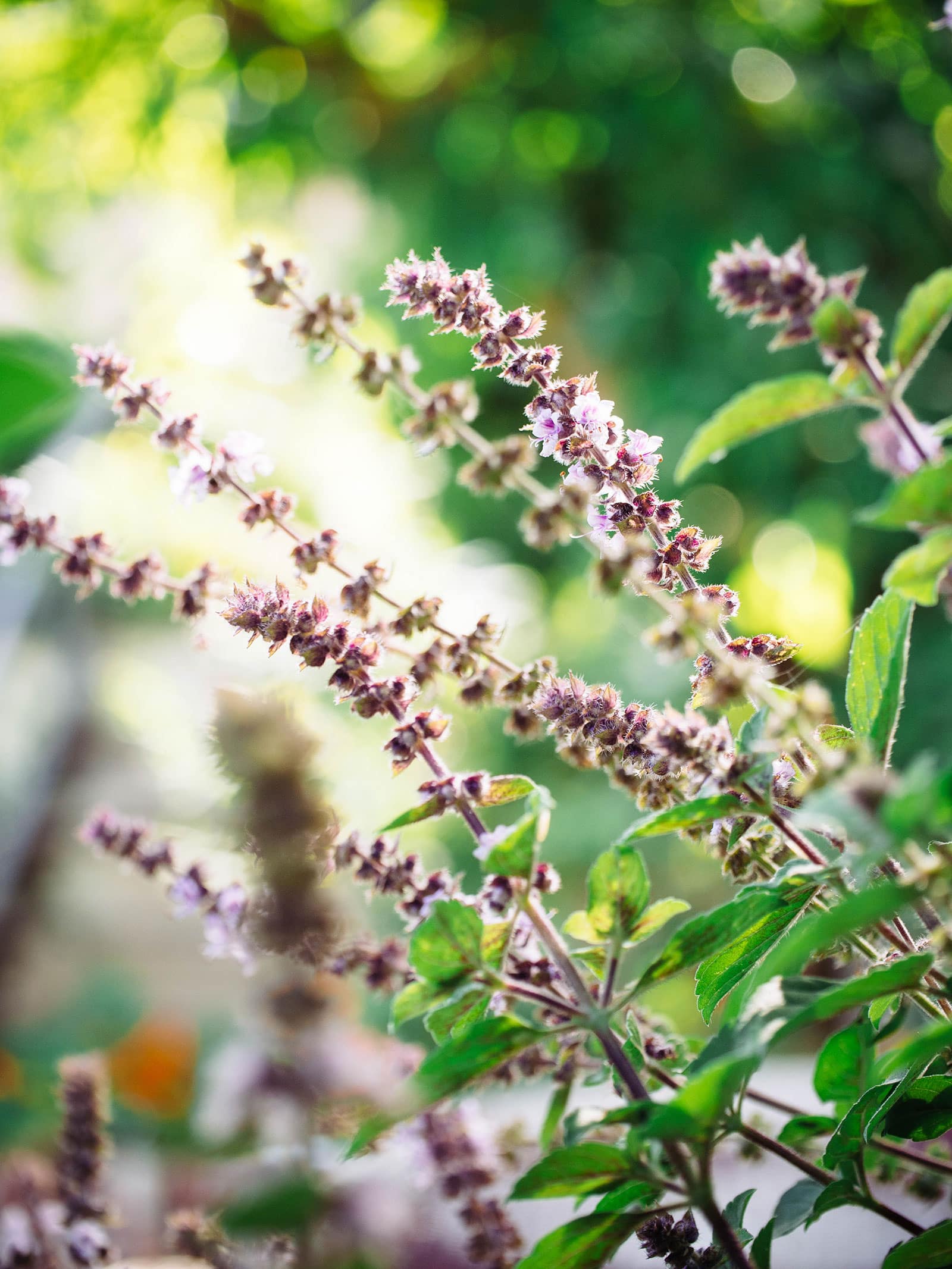
All culinary herbs have flowers that are edible, and the flowers usually taste like a slightly sweeter version of the leaf. If you grow any of these herbs, you can also harvest the blooms: mint, catmint, basil, rosemary, oregano, marjoram, thyme, onion and garlic chives, summer and winter savory, lemon balm and lime balm, lemon verbena, lovage, shiso, parsley, cilantro, tarragon, dill, fennel, chervil. And I’m sure I’ve missed a few!
Sage also has edible flowers, but be sure to stick with common sage or culinary varieties (Salvia officinalis), as not all salvias are edible.
Hibiscus (Hibiscus sabdariffa, Hibiscus acetosella, Hibiscus rosa-sinensis)
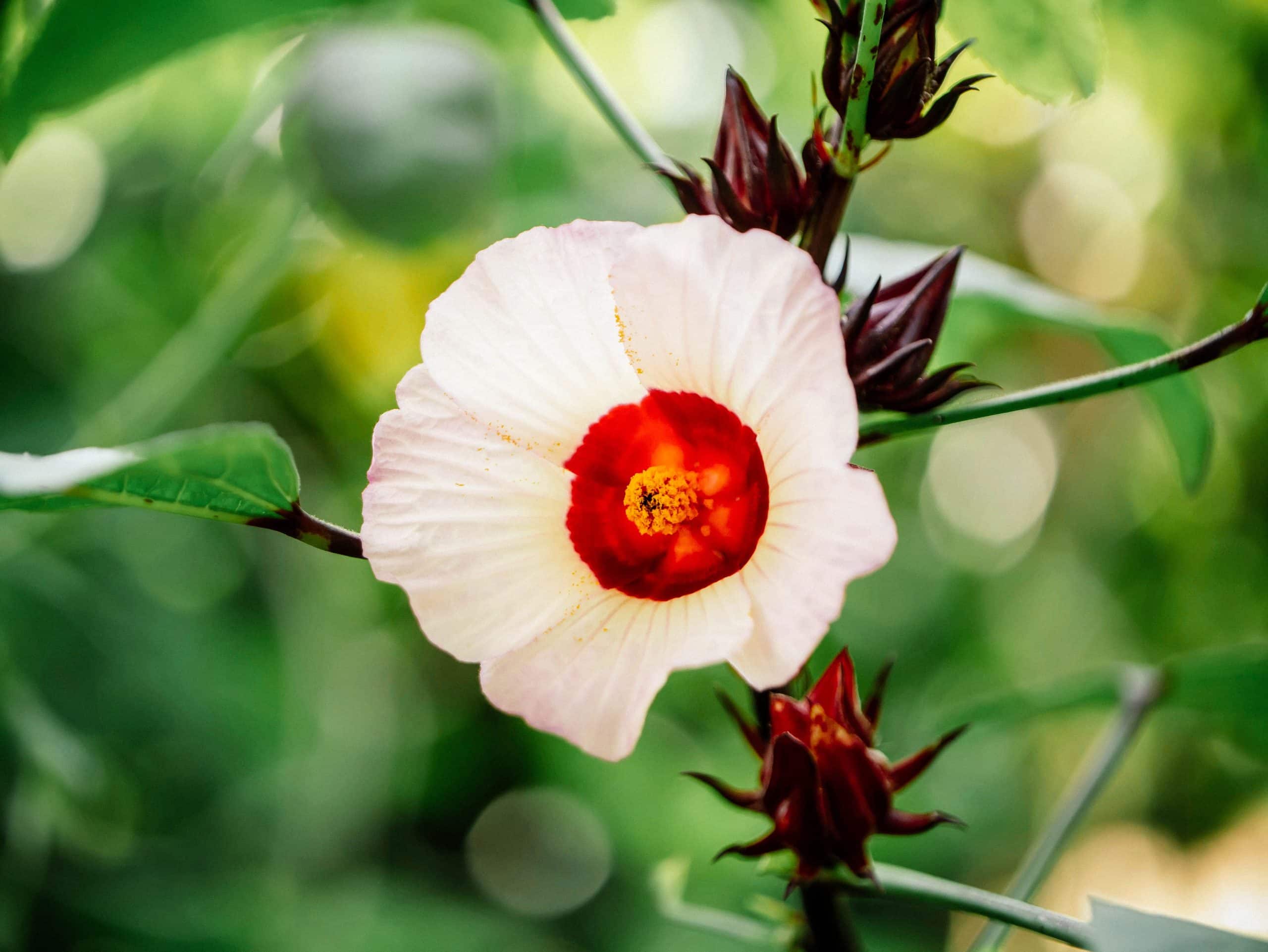
While many types of hibiscus are edible, certain varieties are bred and known specifically for their edibility, including H. sabdariffa (commonly known as roselle or Jamaican sorrel), H. acetosella (known as false roselle), and H. rosa-sinensis (known as rose mallow).
While the calyxes are most often used to make hibiscus tea, you can also eat the petals and leaves—all of these parts pack a tangy punch.
Hollyhock (Alcea rosea, Malva alcea)
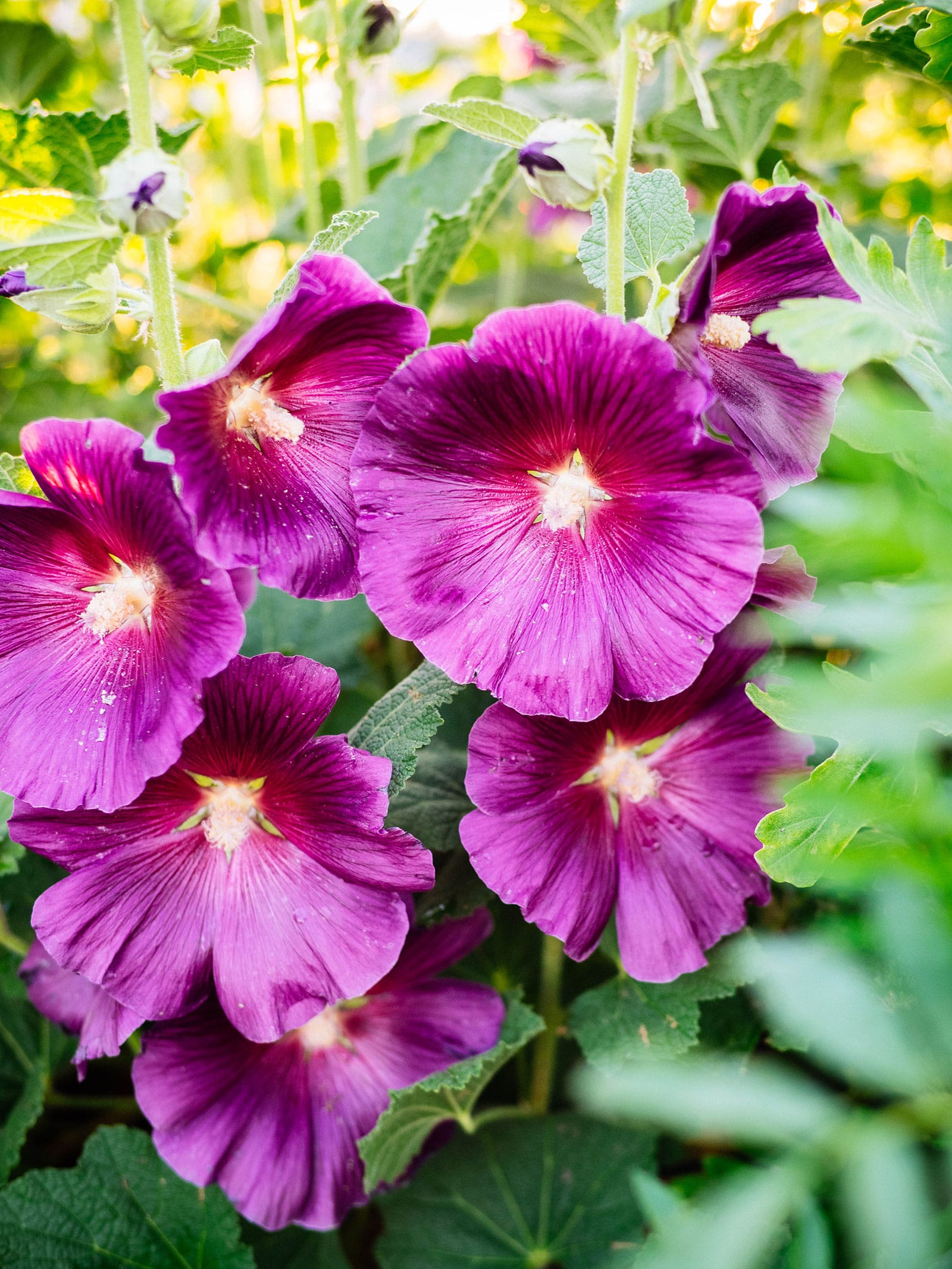
Surprise! This old-fashioned bloomer is completely edible, including the flowers, leaves, roots, and seeds. Using a whole flower in a salad makes it a real showstopper, but other than looks, hollyhocks aren’t much to write home about, flavor-wise. The petals are a bit chewy and rather bland, but the neutral flavor profile is what makes them a great addition to most dishes.
Honeysuckle (Lonicera spp.)
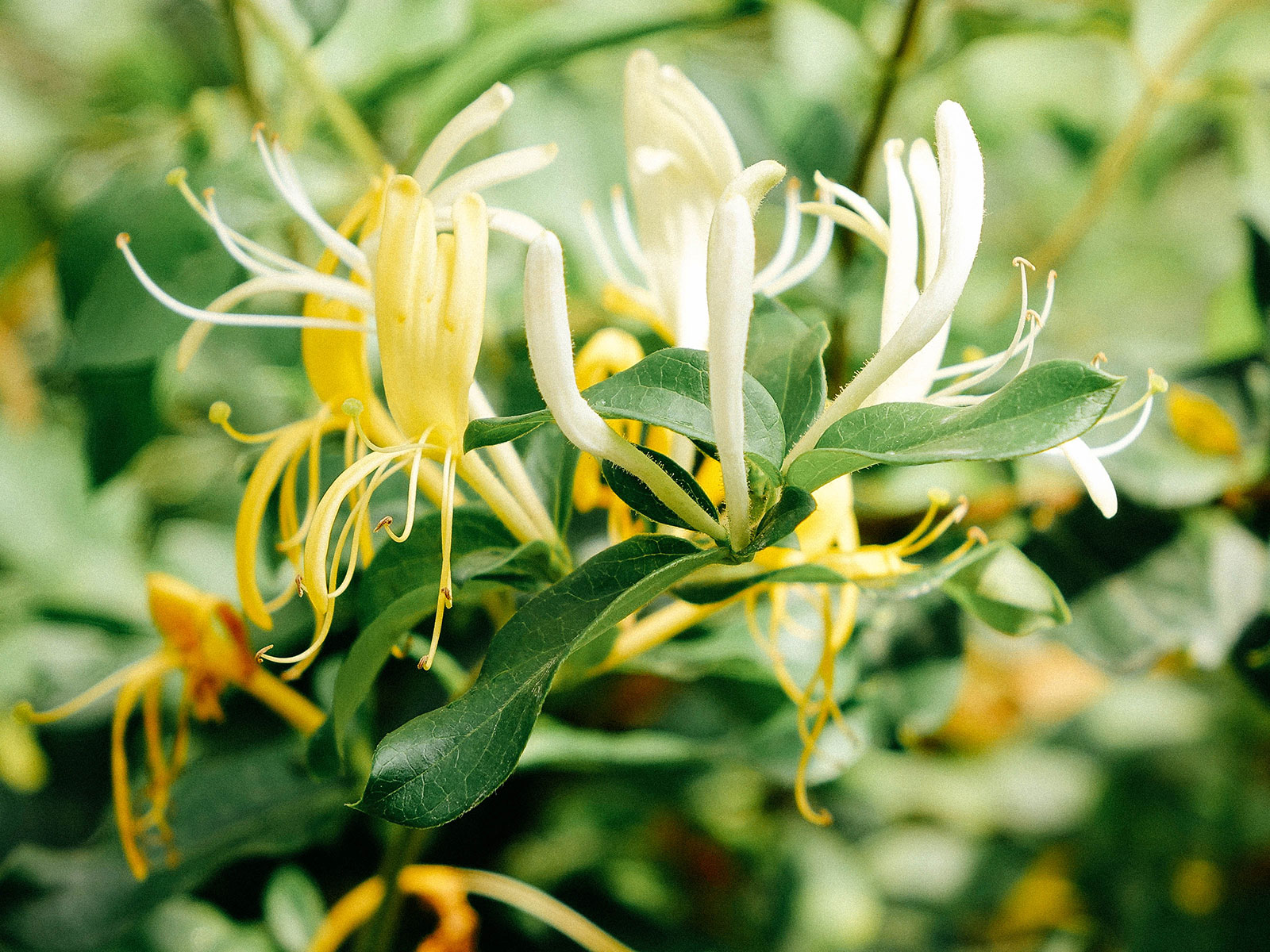
As a kid (or even as an adult), you probably sucked the candy-sweet nectar out of a honeysuckle flower. But what you may not have known is that the flower itself is edible and tastes like honey. It can be used to flavor tea or wine, but I personally like putting it in salads or decorating desserts with it.
Hosta (Hosta spp.)
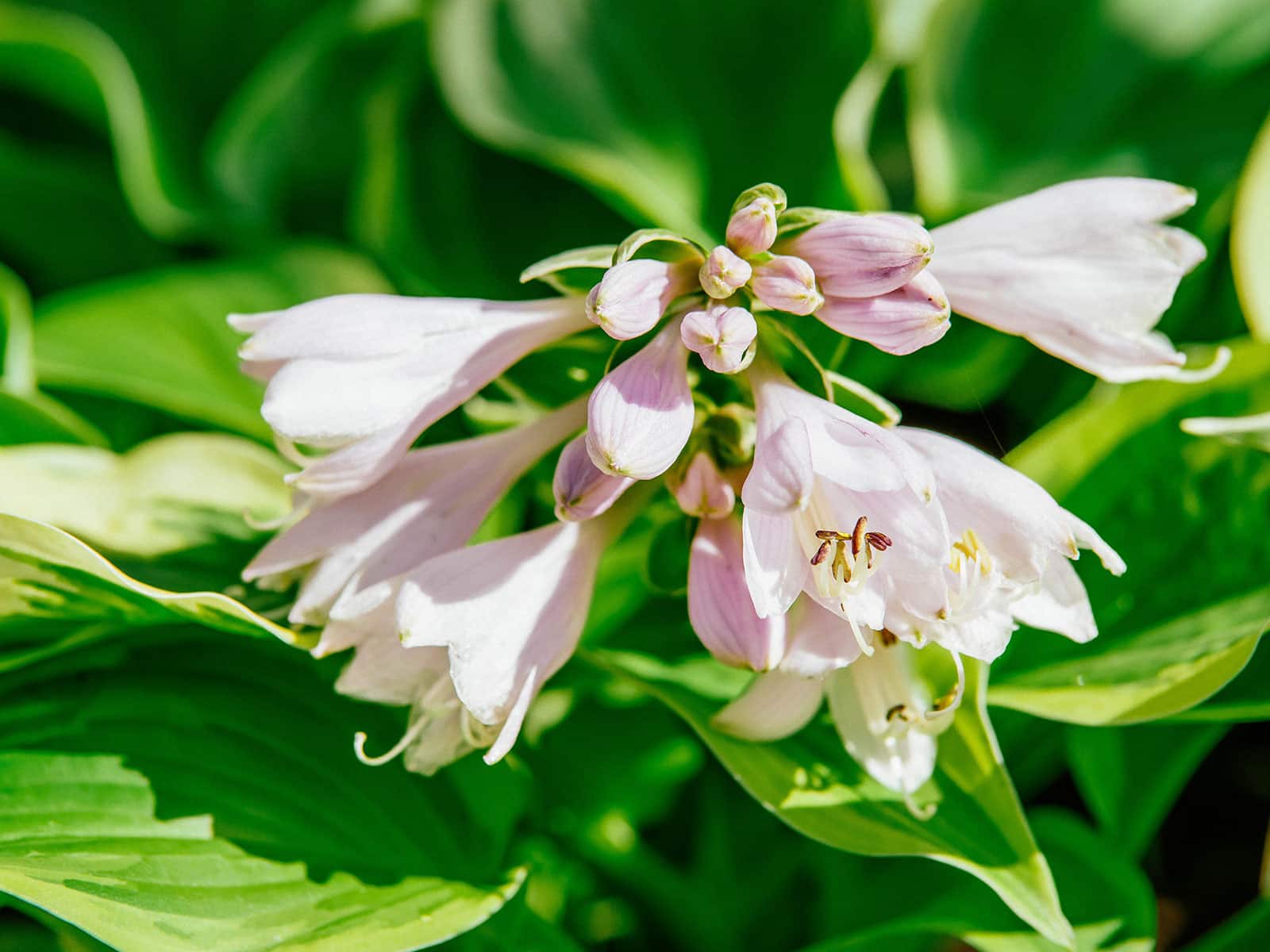
You may not have known that this popular shade plant has edible flowers. But what’s even more surprising is that the tender shoots which emerge in spring can be picked and cooked like a vegetable! (Just remember to leave a few so the plant can develop.)
Hosta shoots have an asparagus-like flavor and texture, but if you miss the window for harvesting, just wait for the flowers to appear. Hosta flowers range from mild to slightly sweet and make a beautiful garnish for a variety of dishes.
Impatiens (Impatiens walleriana)
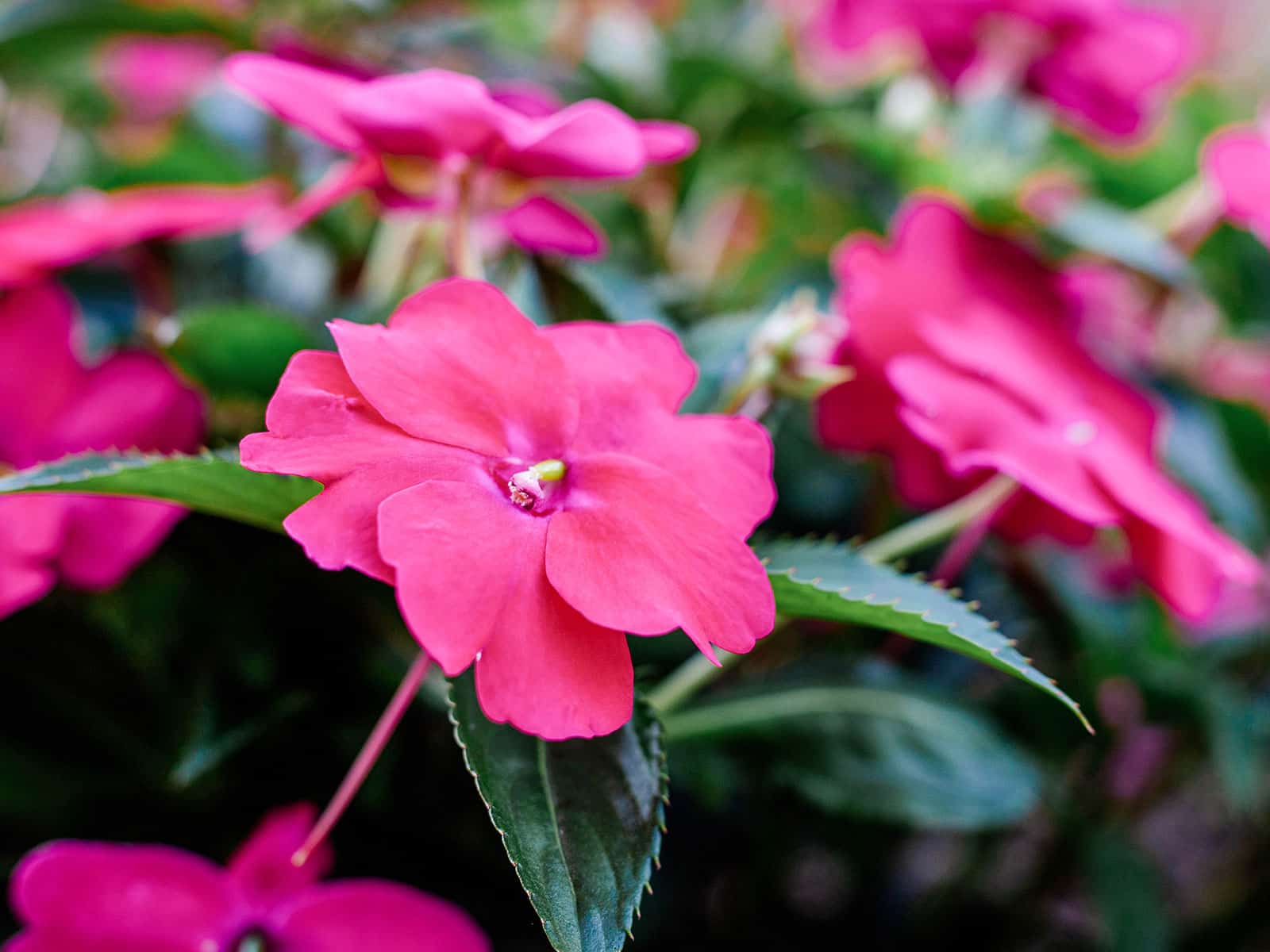
Common garden impatiens is not commonly used as an edible flower, even though it can have a surprisingly sweet taste. Some varieties of impatiens have beautiful double blossoms that look a bit like roses and can really dress up a plate. Personally, I love to pull off the petals and float them in fancy drinks.
Jasmine (Jasminum officinale, Jasminum sambac)
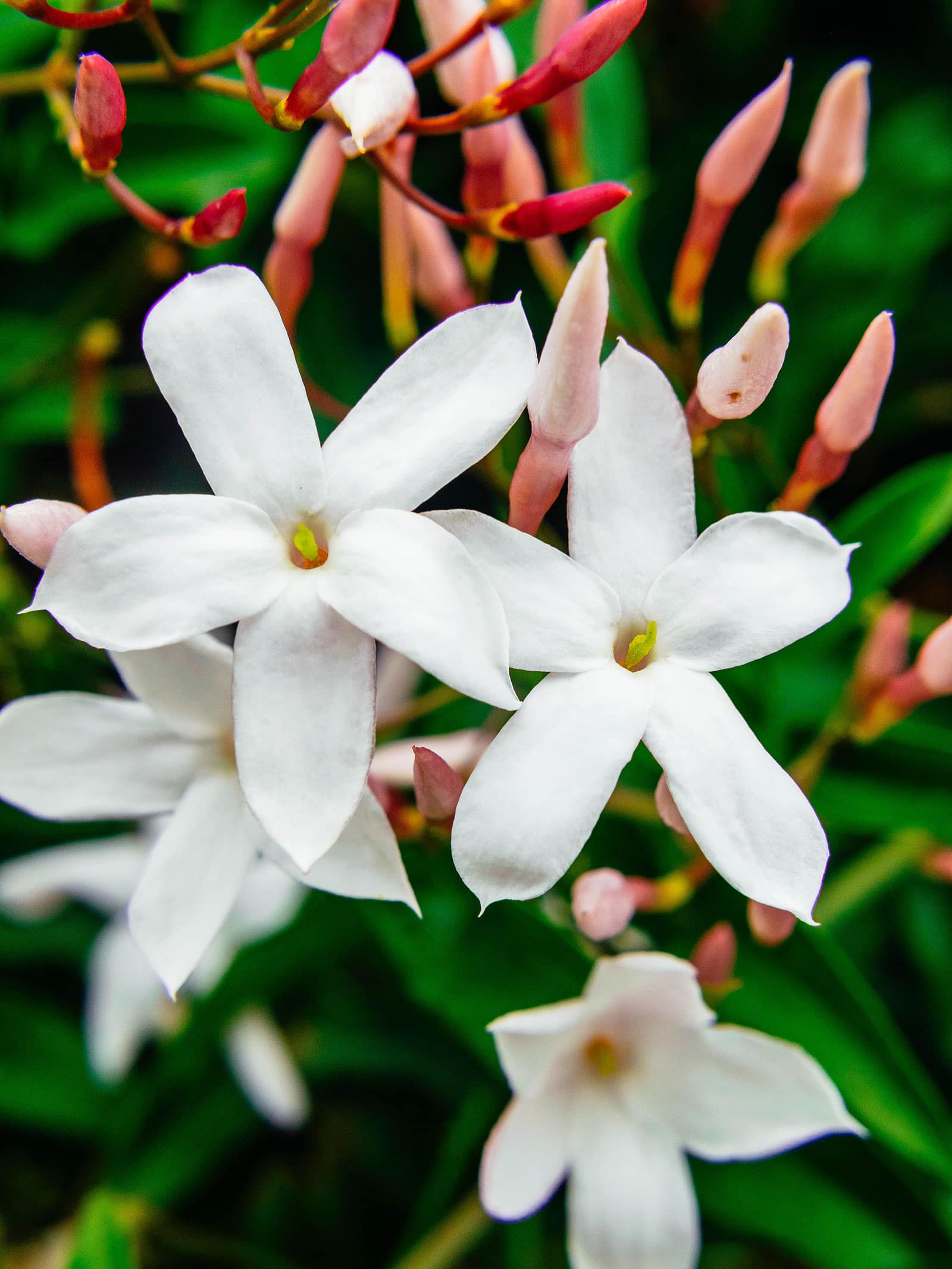
You probably already know that jasmine is edible—after all, that’s how we get jasmine tea. But make sure you’re harvesting the correct jasmine, and not jasmine from another genus or species. The only edible jasmines are J. officinale (also known as common jasmine or true jasmine) and J. sambac (Arabian jasmine).
The intensely fragrant white flowers are used to garnish salads and to flavor syrups, jellies, and baked goods.
Lavender (Lavandula angustifolia)
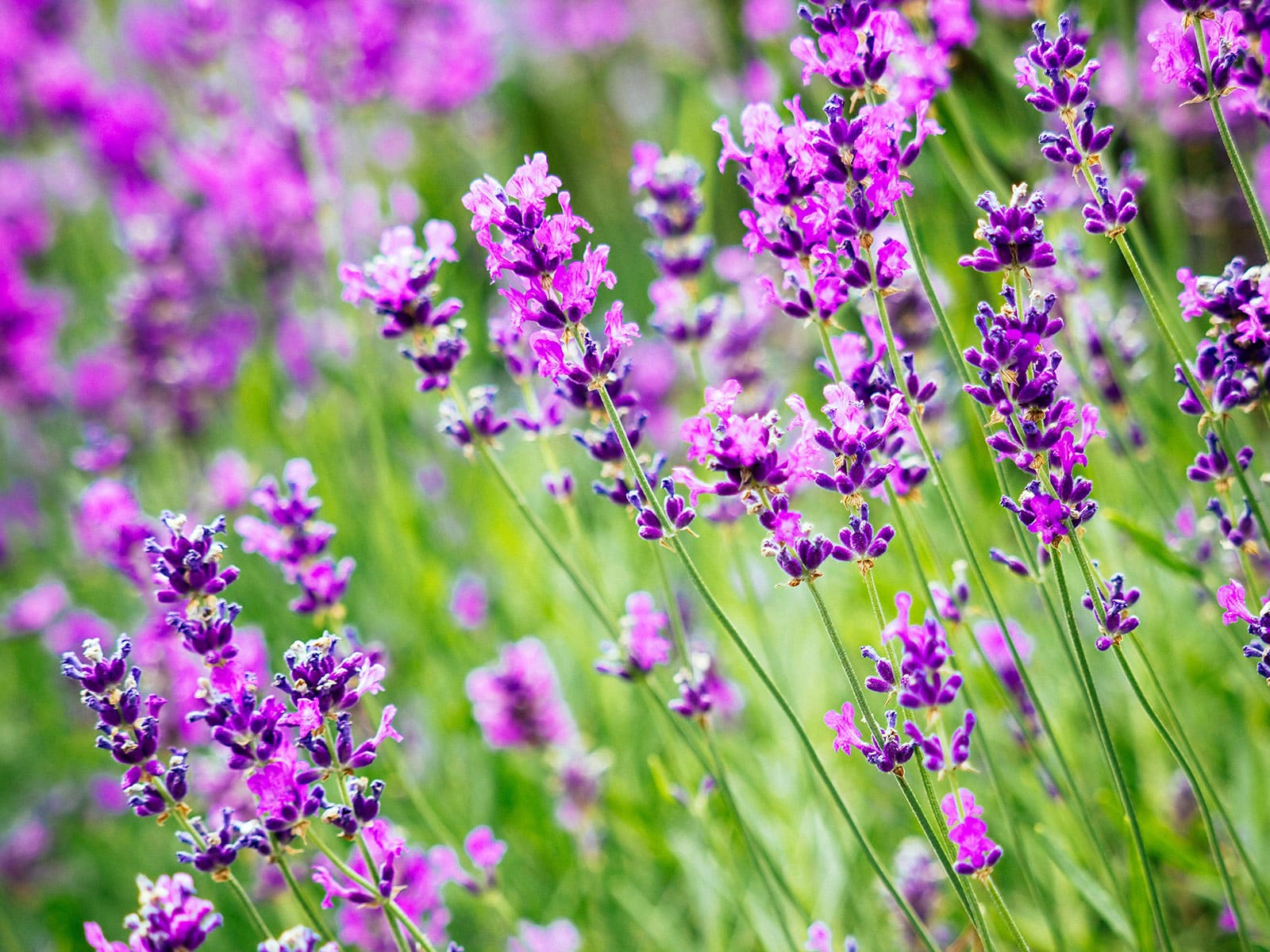
Lavender needs no introduction, as the herb is known for its fragrant edible flowers. Though most people like to dry lavender for use in tea, fresh blooms can be used to infuse syrups, float in drinks, and decorate desserts. Harvest when the flowers just begin to open.
Lilac (Syringa vulgaris)

Ohhh yes—lilacs are edible! And they taste just like how they smell, which is light and floral with hints of citrus peel. I think they’re delicious and they can be used so many different ways: lilac sugar, lilac honey, lilac syrup, lilac ice cream, or lilac cake, to name a few.
Love-in-a-mist (Nigella damascena)

Nigella has a romantic quality about it that makes the flowers a beautiful choice for decorating desserts and drinks. The flowers are mild in flavor and subtly nutty, so they can be used as a garnish in almost any kind of dish.
Marigold (Tagetes tenuifolia, Tagetes lucida)
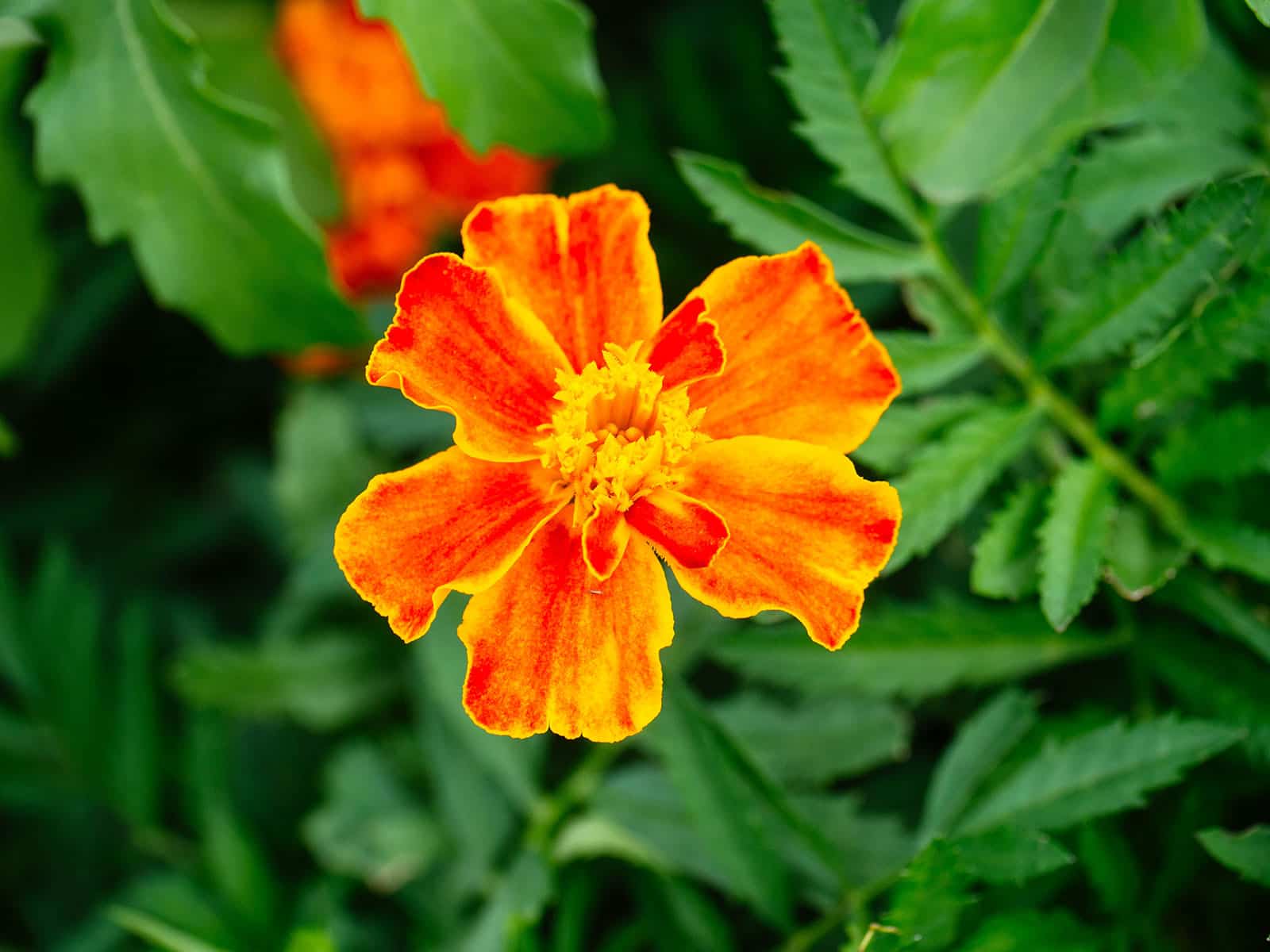
Signet marigolds (T. tenuifolia, also known as lemon marigolds) generally have a citrusy and sort of peppery taste (think arugula) with hints of licorice. Some varieties (like ‘Lemon Gem’ and ‘Tangerine Gem’) have brighter and stronger citrus notes that remind of me citrus zest.
Mexican mint marigolds (T. lucida) have a tarragon-like flavor, which is fitting as they’re sometimes also known as Mexican tarragon.
Mint (Mentha spp.)
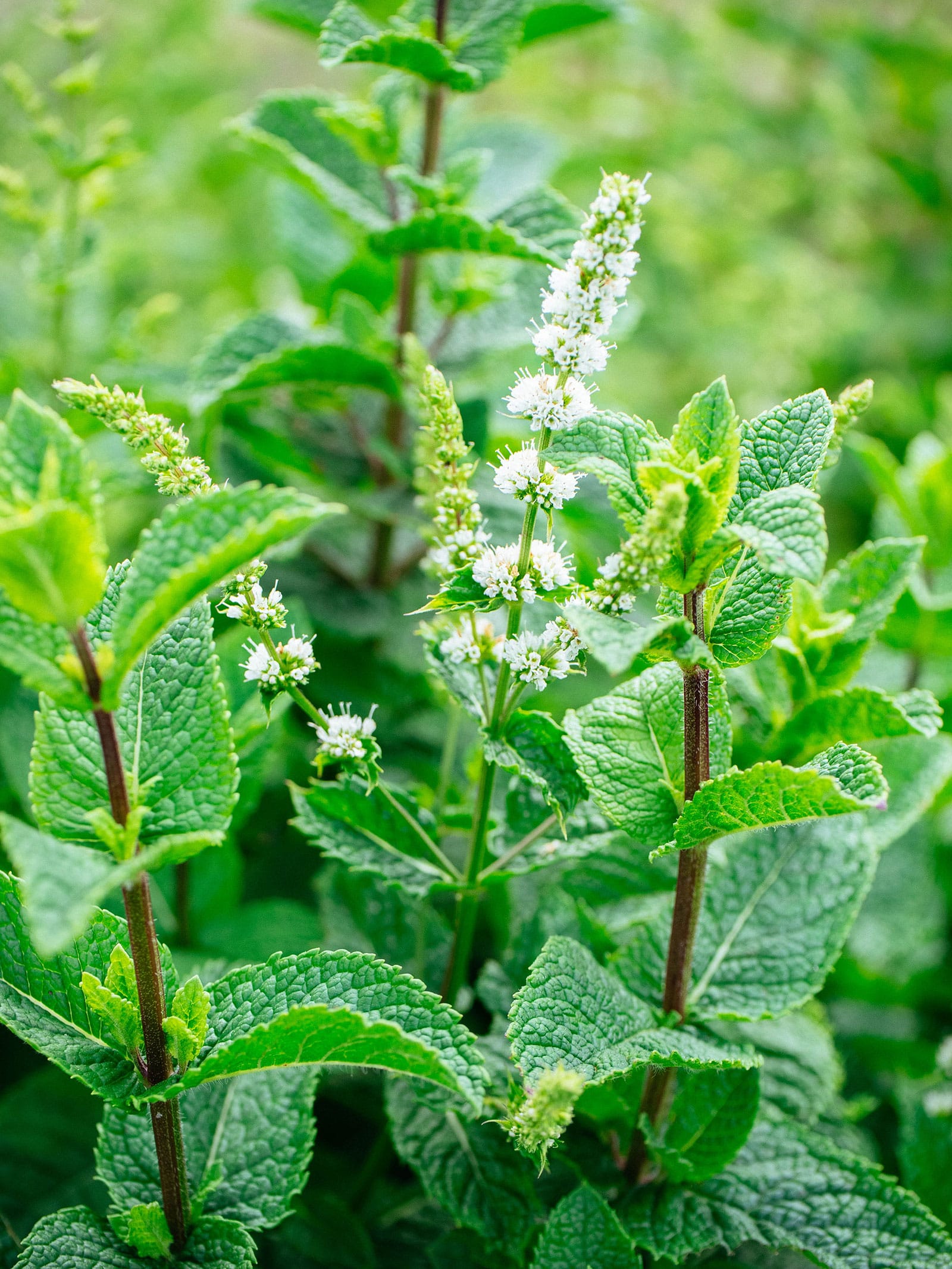
All mints have edible flowers, and they’re an incredible pollinator magnet when left to bloom! The flowers are tiny but pack a flavorful punch, just like the leaves.
Depending on the variety grown, mint flowers may taste like chocolate, lemon, orange, pineapple, ginger, spearmint, peppermint, and more. I like to infuse my summertime drinks with them and also use the flowers (both fresh and dried) in my herbal teas.
Nasturtium (Tropaeolum majus)
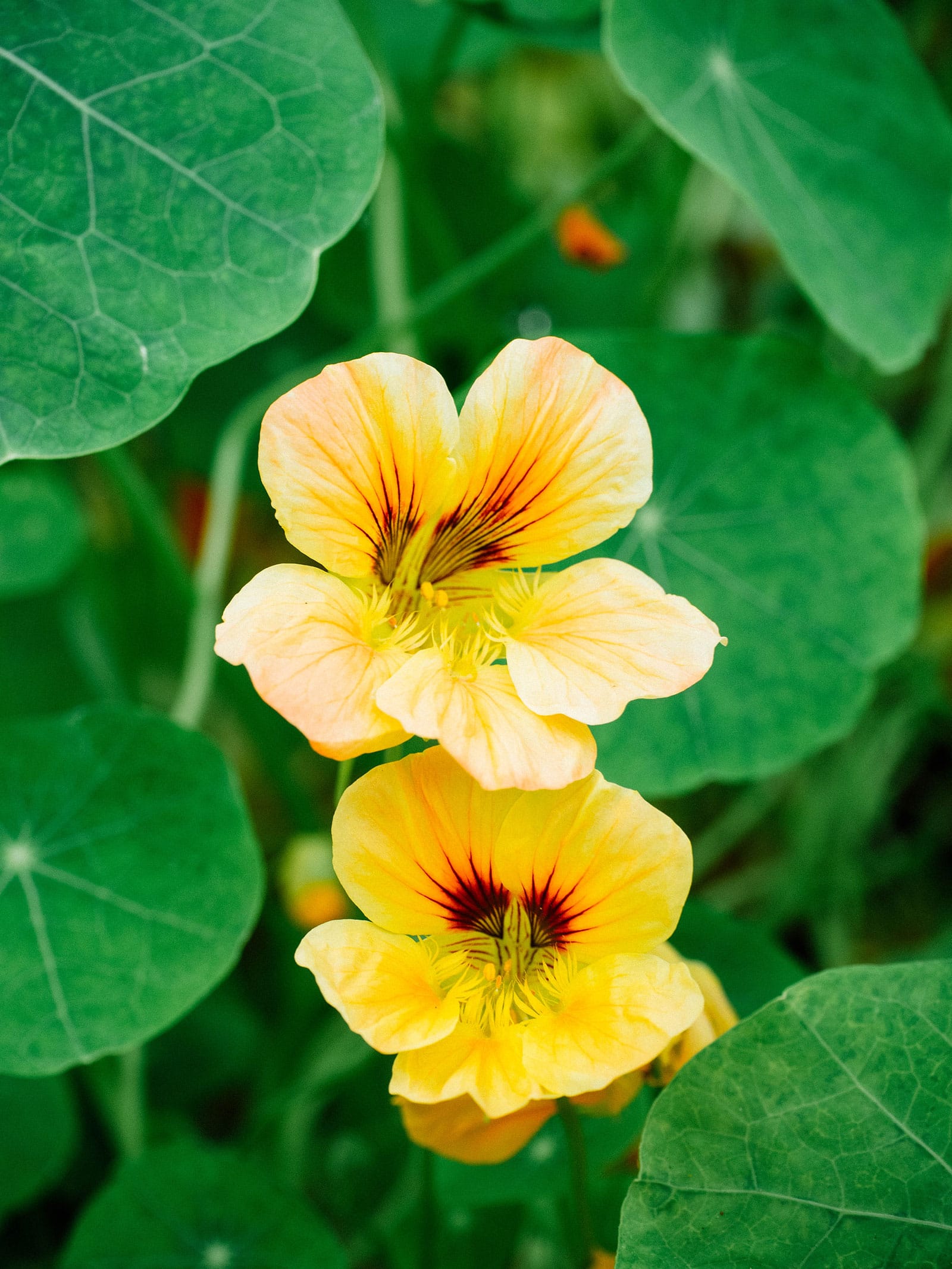
Peppery, mustardy nasturtiums are a long-time favorite in my garden, and I’ve used the edible flowers and leaves in salads to add some heat, as well as made nasturtium pesto as a spicier alternative to traditional basil pesto. Once the flowers fade and begin to produce seeds, you can harvest the seeds to make pungent “poor man’s capers” too.
Okra (Abelmoschus esculentus)
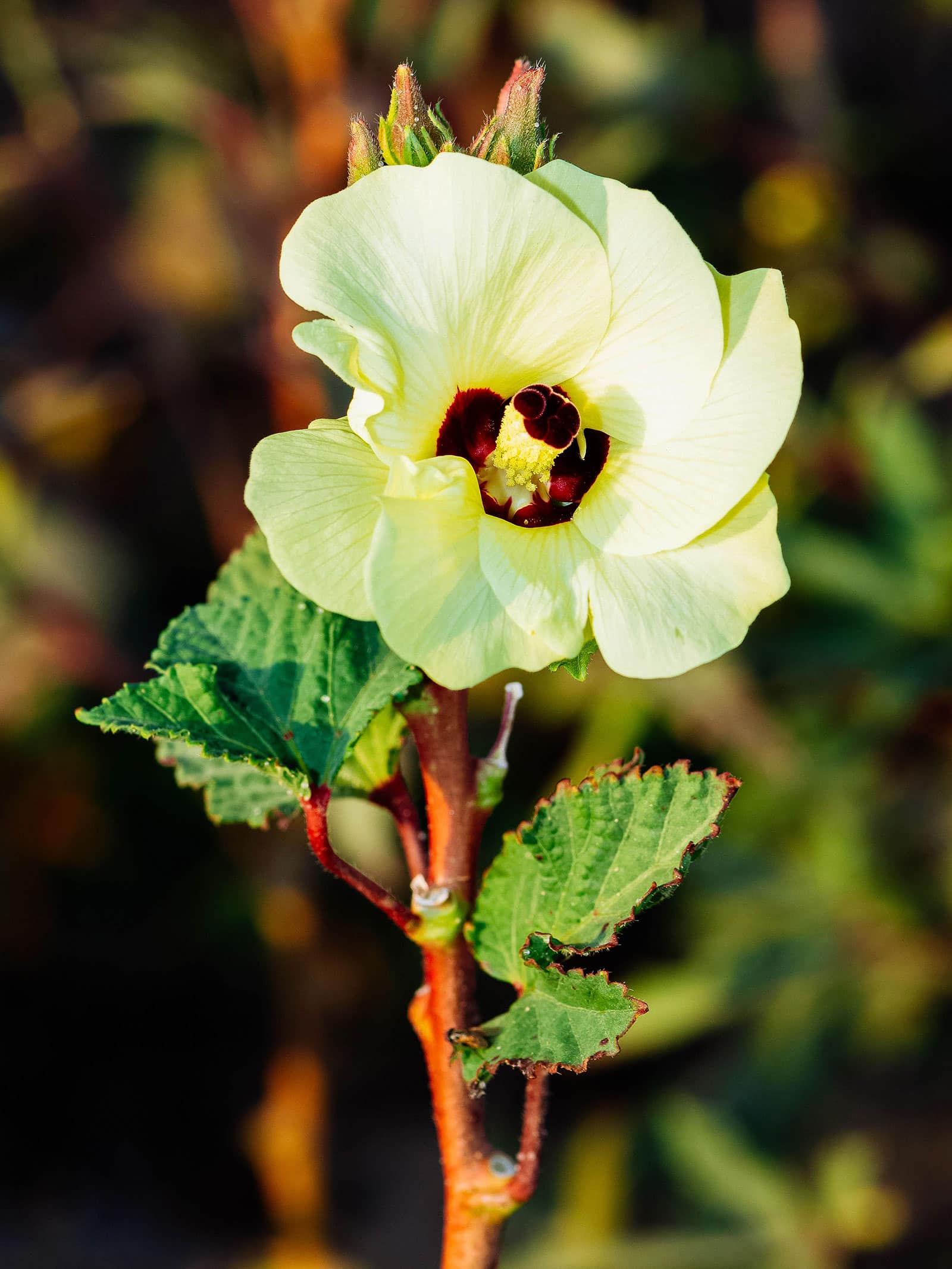
If you live in a hot climate, okra is a great addition to a garden—even if you don’t like okra. The plant produces lots of large, beautiful blooms that quickly mature into edible seed pods (the okra we know as a vegetable).
Okra flowers have a similar mild flavor to the pods (sort of asparagus-like) with a touch of sweetness, which works well in salads and stir-fries, and their size also makes them good for stuffing and frying. Keep picking the blooms for an abundant supply of edible flowers if you’re not into the pods. (The flowers don’t have the slimy texture that most people associate okra with.)
A top-to-tail approach
Waste less food and eat better too
A lot of the food you buy or grow often ends up in the compost or garbage but deserves a place on your plate. Think: kale stems, radish greens, carrot tops, watermelon rind, or the dark green ends of leeks (that every recipe tells you to discard).
Learn how to use the whole plant—from top to tail—so you waste less food in the kitchen and get more out of your produce.
Orchid (Dendrobium spp., Epidendrum spp.)
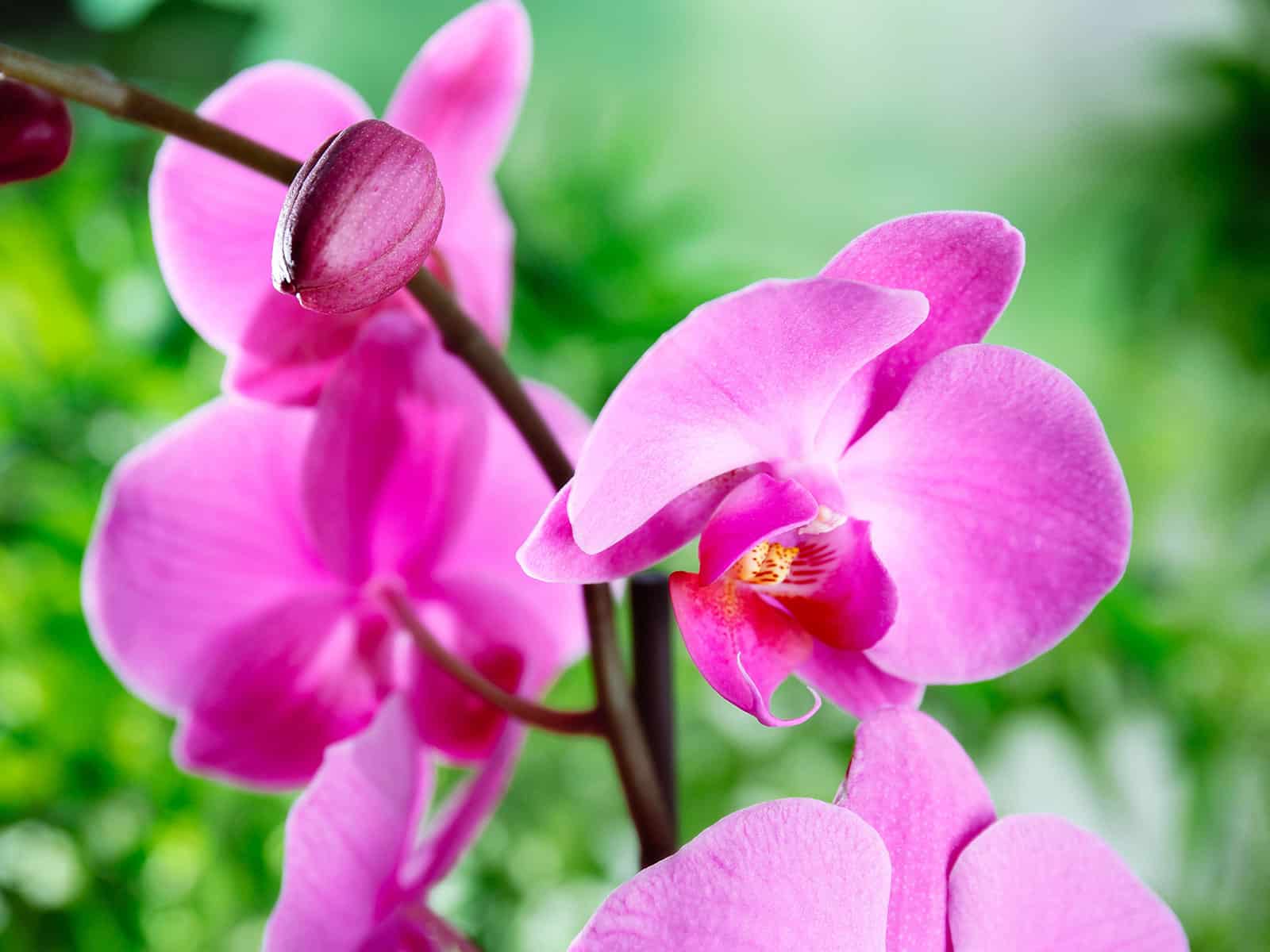
While all orchids are technically edible (as they aren’t known to be toxic to humans), you’re best sticking with Dendrobiums and Epidendrums, as they’re commonly grown for edible flower production. The flowers have a wide range of flavors, depending on the cultivar: from fresh and cucumber-like to slightly sweet and nutty.
Pansy (Viola x wittrockiana)
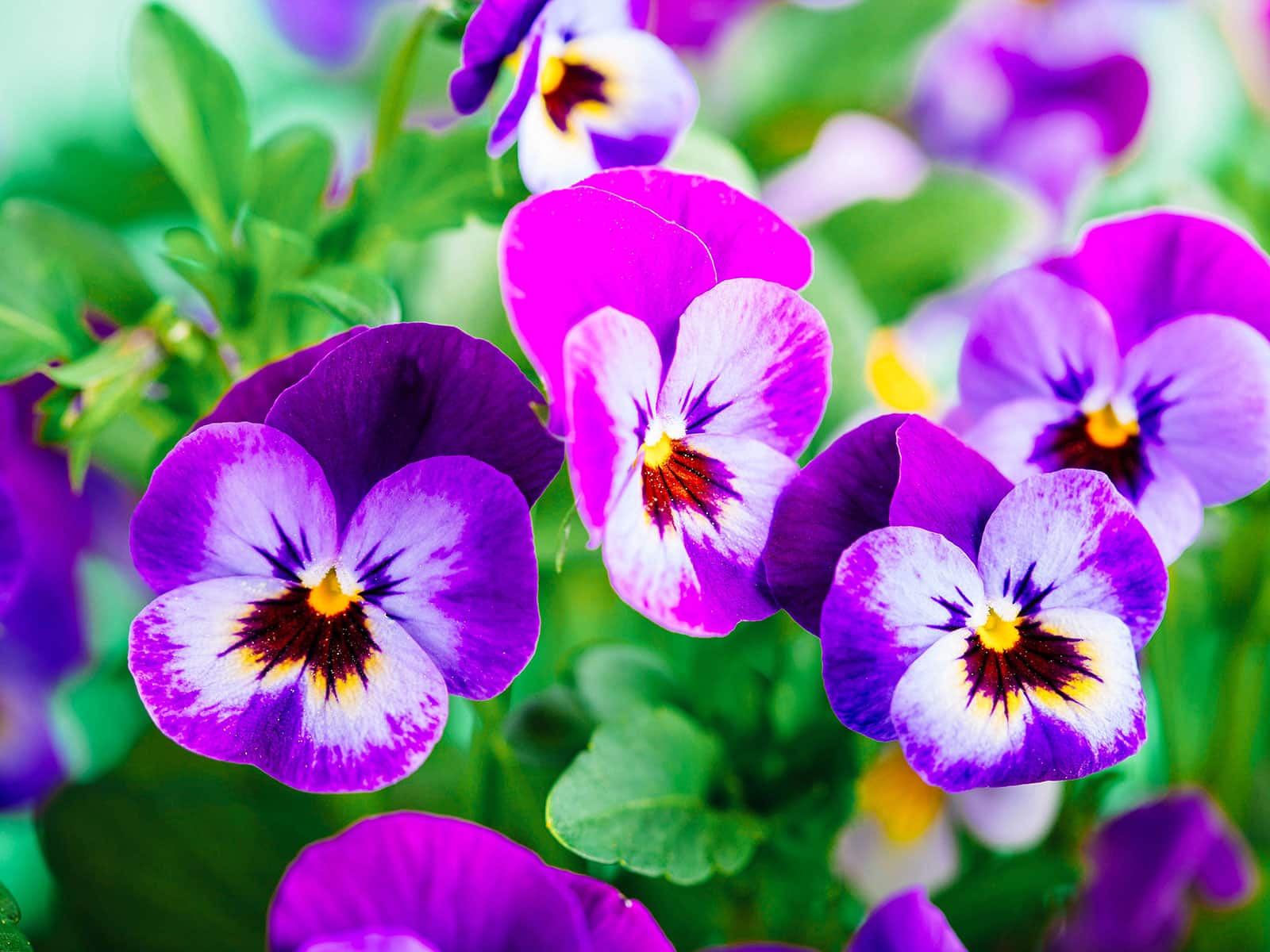
Although pansies are a type of viola, I list them separately because all pansies are edible (but not all viola species are). Pansies have a subtle sweetness, kind of like baby lettuce, which makes them really appealing in salads.
Pea (Pisum sativum)
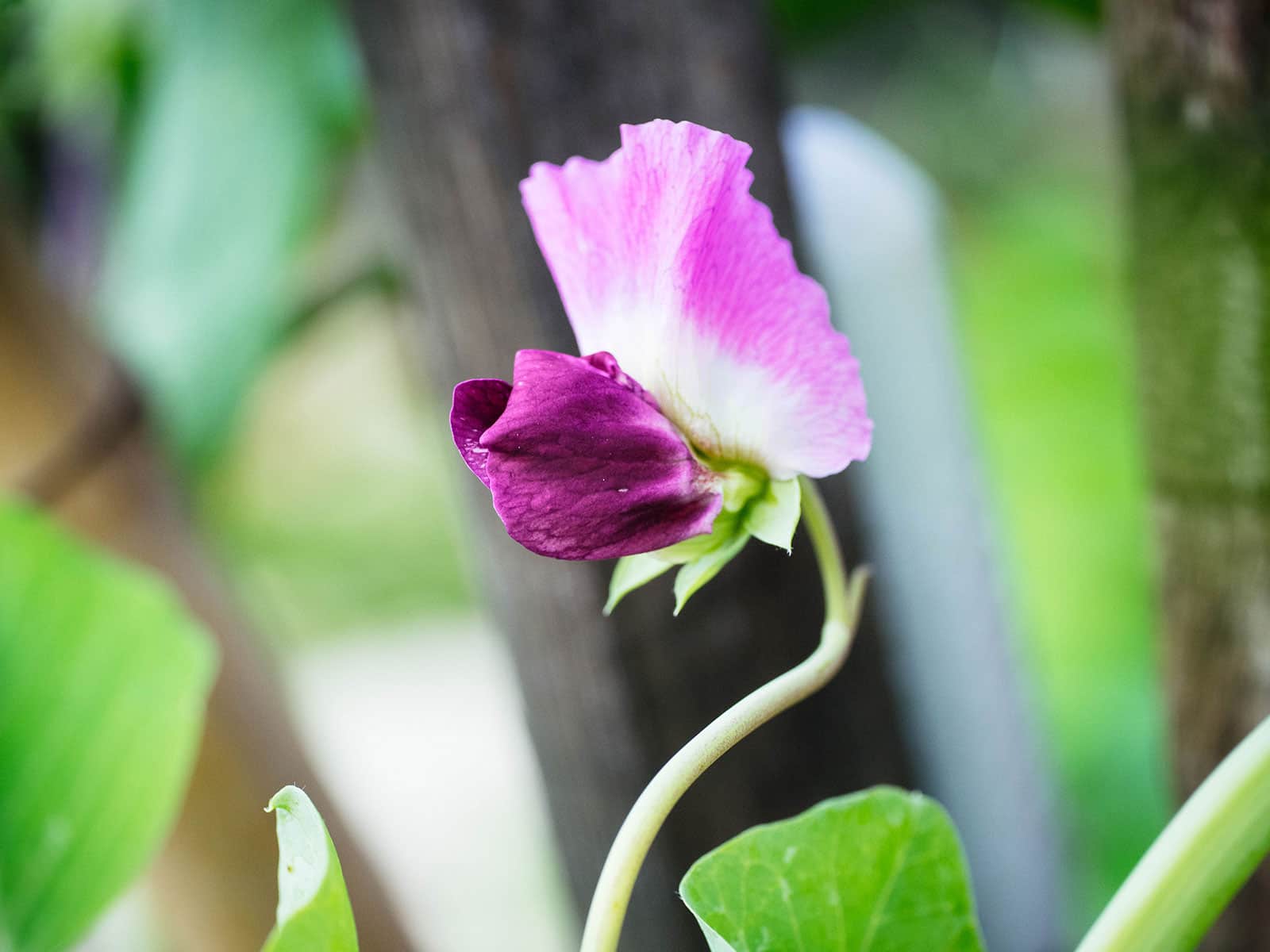
Common garden peas and field peas have tender flowers that taste like a milder version of peas: light and sweet. They do well and look pretty in salads and similar dishes.
If you’re looking for prolific flower production, plant bush or dwarf varieties in early spring and then sow another round of seeds in mid to late summer. (Stay away from ornamental sweet peas, Lathyrus odoratus, as they are toxic.)
Petunia (Petunia x hybrida)
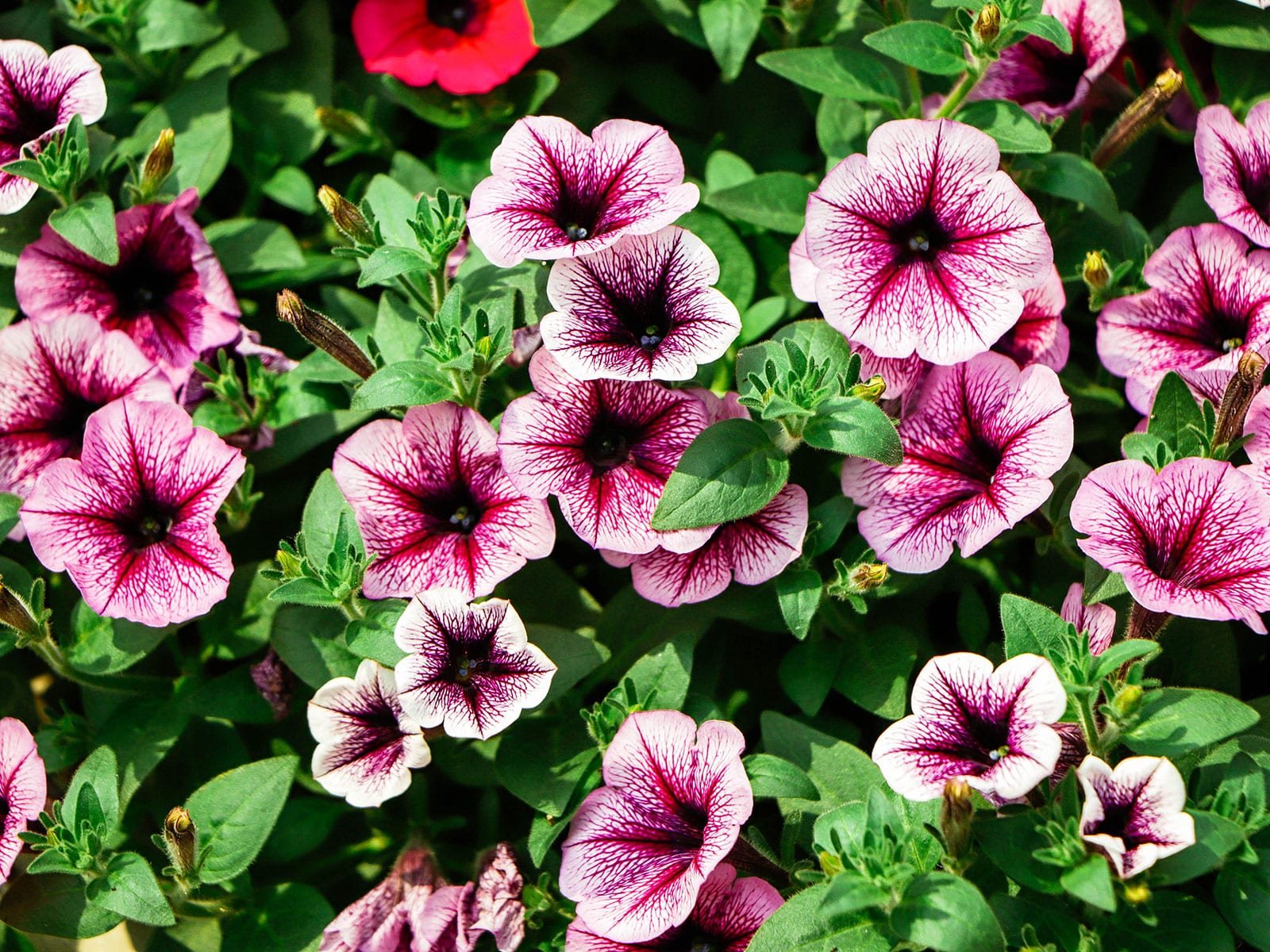
I was surprised when I learned that modern garden petunias are edible! They come in an array of colors and patterns, with newer generations sporting ruffled edges.
Because they’re all hybrids cultivated for looks (and not necessarily flavor), modern petunias can range from bland to sweet. Some of the sweetest (and prettiest) petunias I’ve tasted are the frilly ‘Superbissima’ types.
Plumeria (Plumeria spp.)
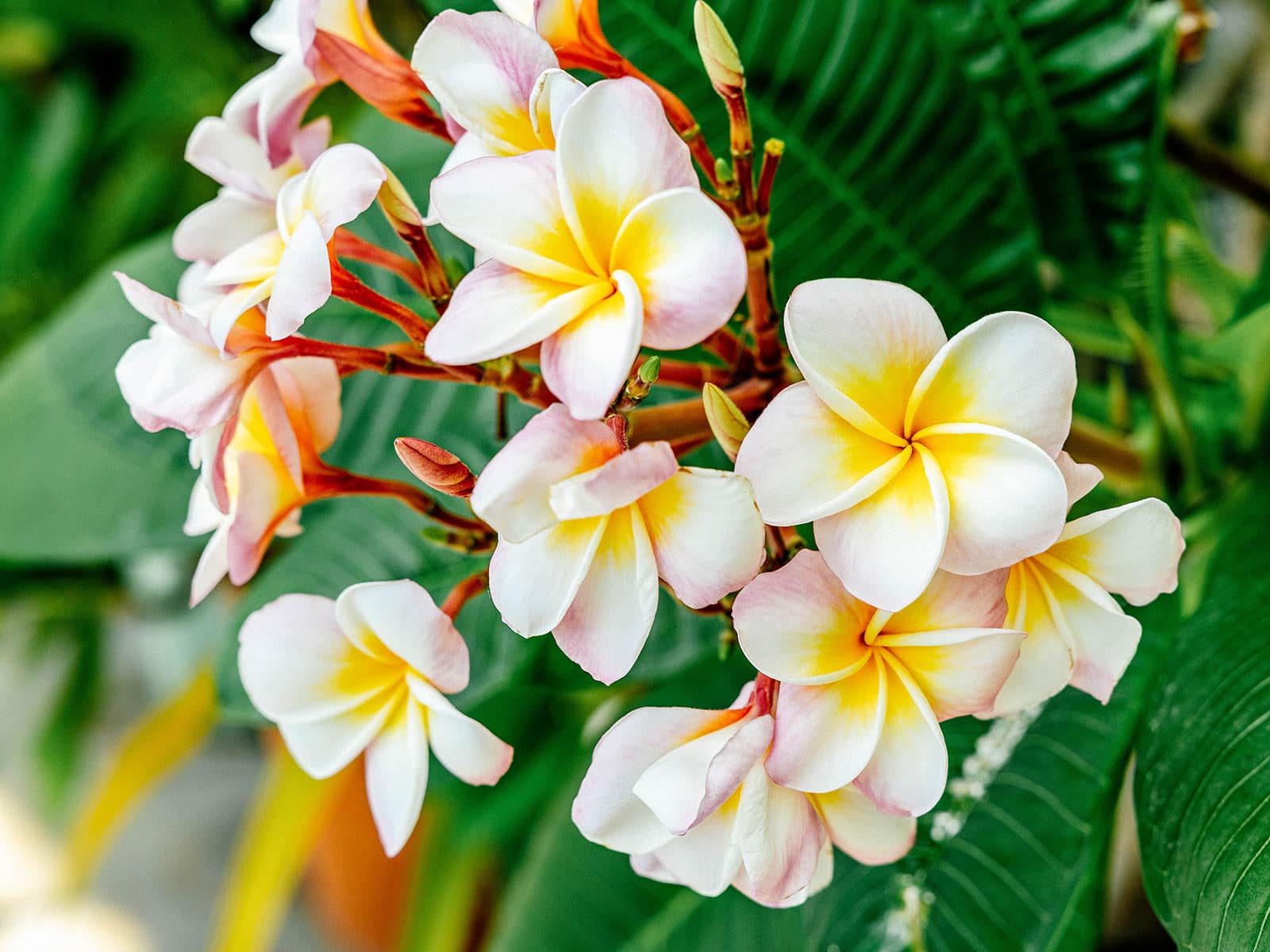
When I lived in Southern California, my entire garden was filled with plumeria trees and ohhh how I miss the intoxicatingly sweet scent of those flowers!
While the rest of the tree is considered poisonous, the flowers are actually edible—but this comes with an asterisk. Plumeria flowers should only be eaten in small quantities (which is true of all edible flowers, anyway) so use them as garnishes for salads or drinks, or steep the flowers to make tea. Take care in harvesting the flowers, since the milky sap can cause skin irritation in some people.
Plumeria flowers taste just like they smell: sweet like honey, with a floral or fruity aroma that hints of jasmine or peach.
(Note that while plumeria is also known as frangipani, recipes that call for frangipane are referring to a sweet almond filling.)
Primrose (Primula vulgaris, Primula officinalis)
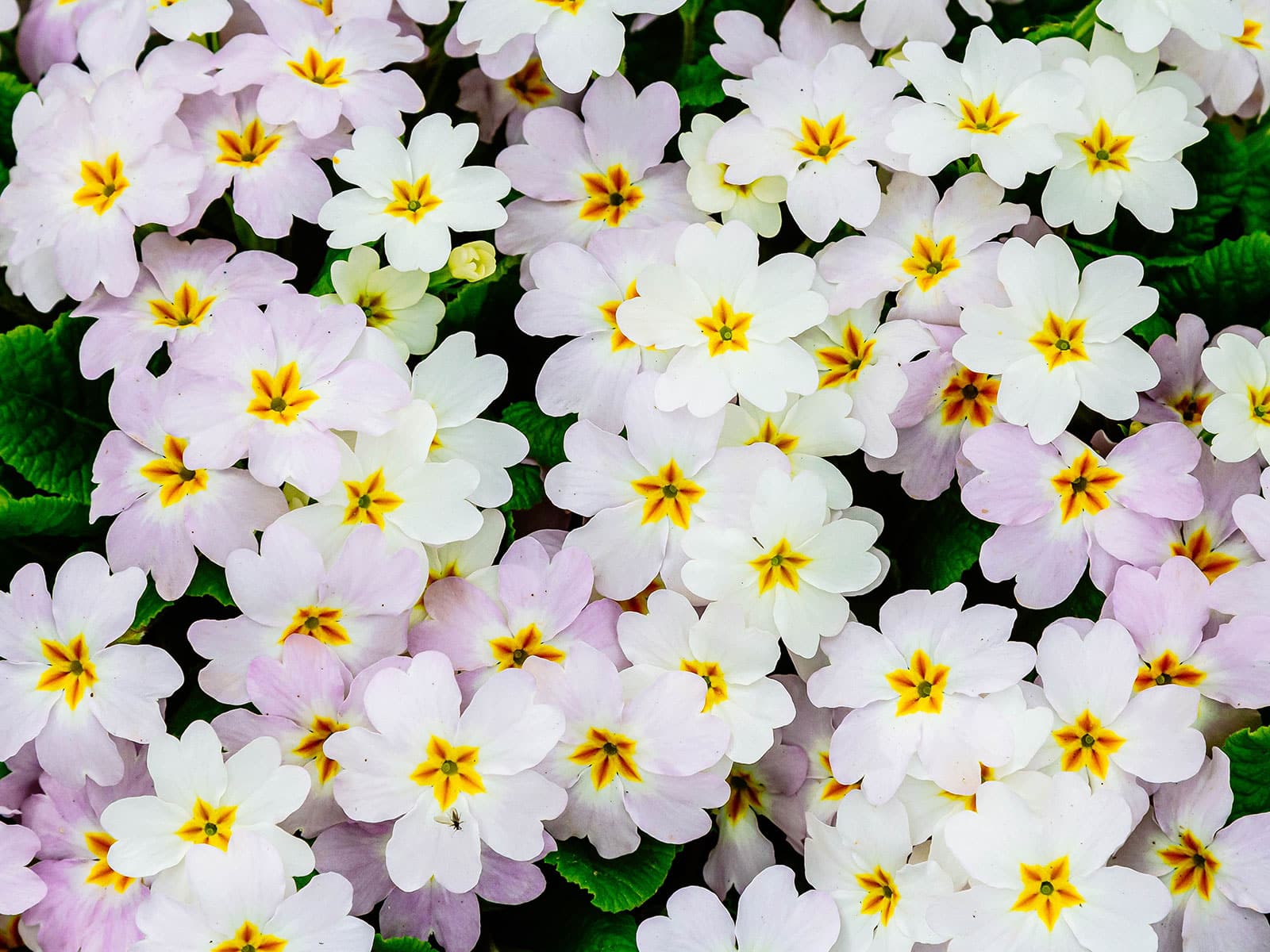
The common primrose (P. vulgaris) and cowslip primrose (P. officinalis, but sometimes listed as P. veris) are two edible species of Primula. You can eat both the leaves and flowers of these primroses, raw or cooked, and they have a mild enough flavor that they goes well with almost anything. Primrose flowers have a subtle sweetness and somewhat floral taste.
Rose (Rosa spp.)
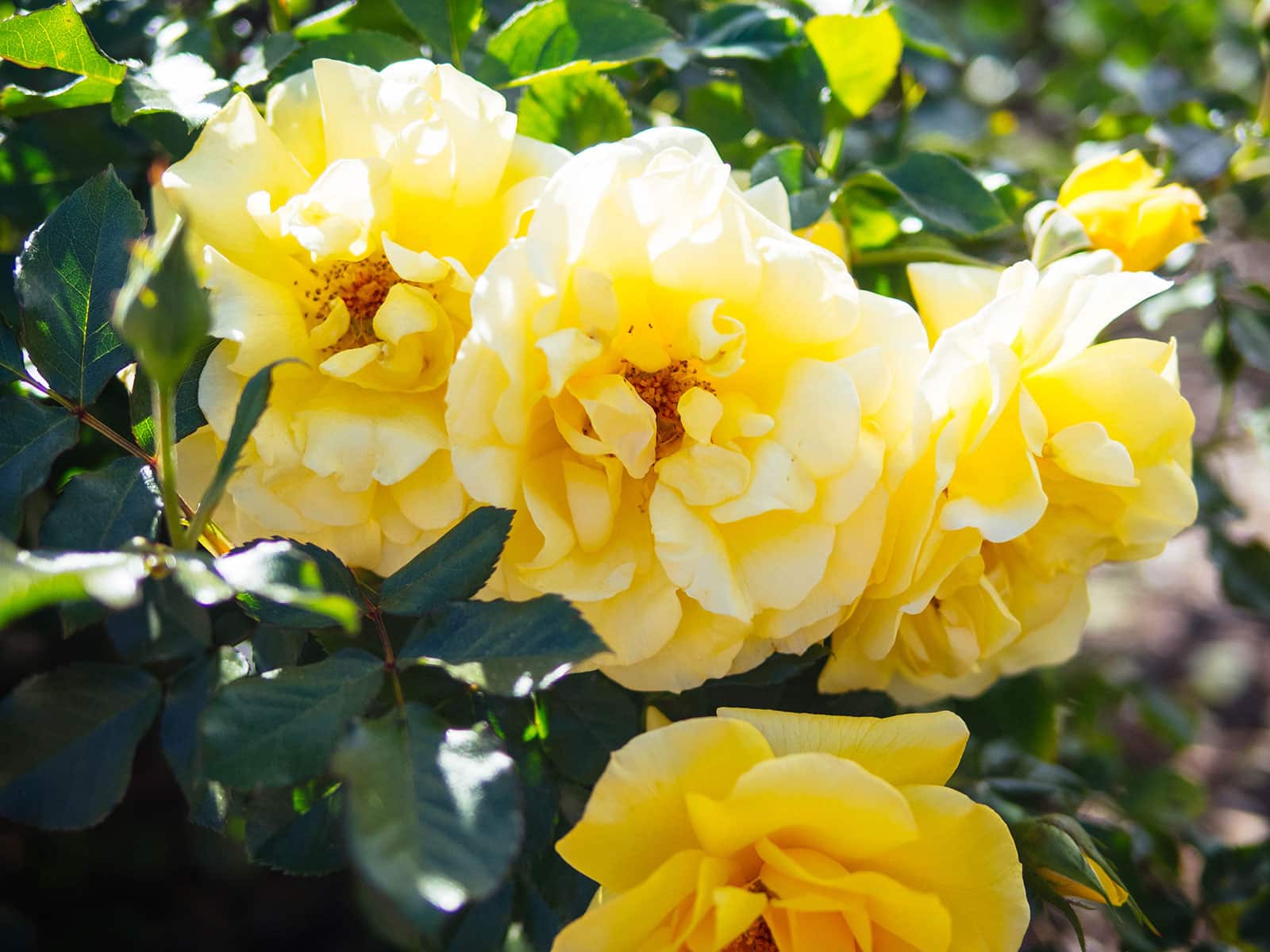
All true roses (from the genus Rosa) are edible, but the flavor depends on the type, color, and growing conditions. Some roses are tart and tangy while others are sweet and spicy. Darker-colored flowers tend to have stronger flavors, and I’ve found that the white portion of a petal (which I typically remove before eating) tends to be bitter.
Salsify (Tragopogon porrifolius, Scorzonera hispanica)
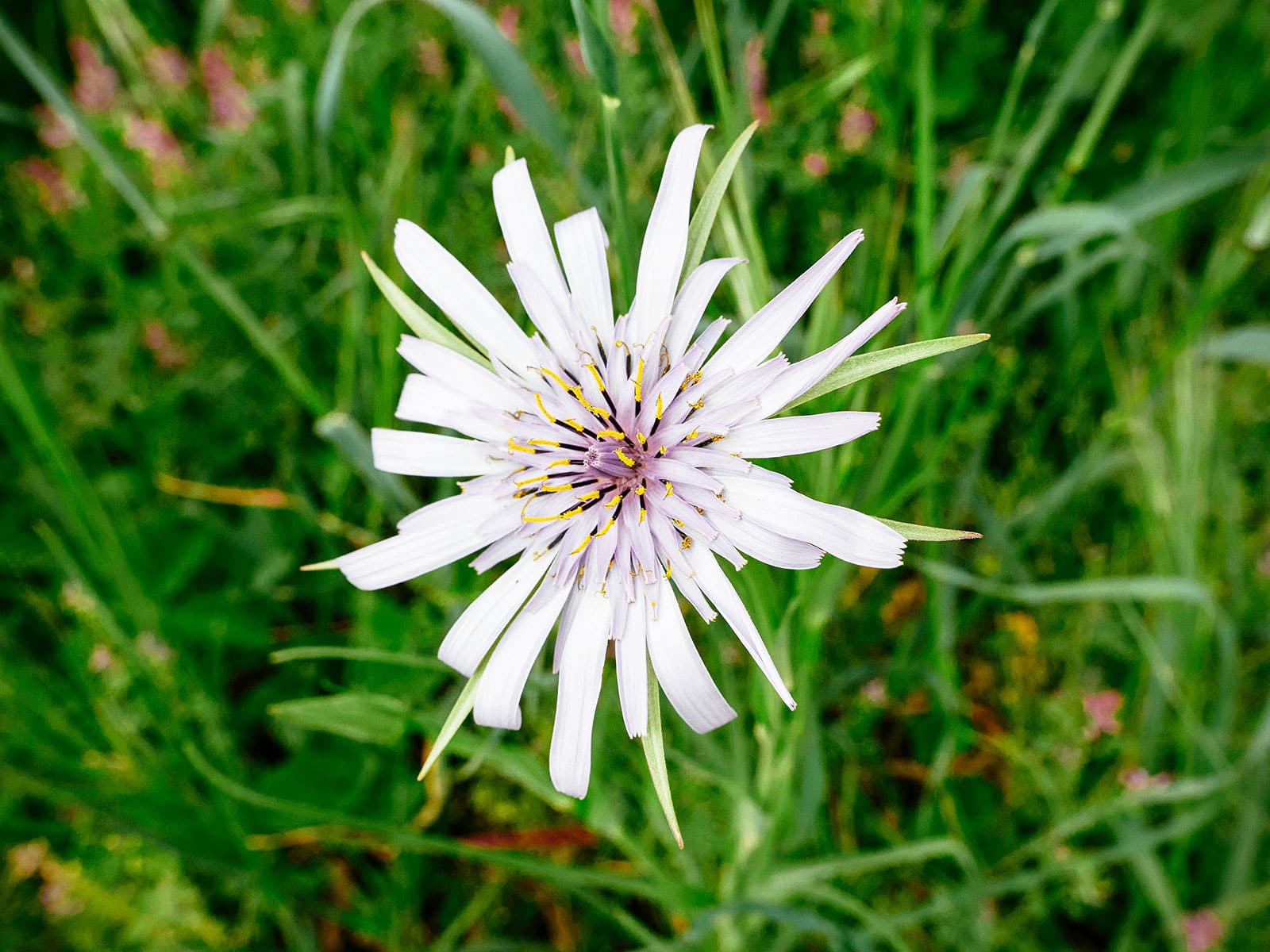
Two cultivated plants go by the common name of salsify: true salsify (or oyster plant) is Tragopogon porrifolius, and false salsify (or Spanish salsify) is Scorzonera hispanica. While that might seem confusing, both crops are grown primarily for their edible roots and both have edible flowers that are mild and nearly tasteless. You can pick and eat the unopened buds or pick the petals off to garnish a plate.
Scented geranium (Pelargonium spp.)
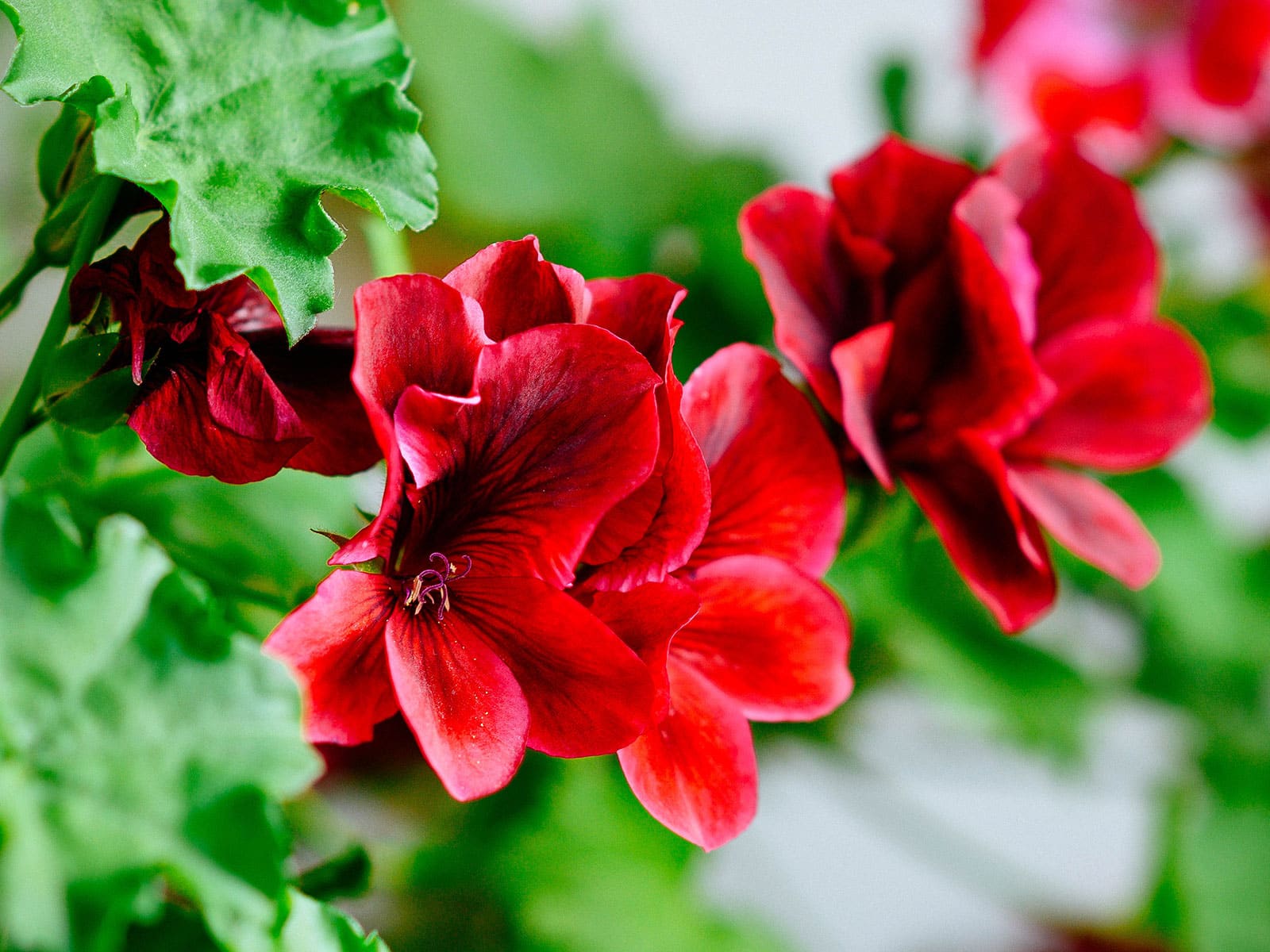
Not to be confused with plants from the Geranium genus, scented geraniums (from the Pelargonium genus) have edible flowers and leaves, and different varieties offer different flavors such as lemon, rose, or mint. (A popular one is Pelargonium ‘Citrosum,’ known for its citrusy scent and flavor.)
Scented geraniums are commonly used to make flavored syrups for cocktails and desserts, or steeped in hot water for tea. I like to make an infused iced tea by boiling a few flowers or leaves in the water I pour over my tea bags before chilling the pitcher. They add just the right amount of flavor without overpowering the tea!
Snapdragon (Antirrhinum majus)
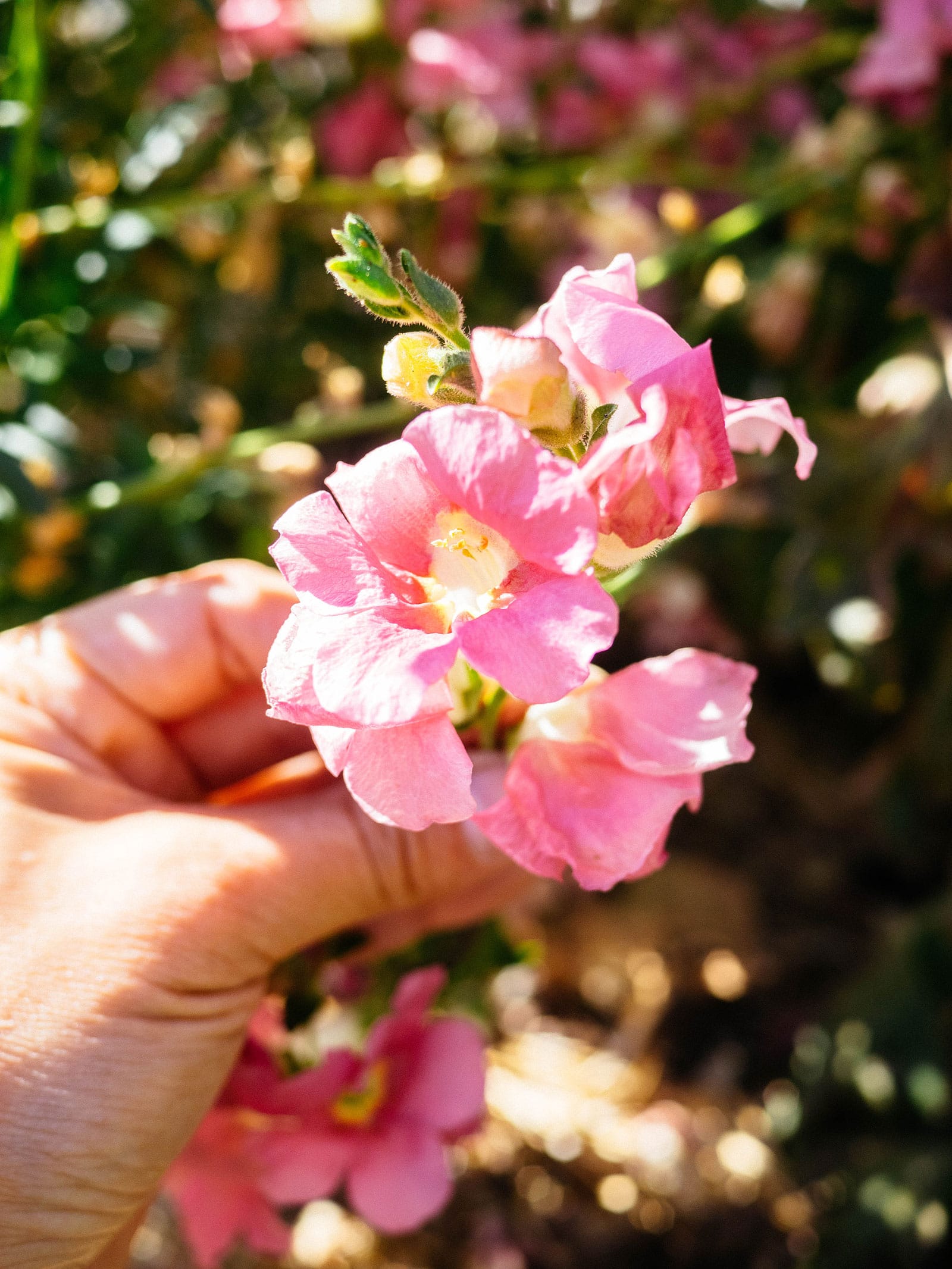
While not the most palatable of all the edible flowers out there, snapdragons offer a range of beautiful sunset colors and a unique shape that really dresses up a plate. They tend to be more on the bitter side, so use them sparingly in a salad (something with a punchy vinaigrette helps tame the bitterness).
Squash (Cucurbita moschata, Cucurbita pepo, Cucurbita maxima, Cucurbita argyrosperma, Cucurbita ficifolia)
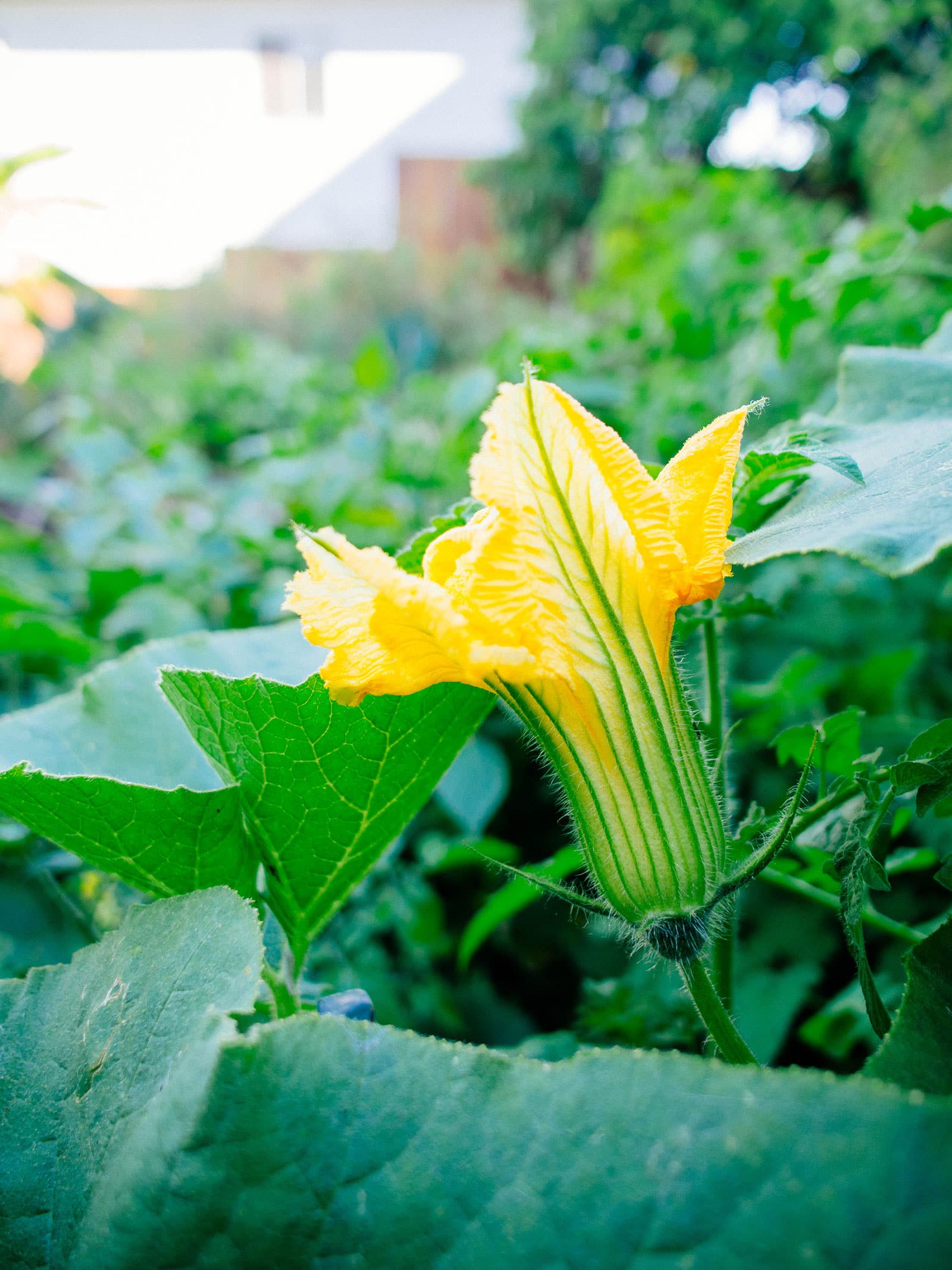
All the male and female flowers from your squash, zucchini, pumpkin, and gourd plants are edible, and they’re so good they can stand as a vegetable on their own. (I love harvesting the little-known edible parts from plants I’m already growing!)
Squash flowers are mild and delicate in flavor, often tasting like a subtle version of the squash itself. Because of their size, they’re usually stuffed with cheese and then baked or fried, but I also like them sauteed in butter and spices or chopped up to use as a filling in tacos and quesadillas.
Stock (Matthiola incana)
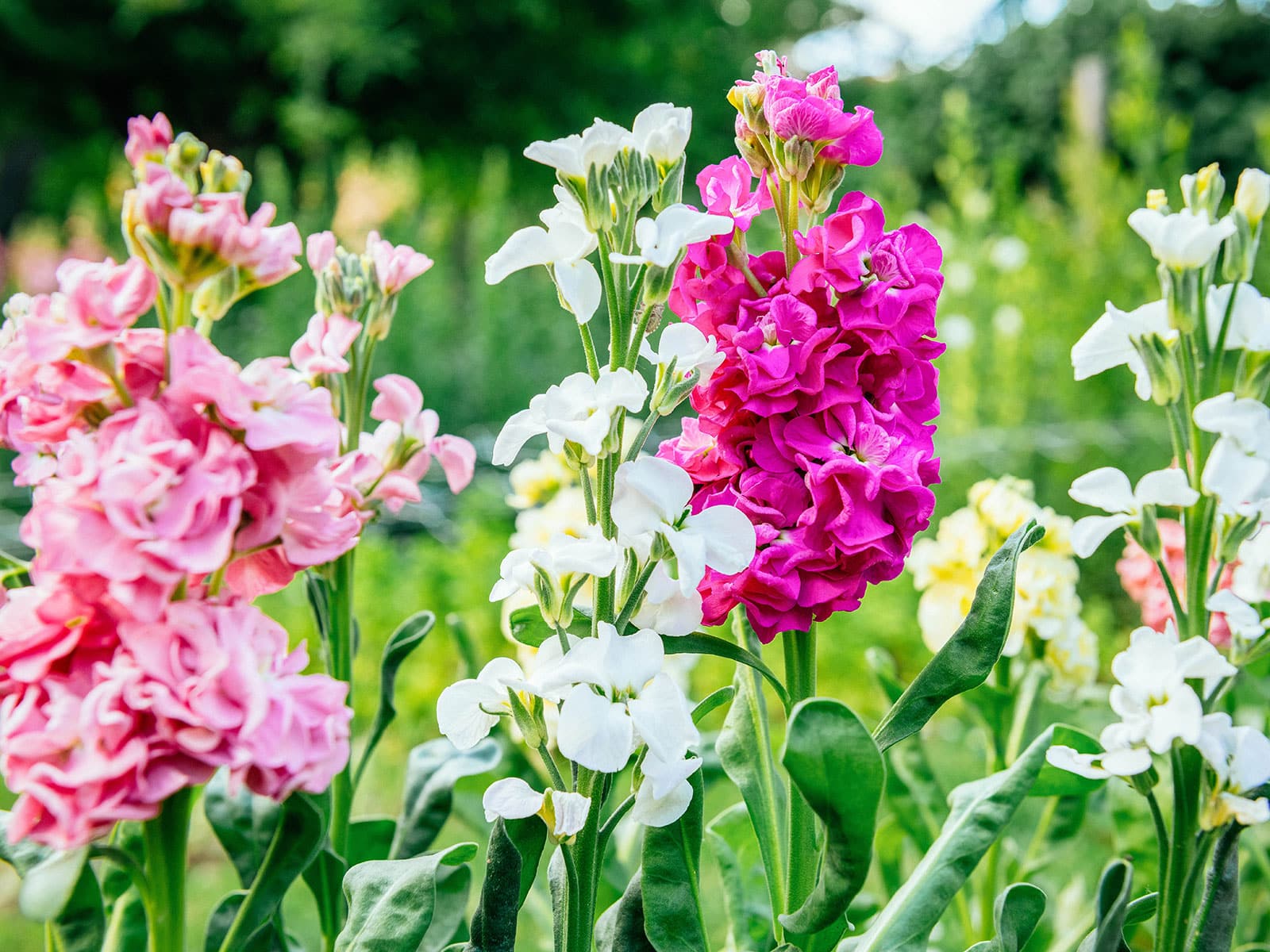
Delightfully fragrant stock is one of my favorite smelling flowers! It’s a bit peppery with hints of cinnamon, nutmeg, and clove, and this is exactly what the petals taste like too. They add such a beautiful flourish and flavor to a summer dish.
One of the more surprising aspects of stock is that it’s part of the brassica family—the same family that includes common vegetables like cabbage and kale. The leaves, seed pods, and roots are also edible, though less commonly consumed. I do love the seed pods though! They taste like radishes and can be used and eaten the same way as radish pods.
Sunflower (Helianthus annuus)
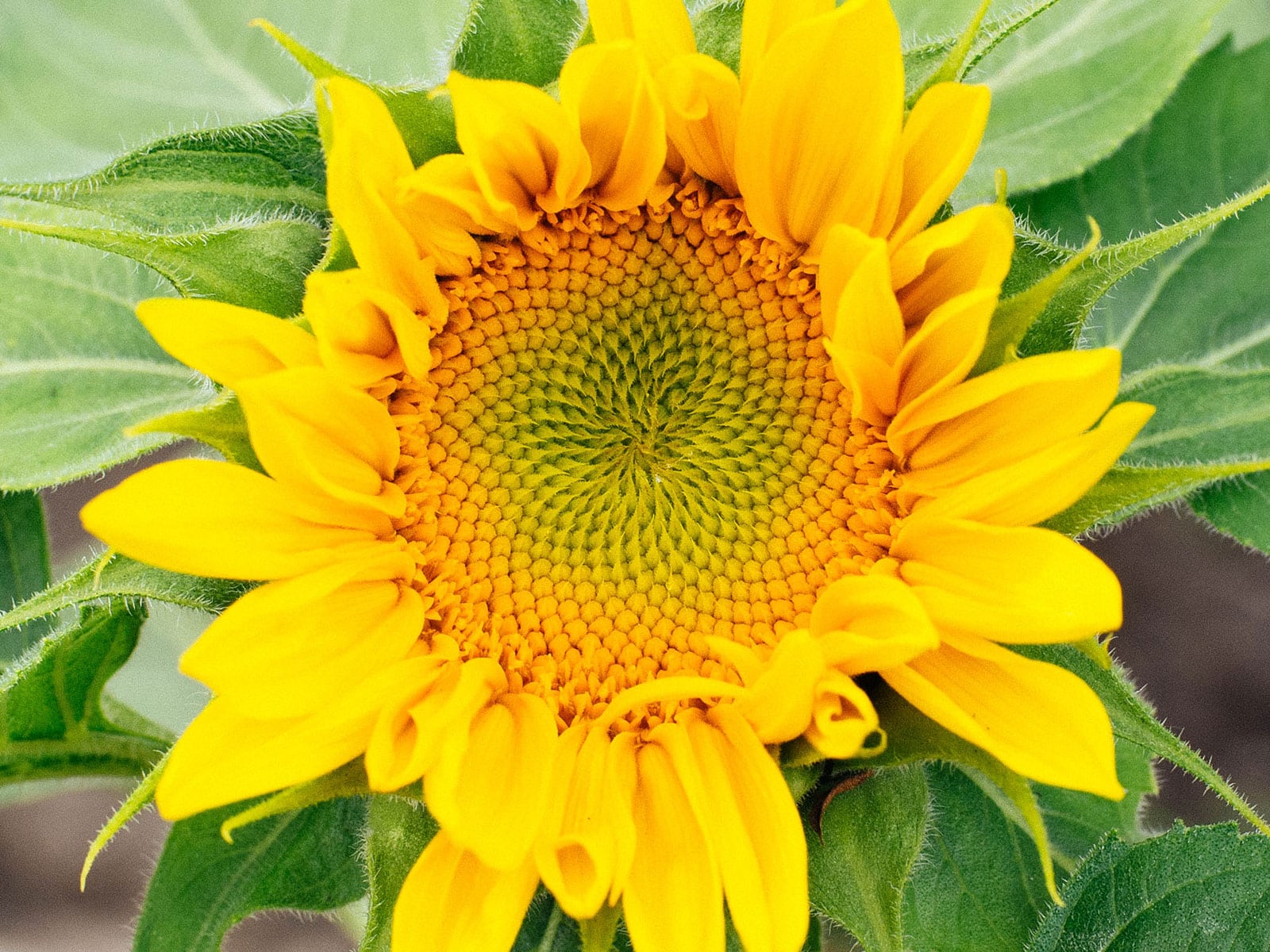
Sunflowers are entirely edible from root to seed, but my favorite parts are the flowers. You can use sunflower buds (which taste just like artichokes when steamed or sauteed), individual petals (which add a somewhat nutty flavor to salads and sandwiches), or whole sunflower heads with immature seeds (which are really fun to grill or roast, and eat like corn on a cob).
Blanching or boiling sunflower buds also leaves you with a pot of tea or broth that tastes like liquid sunflower seeds!
Tulip (Tulipa gesneriana)
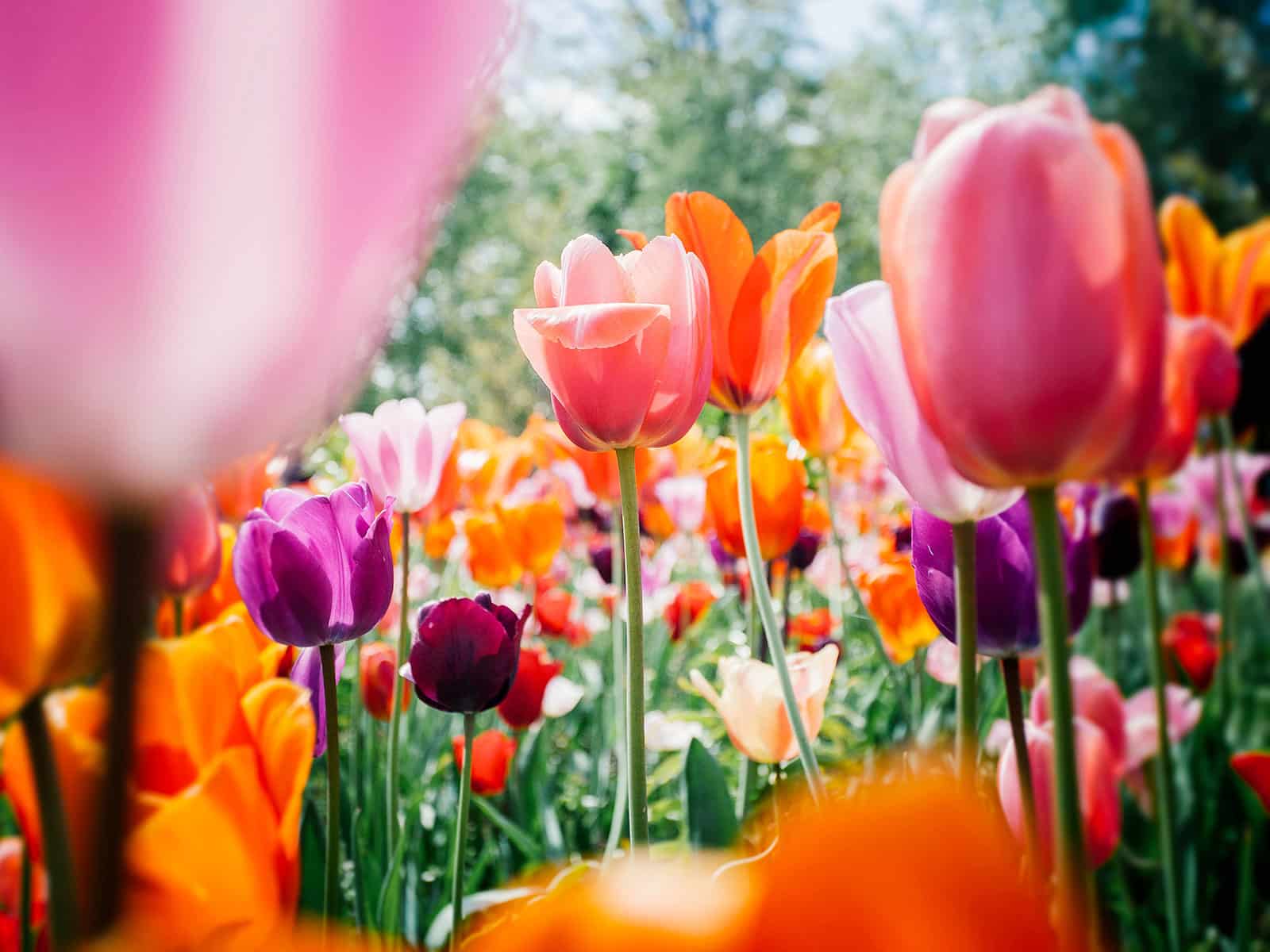
It’s a little-known fact that garden tulips are edible, and the bulbs themselves were a famine food during World War II (but they have to be prepared correctly with the centers removed). Tulip petals, on the other hand, can be eaten raw and offer a much more pleasant culinary experience.
Depending on the variety, tulips may taste like peas, beans, cucumbers, or nothing at all. The petals can be used to hold dips or light fillings (for appetizers), but if you want to put a whole blossom in a salad, be sure to remove the pistil and stamens first.
Viola (Viola tricolor, Viola odorata, Viola cornuta, Viola hybrida, Viola x williamsiana)
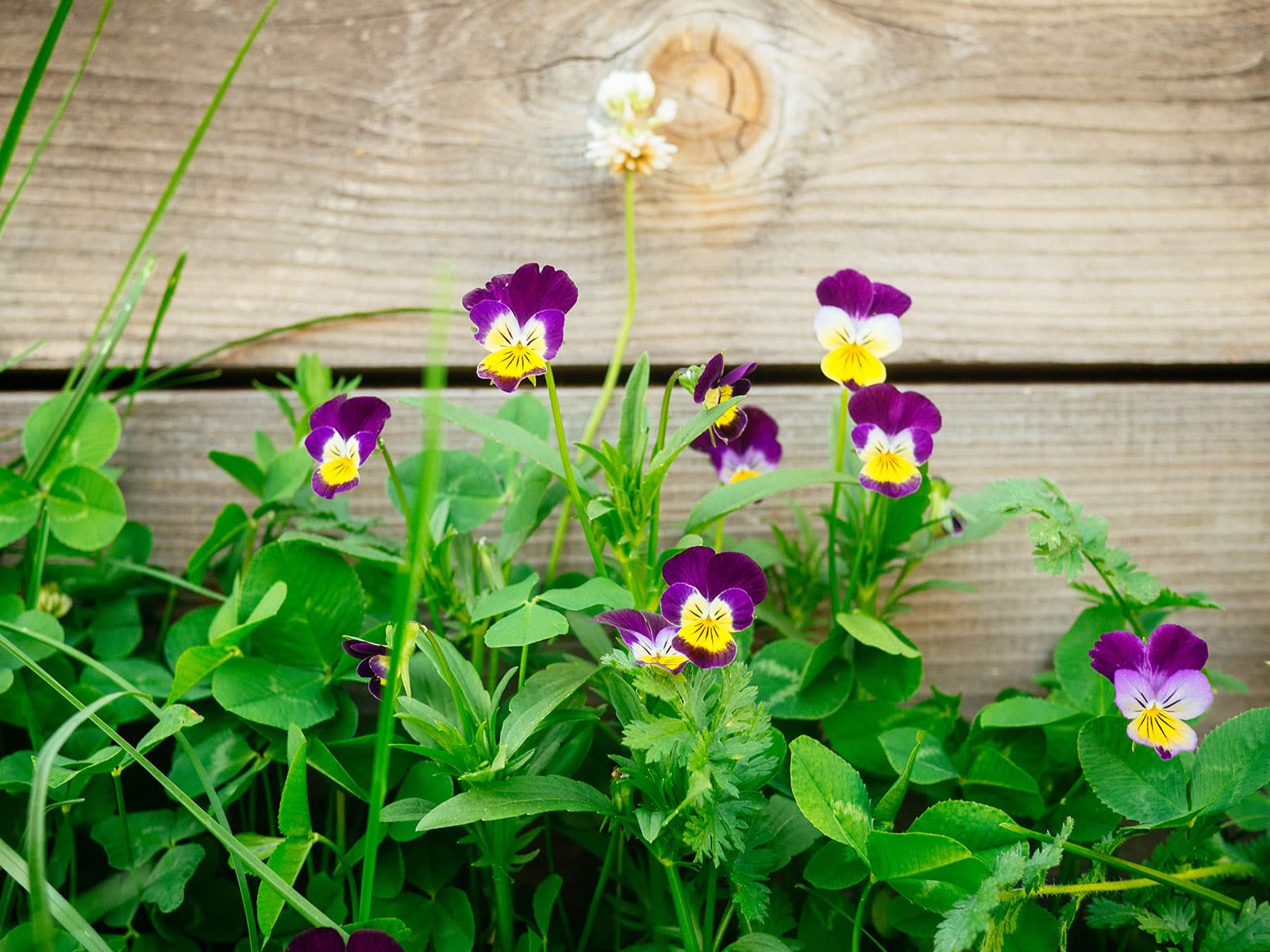
Violas have a range of flavor profiles, from mild to sweetly floral. Johnny jump-ups (Viola tricolor) are one of my favorites. They pop up in my garden every year and are especially winter-hardy flowers, even blooming when there’s still snow on the ground. The tiny flowers have a light wintergreen flavor.
I also adore sweet violets (Viola odorata), as the leaves are edible (tasting like spinach) and the flowers have a classic, lightly perfumey flavor that reminds me of violet candy.
Yarrow (Achillea millefolium)
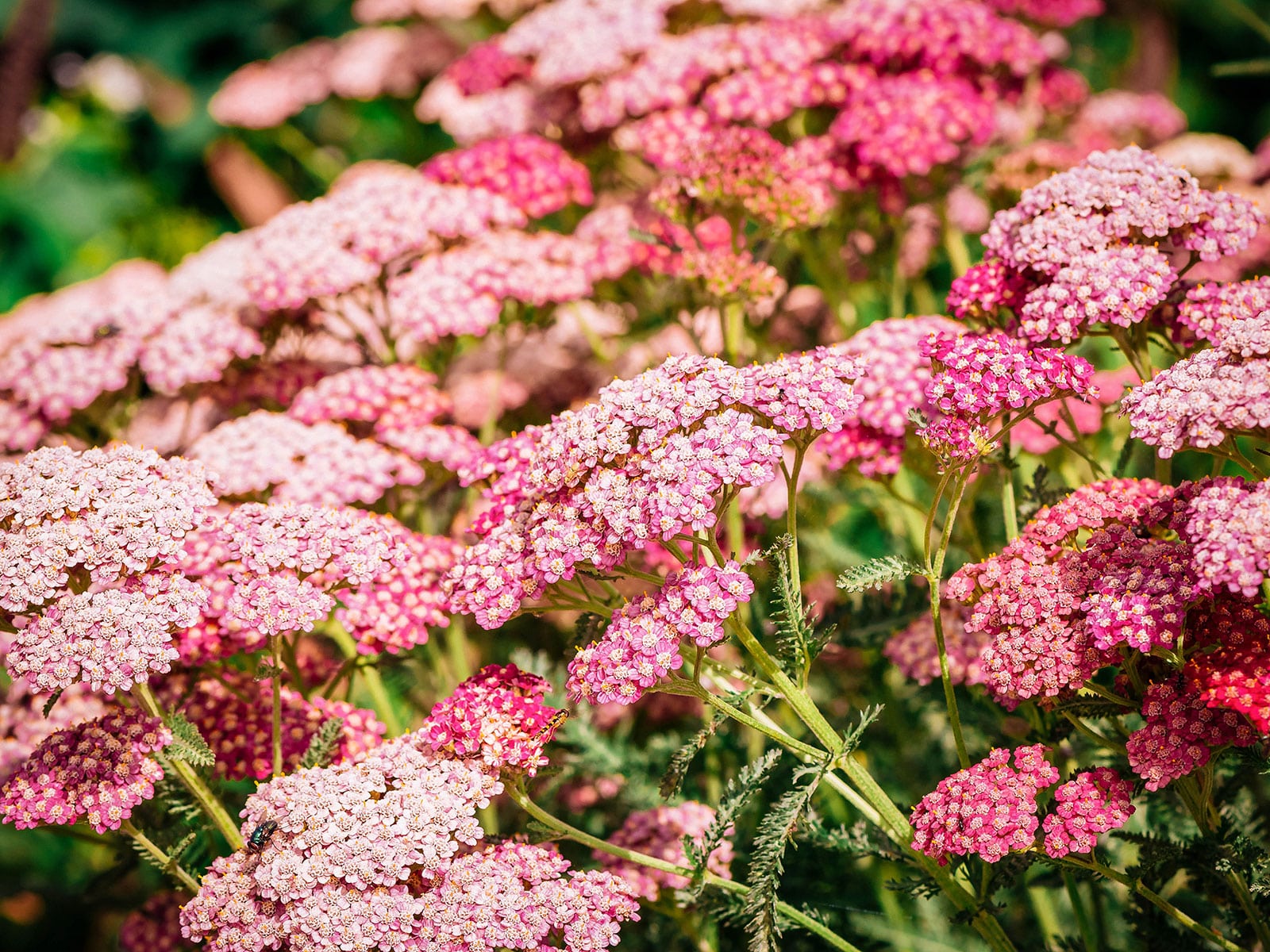
Yarrow is often grown as an ornamental plant or a ground cover, but it’s actually an ancient herb with lacy foliage and millions of dainty flowers. While the leaves are on the bitter side, the flowers have a sweeter flavor that reminds me of anise or tarragon. I especially like adding small clusters of raw flowers to my salads or using them to garnish soups, stews, and roasts.
Zinnia (Zinnia spp.)
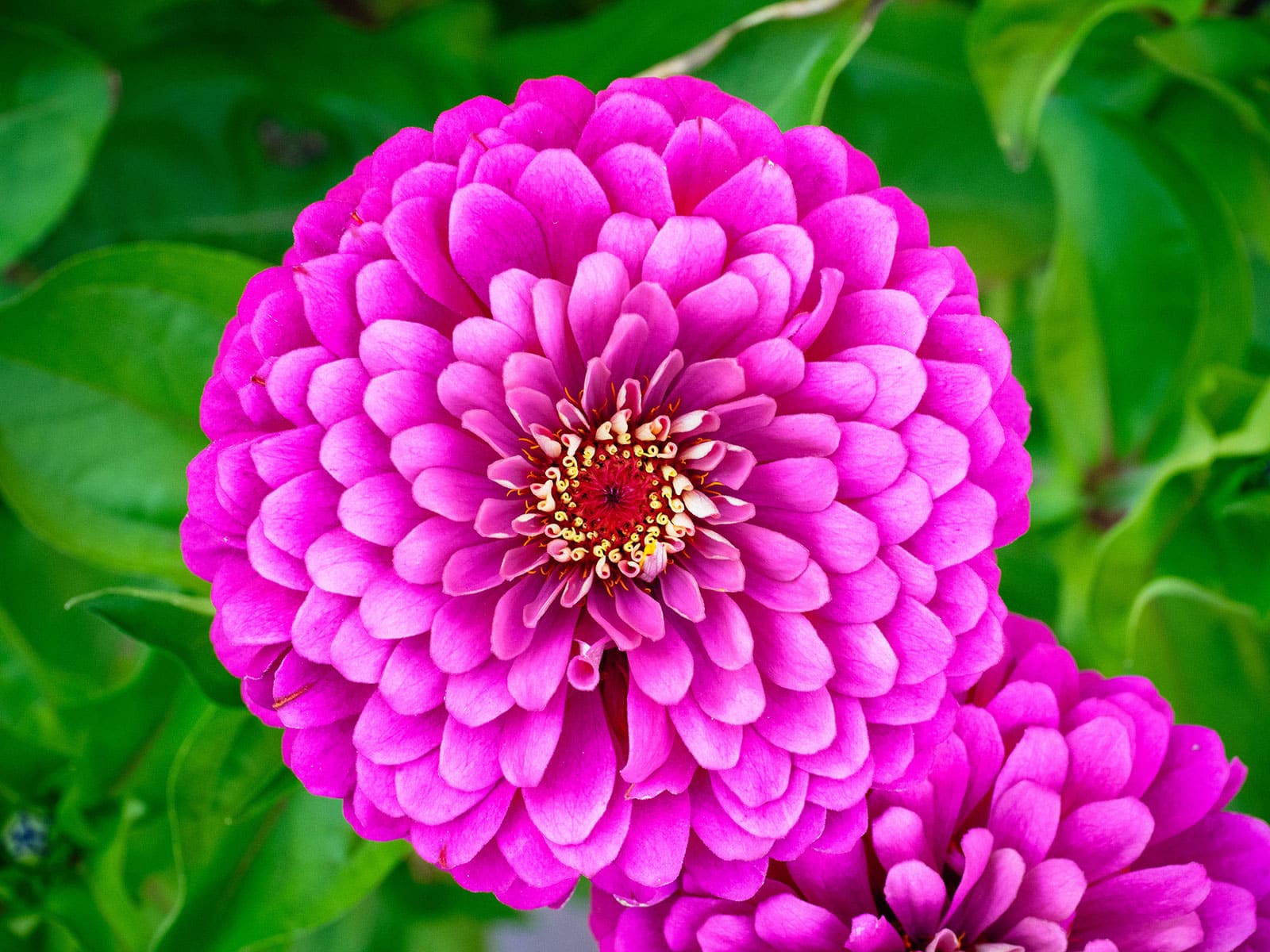
I love growing zinnias in my edible flower garden because they grow fast and provide lots of blooms all season long! Flavor-wise, they range from bland to a little bit bitter, making them better suited for savory dishes; I like adding the petals as a colorful garnish on salads, roasted meats and vegetables, noodle and rice bowls, or charcuterie boards.


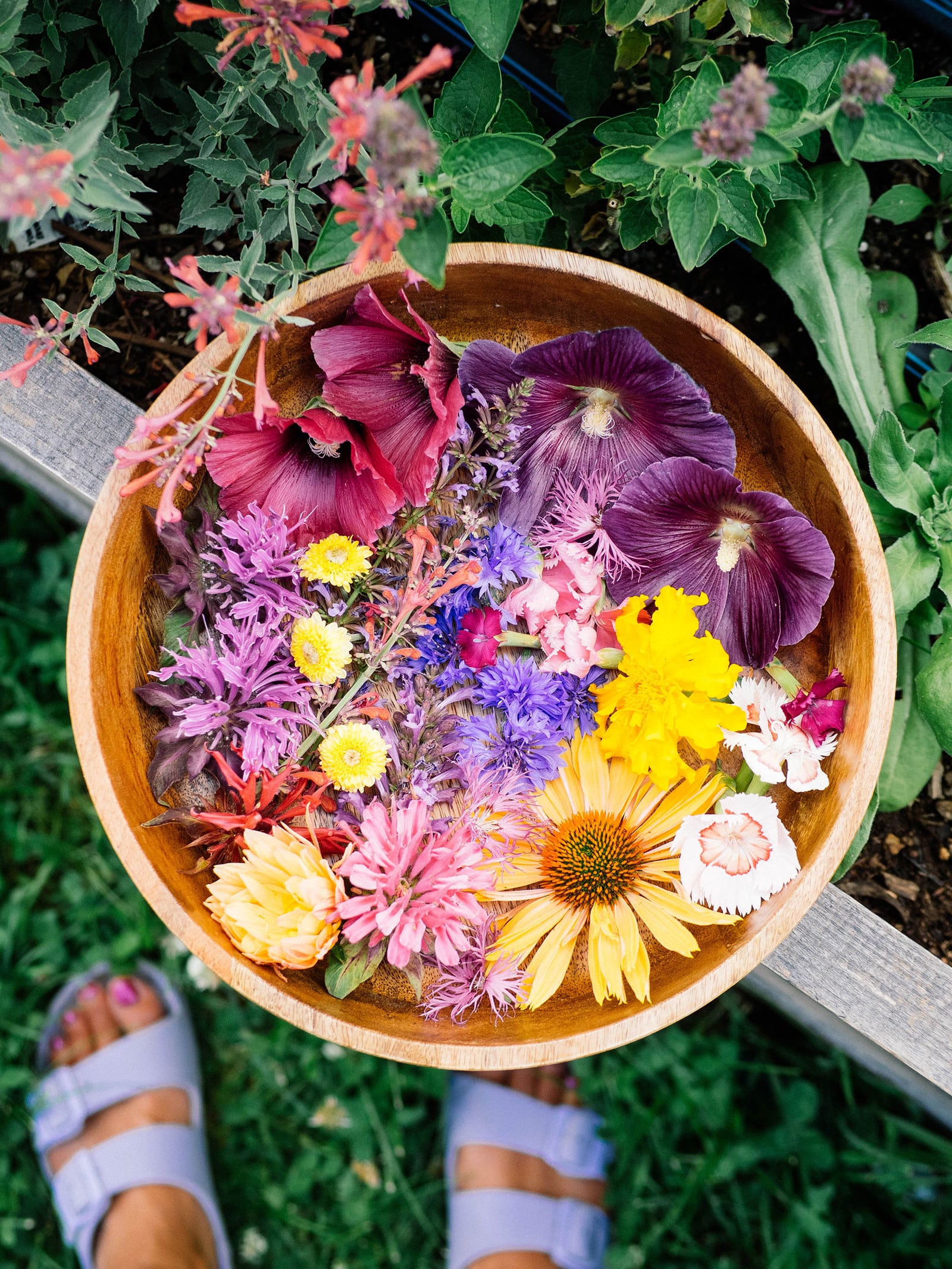
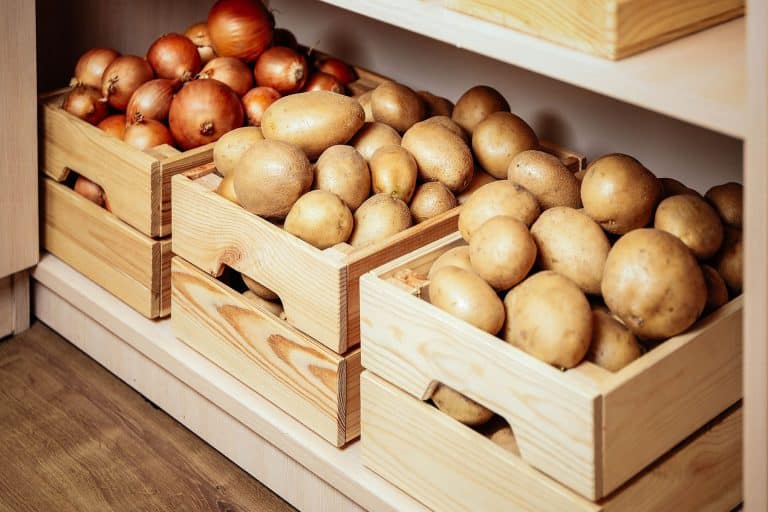
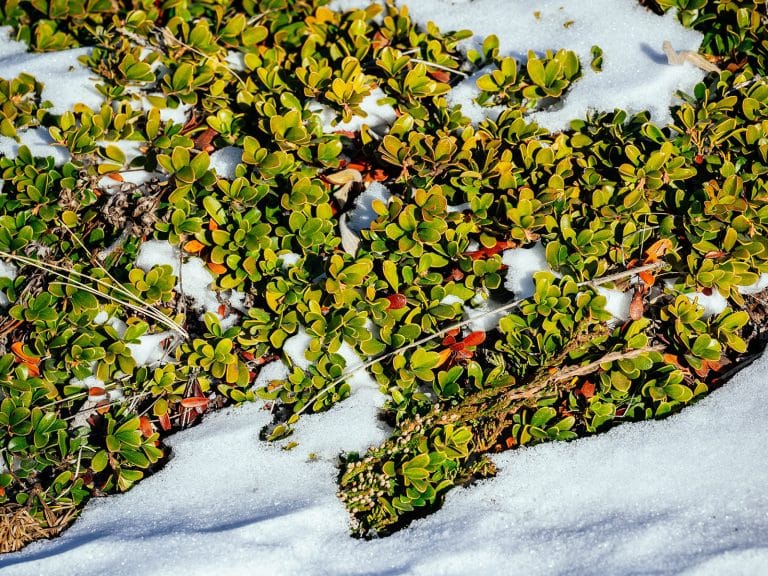
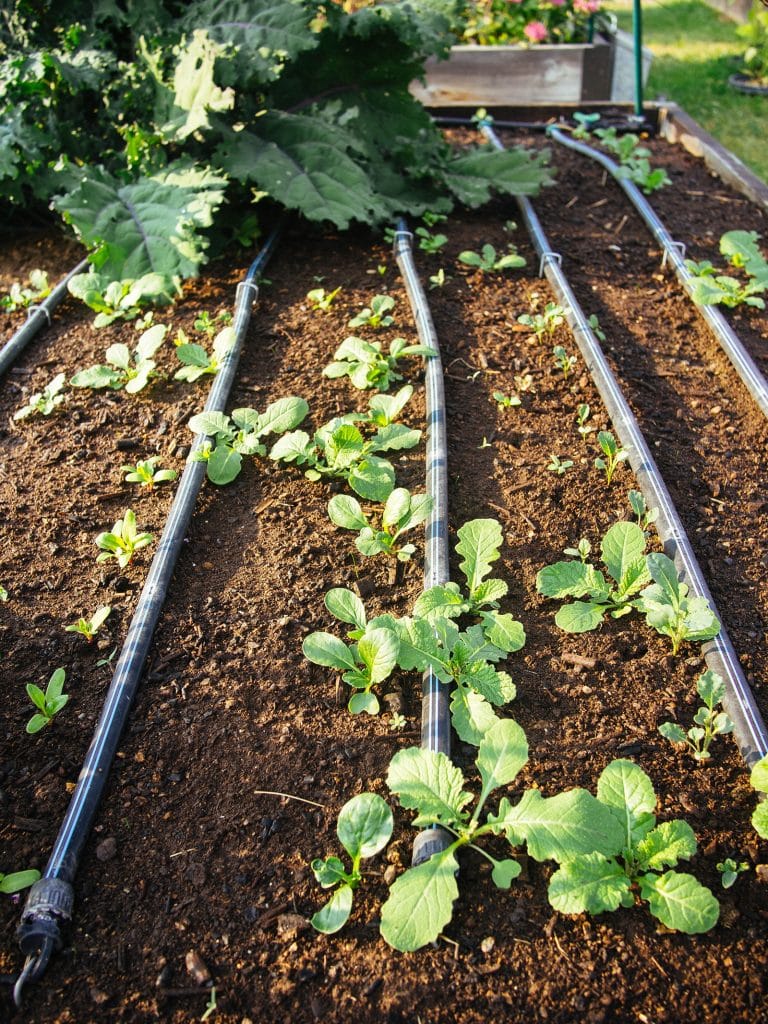
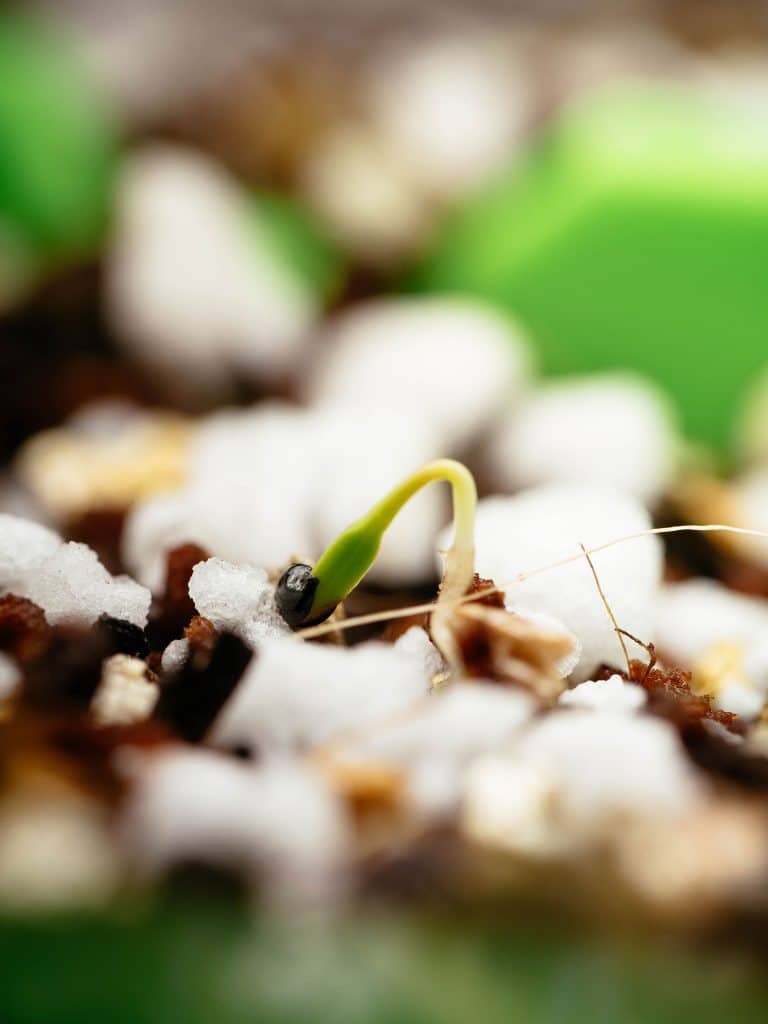


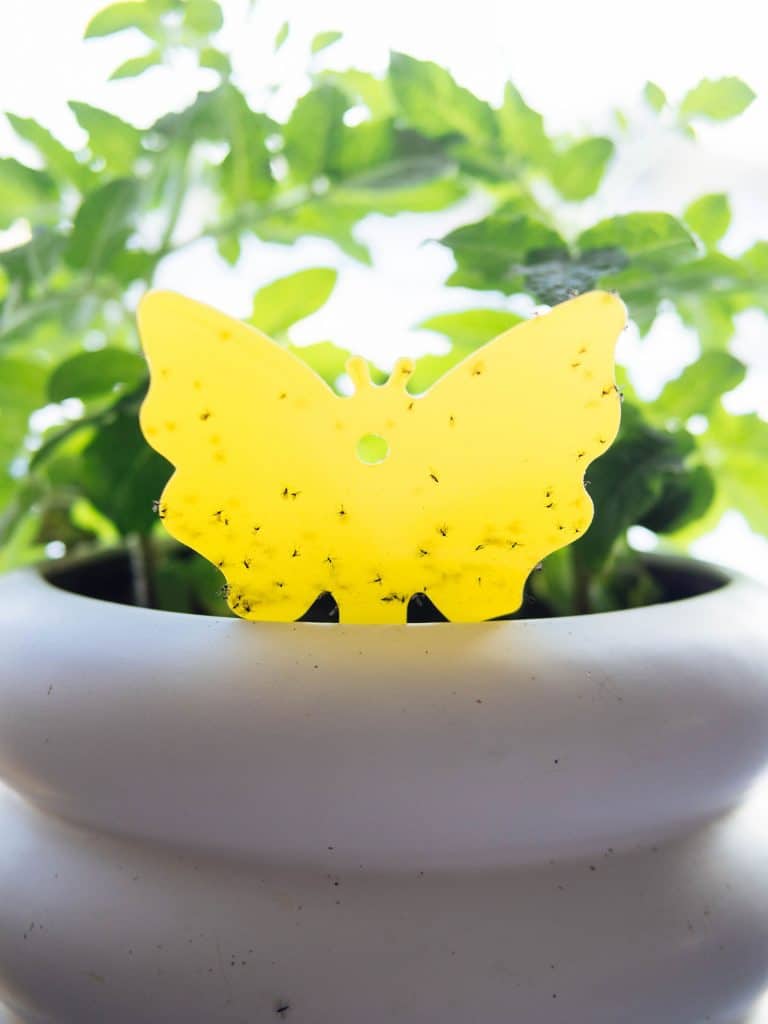
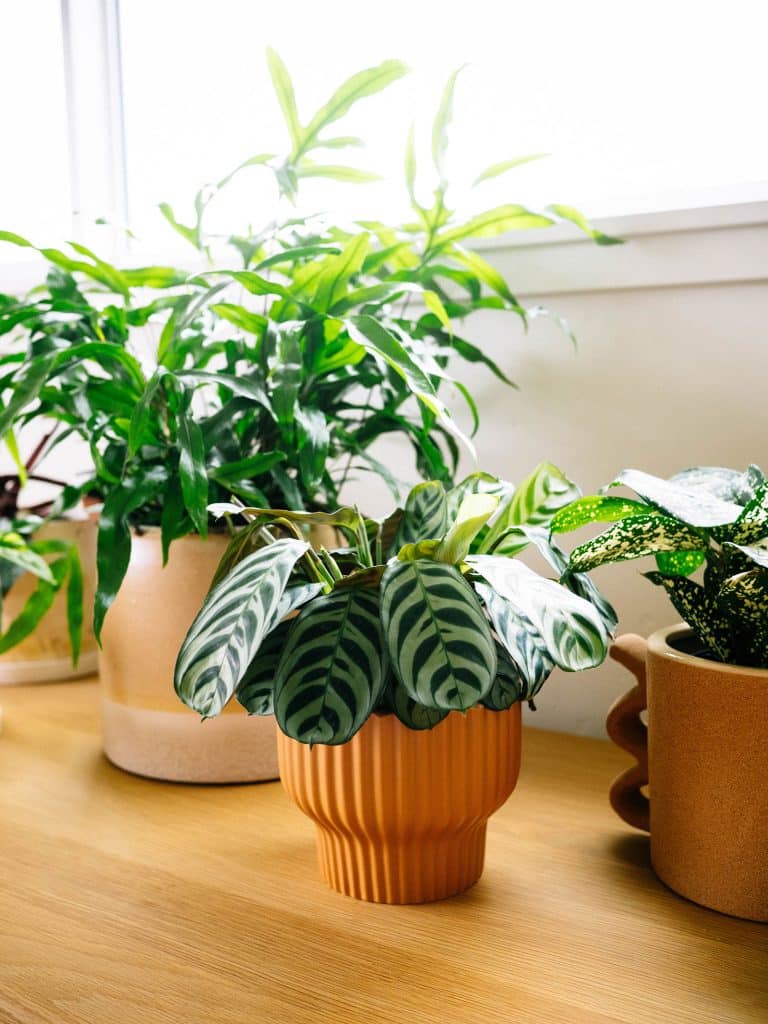
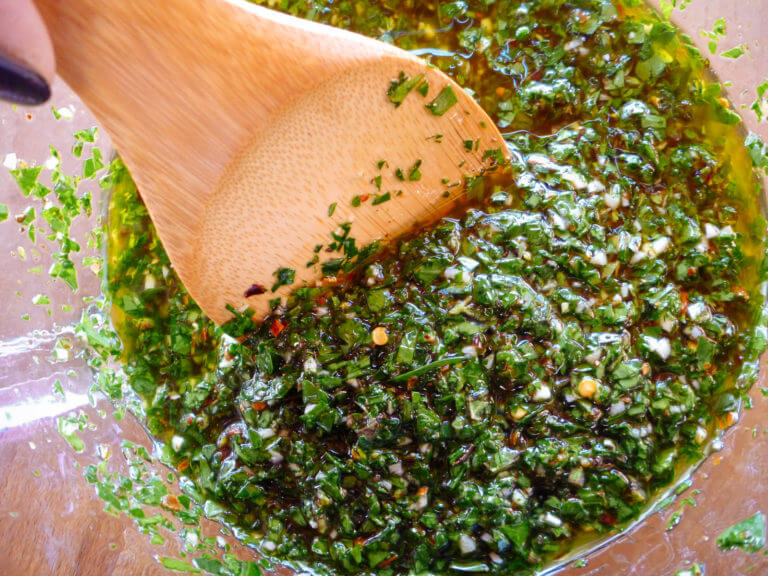

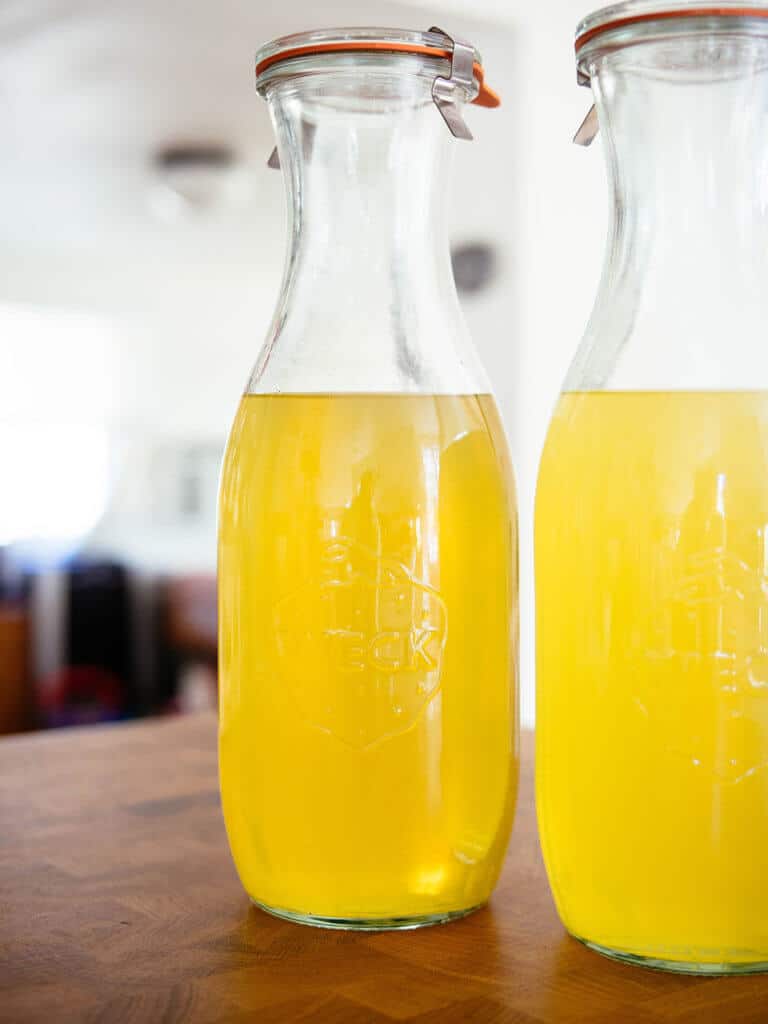
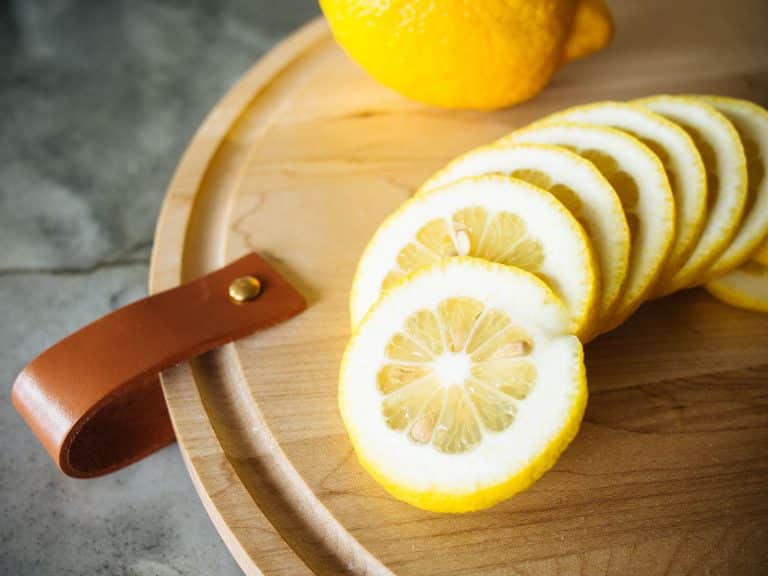
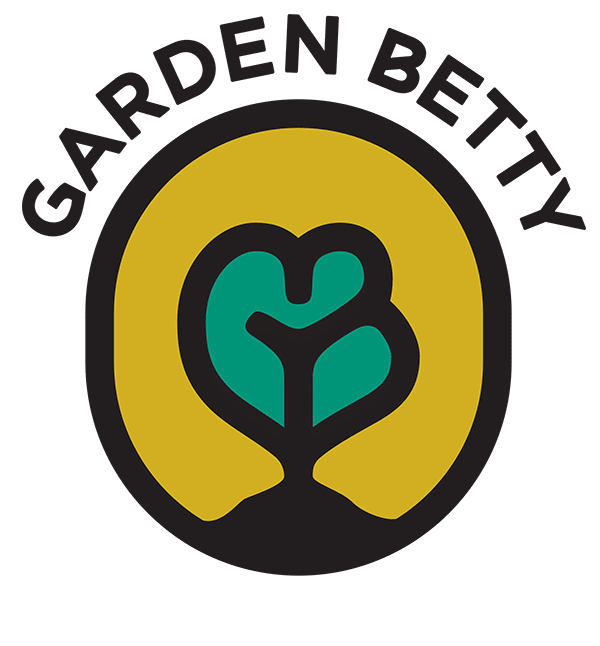
Great! I learned of a few edible flowers new to me. In the genus Viola, most violets have edible greens and edible flower. I read somewhere that a yellow-flowered violet is toxic, but the one’s I’ve encountered are scattered thinly on the forest floor: I wouldn’t eat any part of them because in my experience (in Massachusetts) they are scarce and deserve protection, not consumption. In 1960 (I think) my ex wife (since deceased) and moved onto a parcel in Western Massachusetts that had a patch the size of a suburban vegetable garden containing a pure stand of blue-flowered violets . My wife had read that the flowers make an excellent jelly so we spent hours picking the tiny blooms. After processing, we ended up with just one pint of delicately flavored jelly. We vowed never again to exert energy on a project with such minimal results. It didn’t matter. The violets had disappeared the next time I looked for them where we had harvested hundreds ( thousands?) of the tiny flowers. Violet leaves are another matter. They are among the first edible flowers in spring, tasty, and promptly recover from a once over harvest. In the garden they generously re-seed. I exercise restraint in eliminating them as weeds as they are very productive of potherbs. On holding the edge of my permanent mulch garden in place, in early spring they pushed aside a mulch mainly consisting of sheets of bark, a byproduce from splitting firewood.